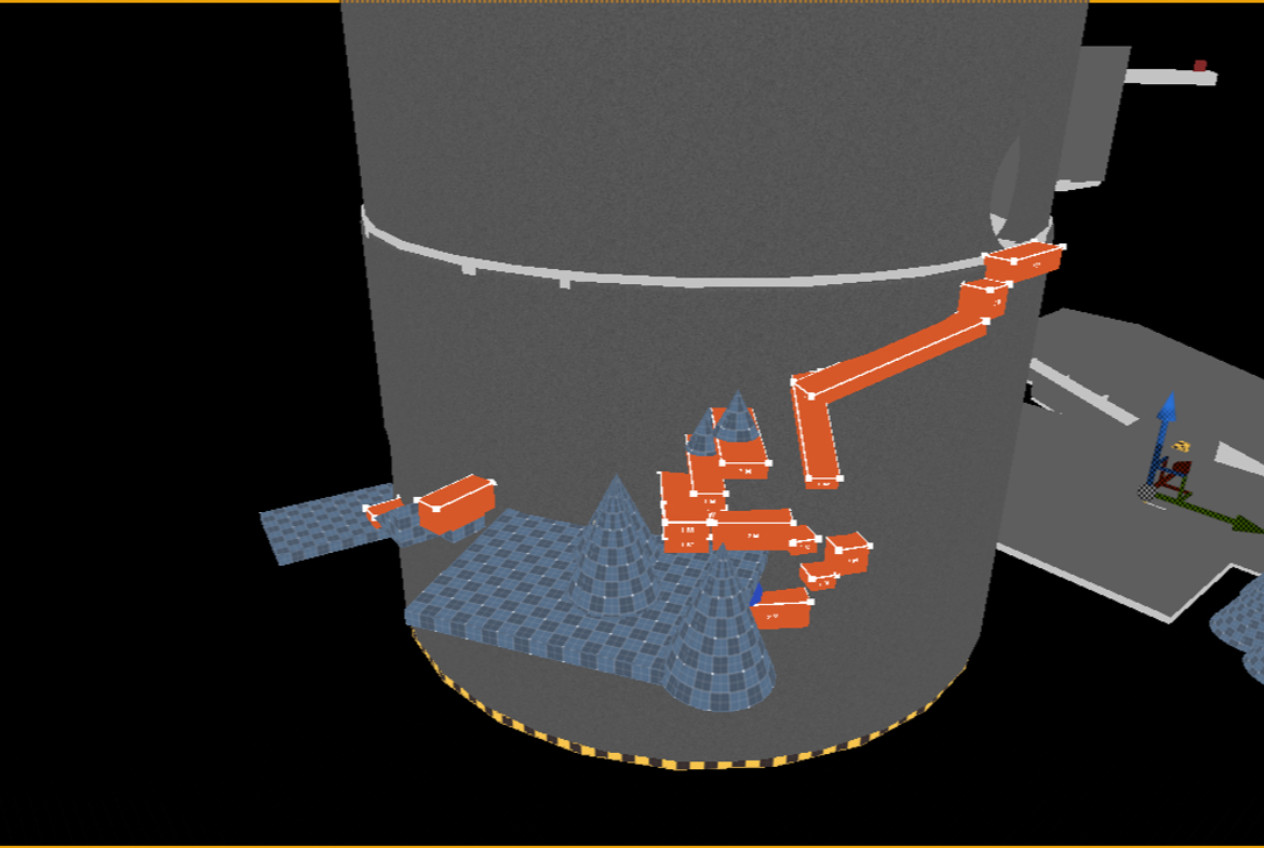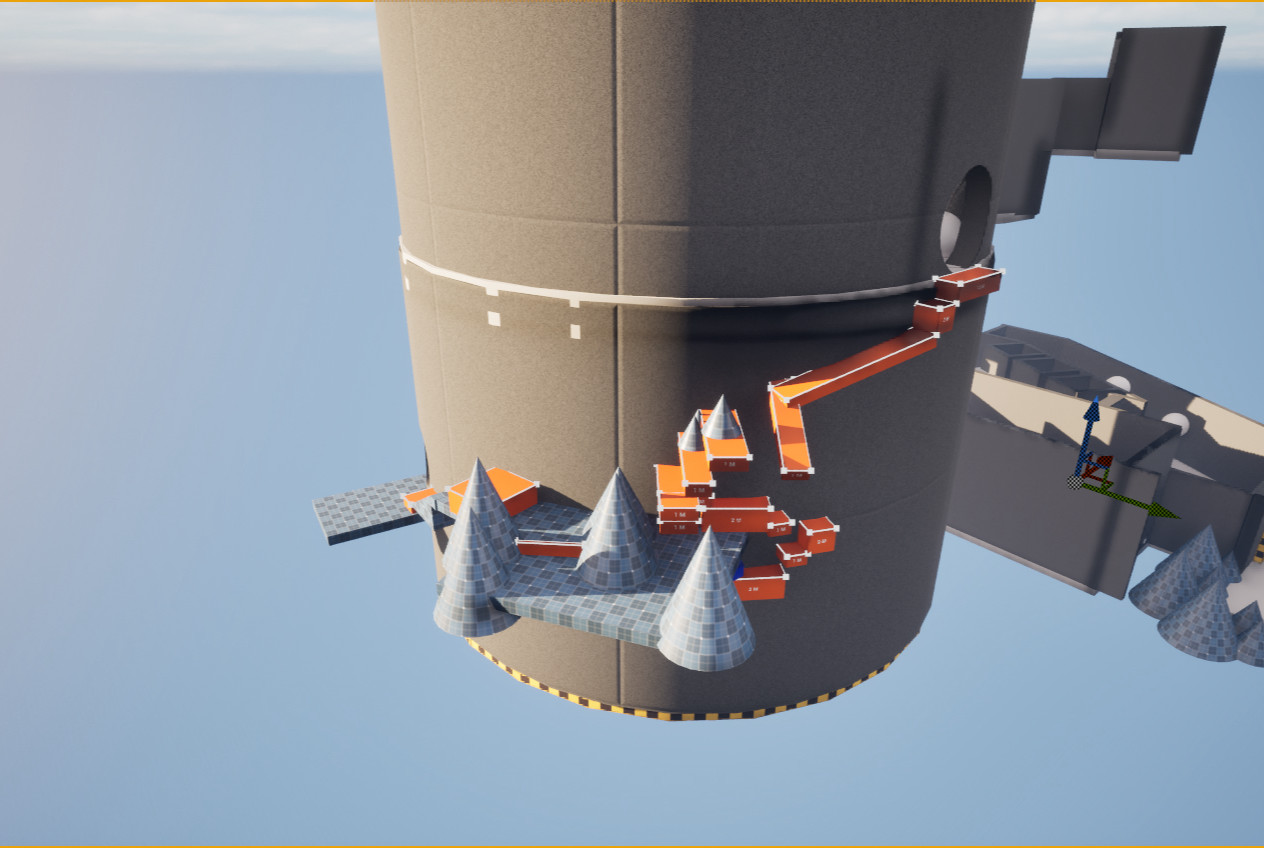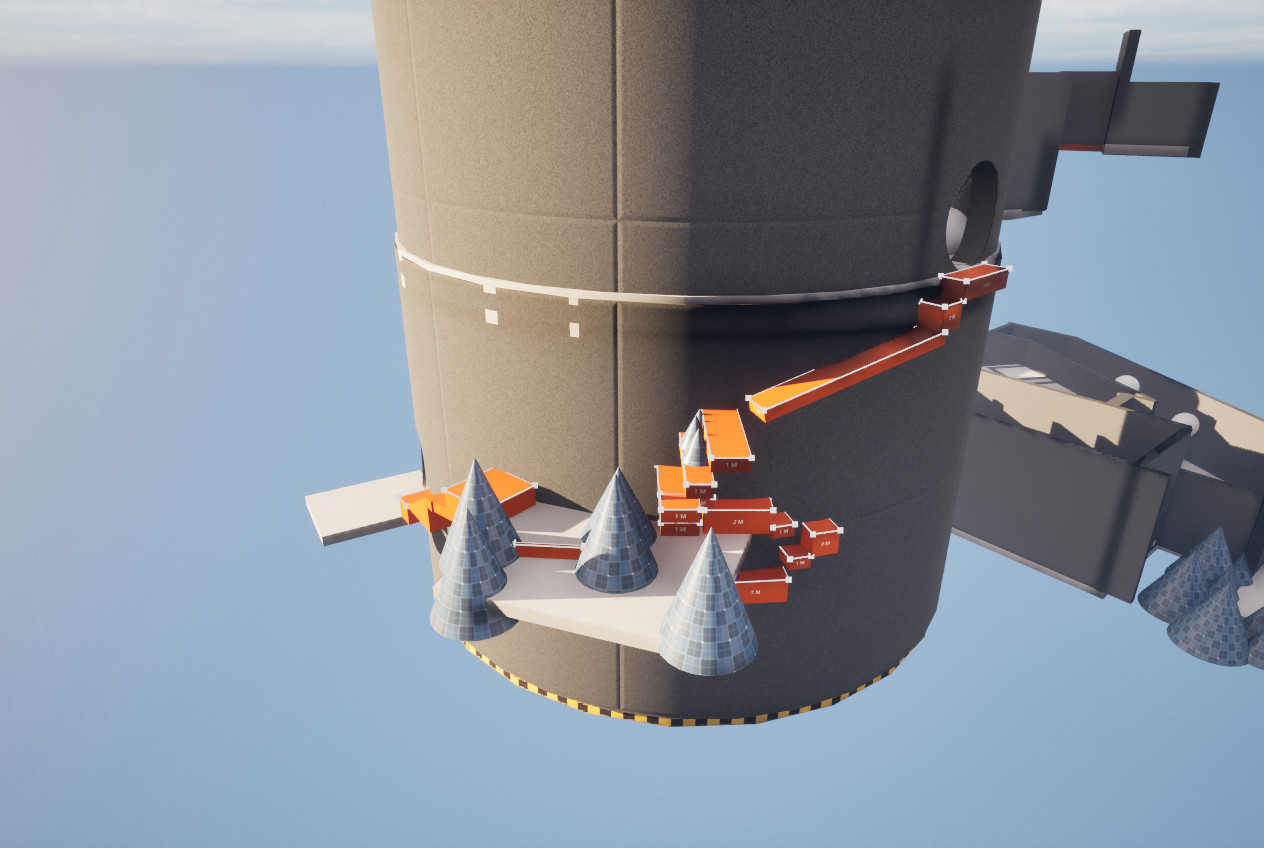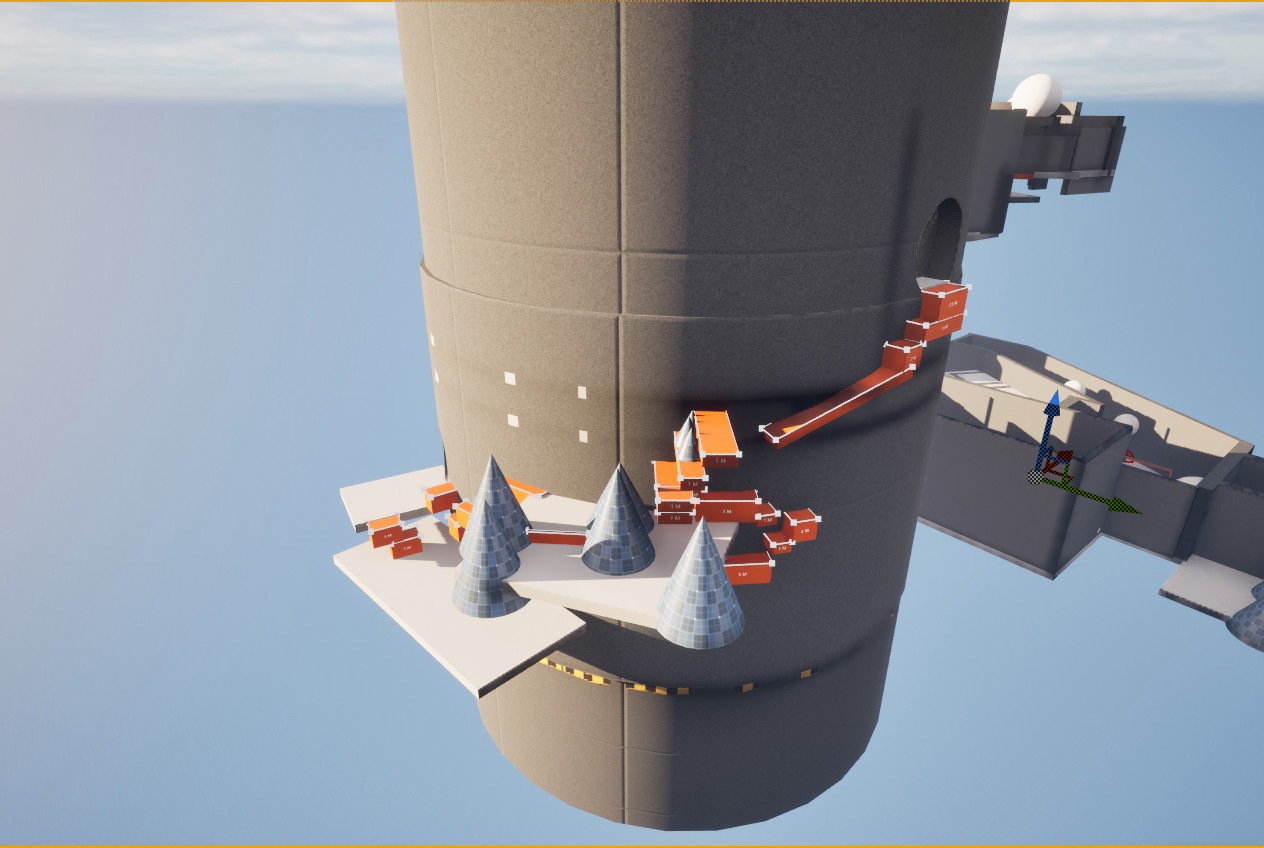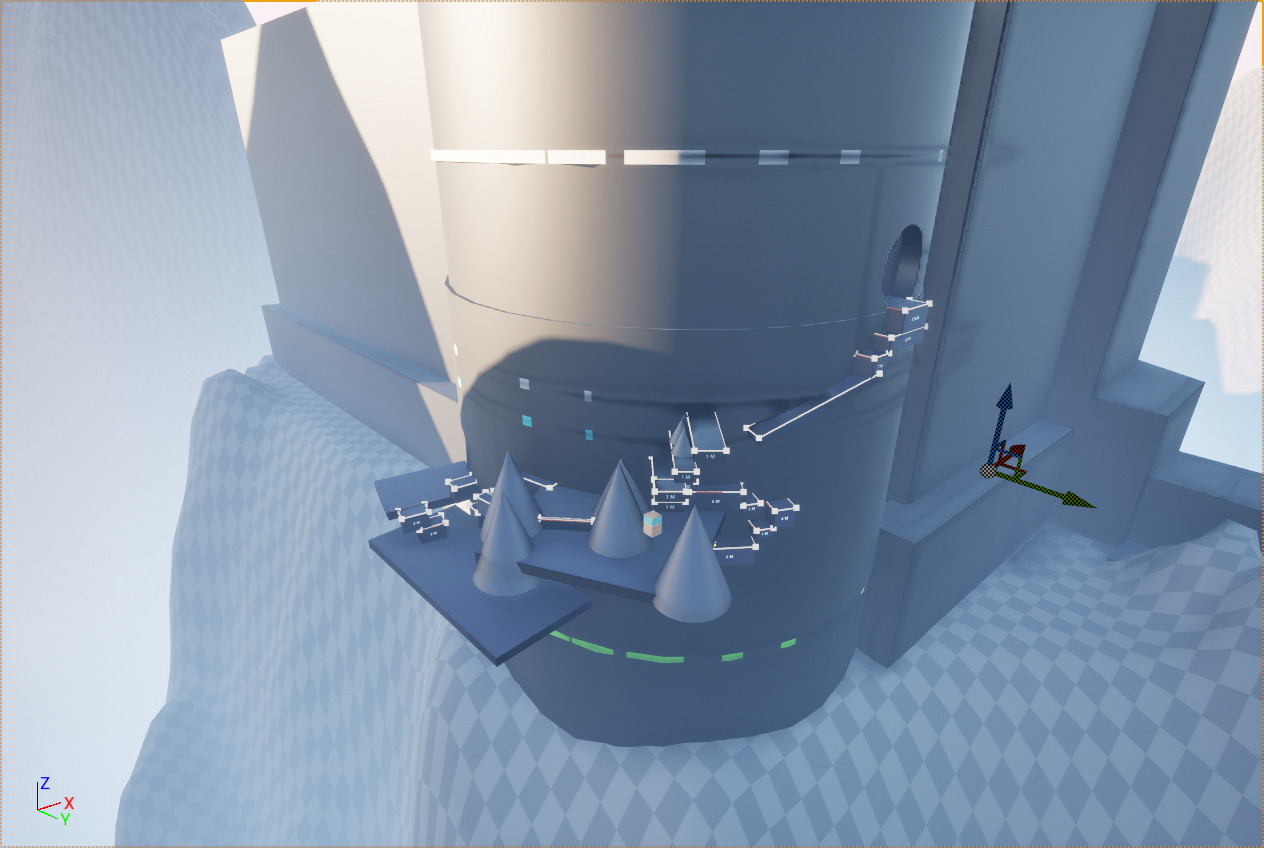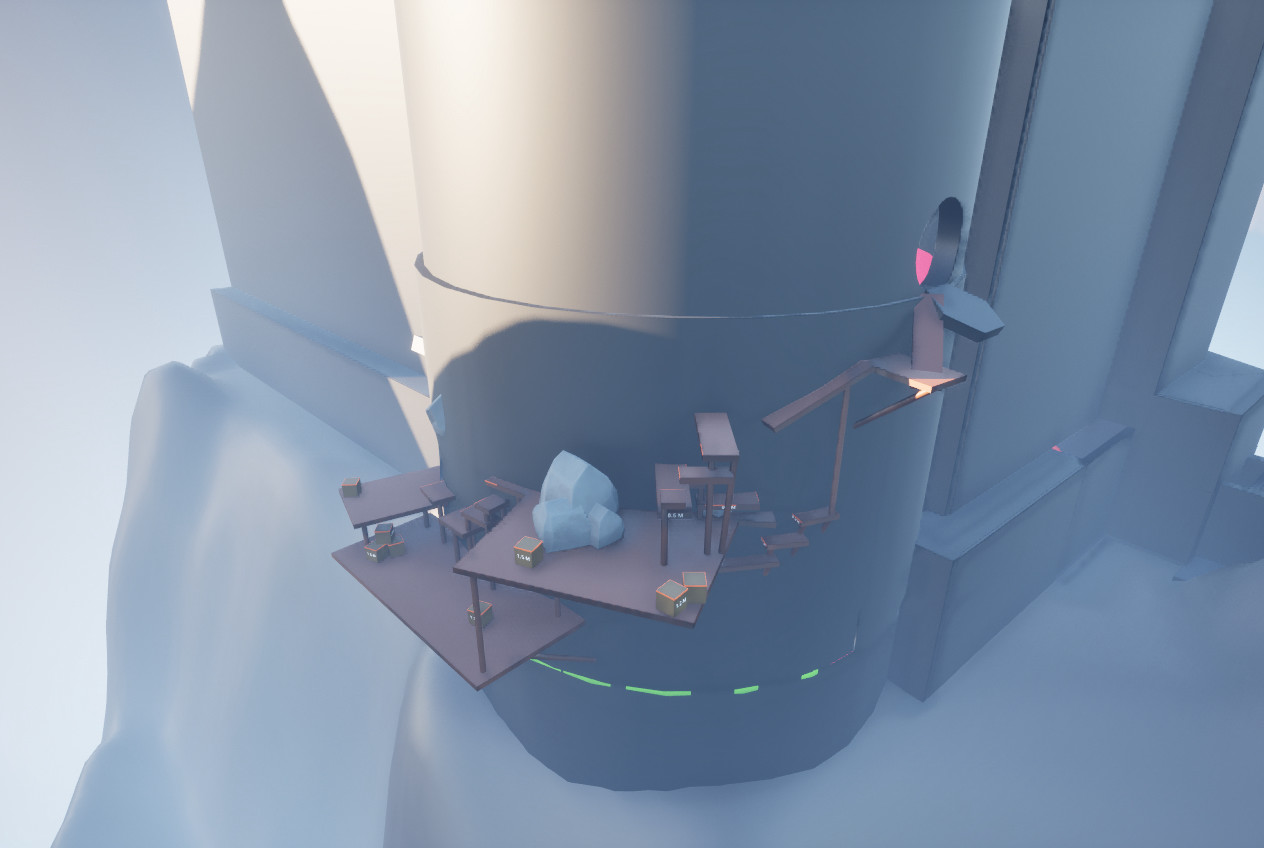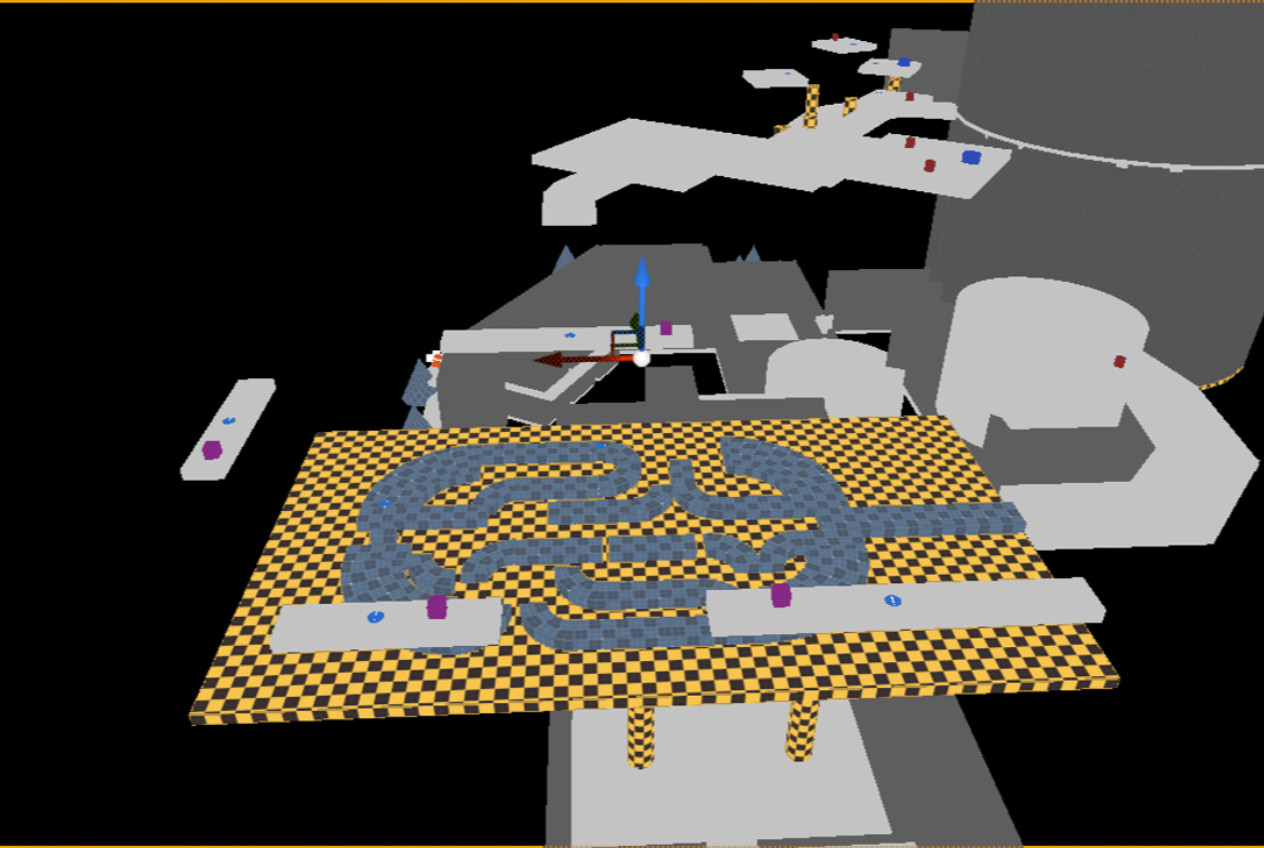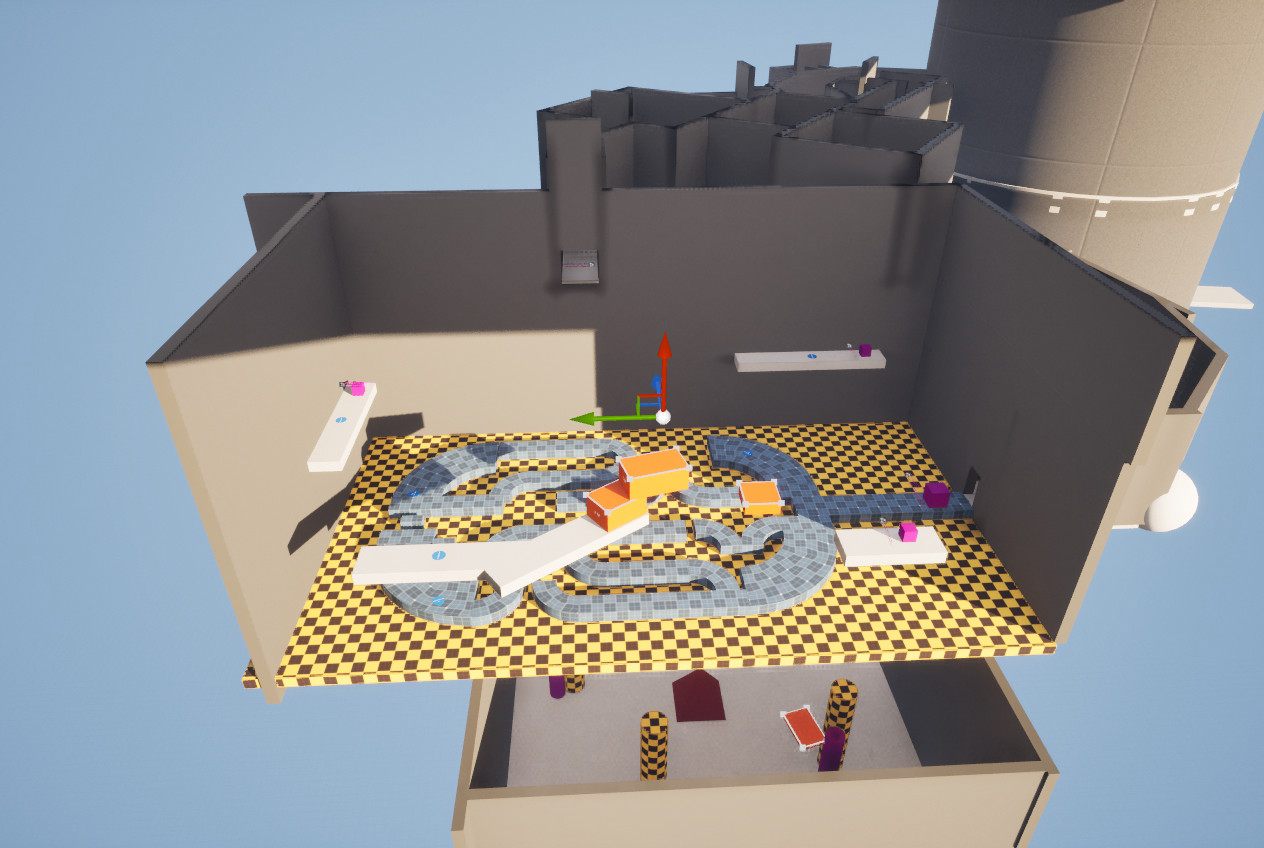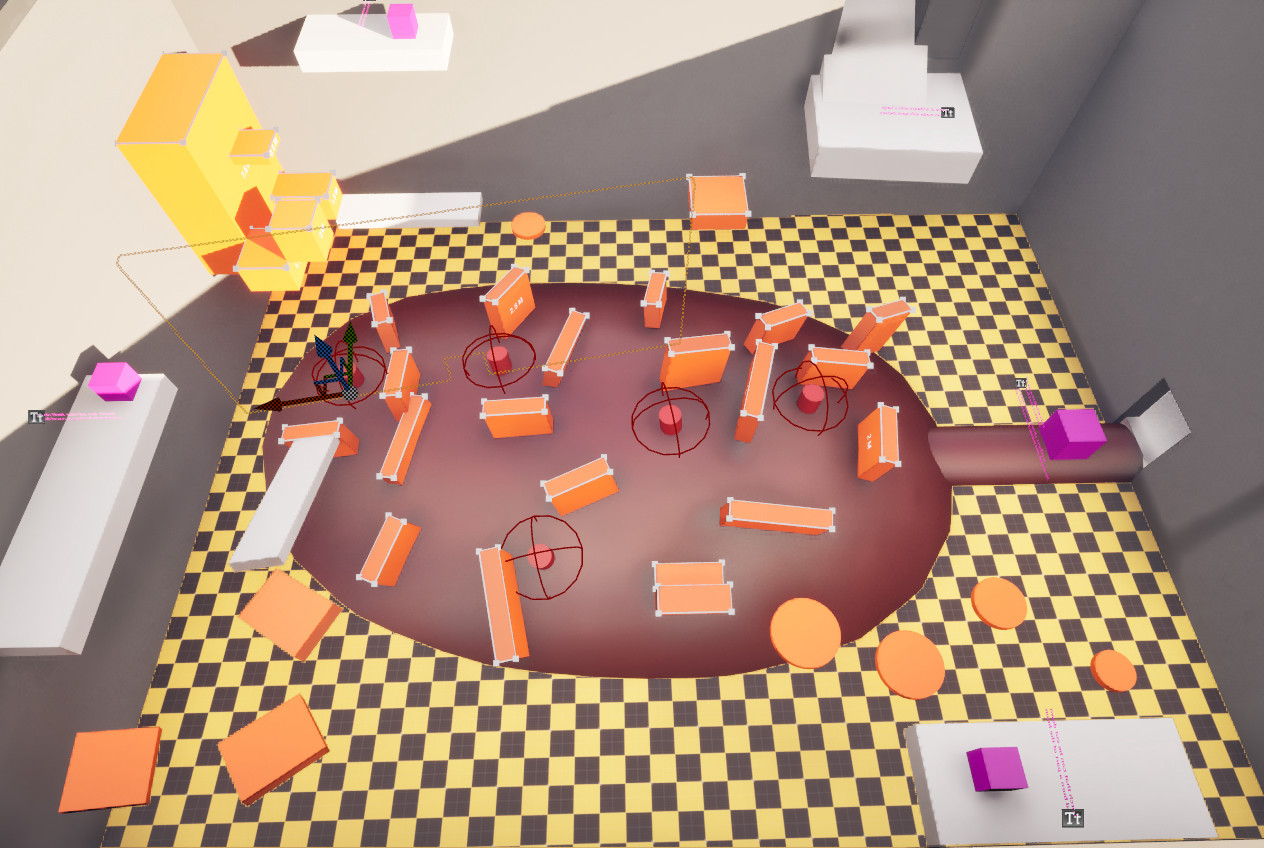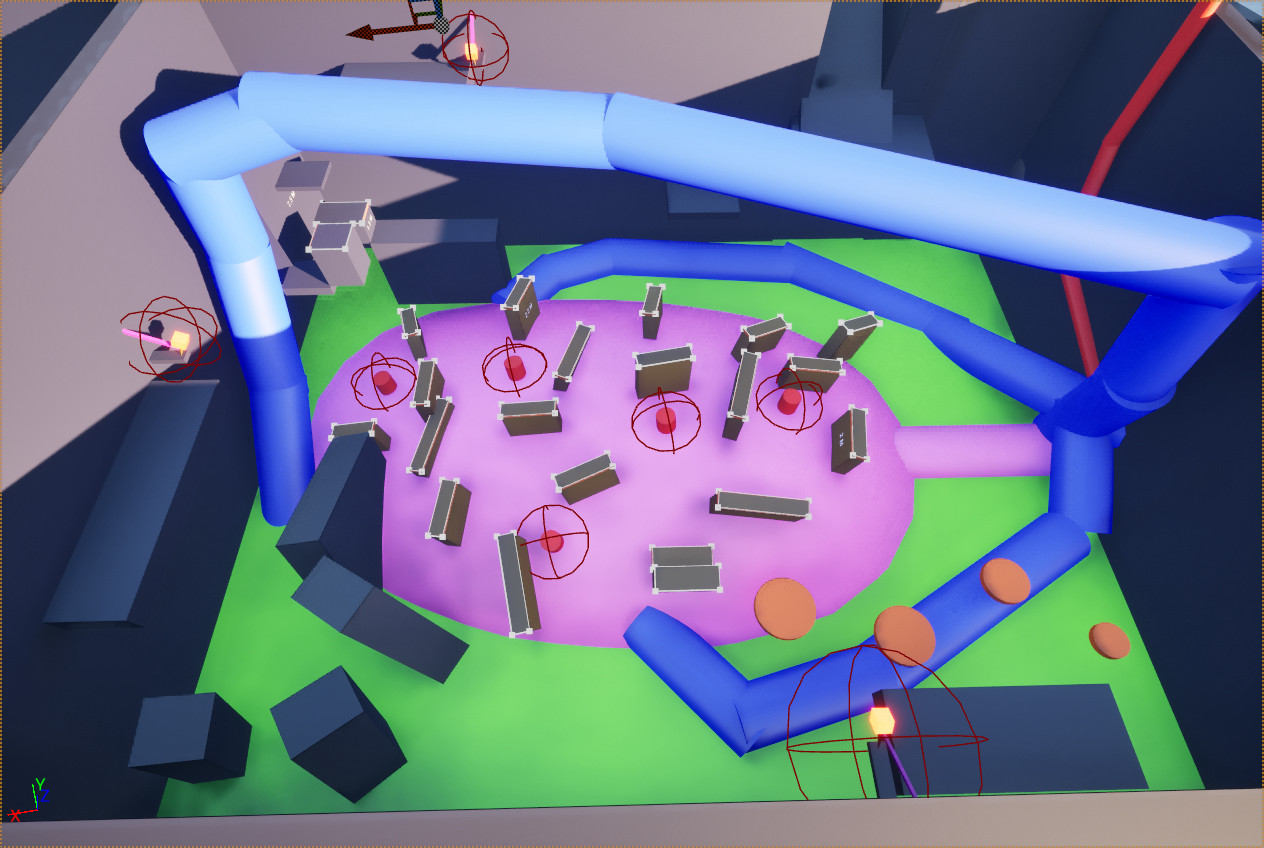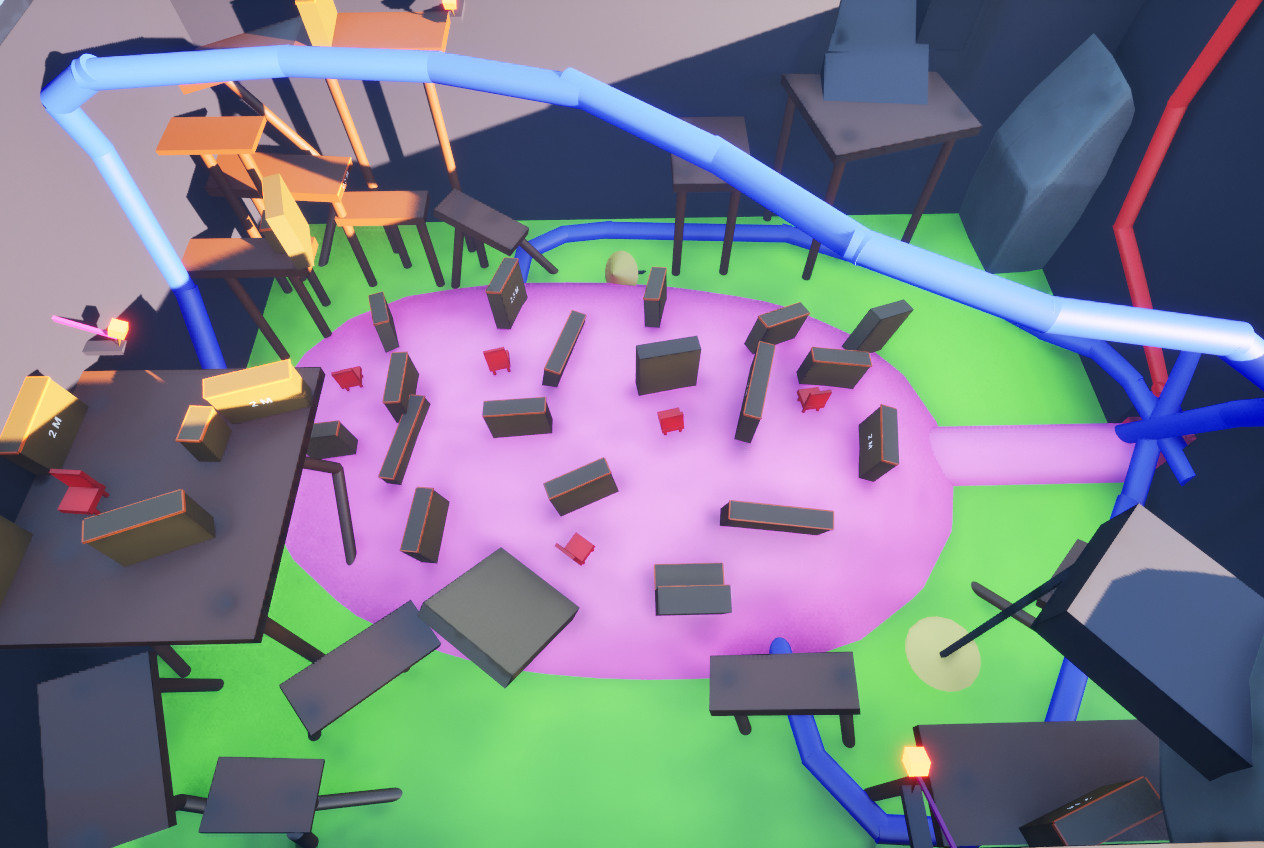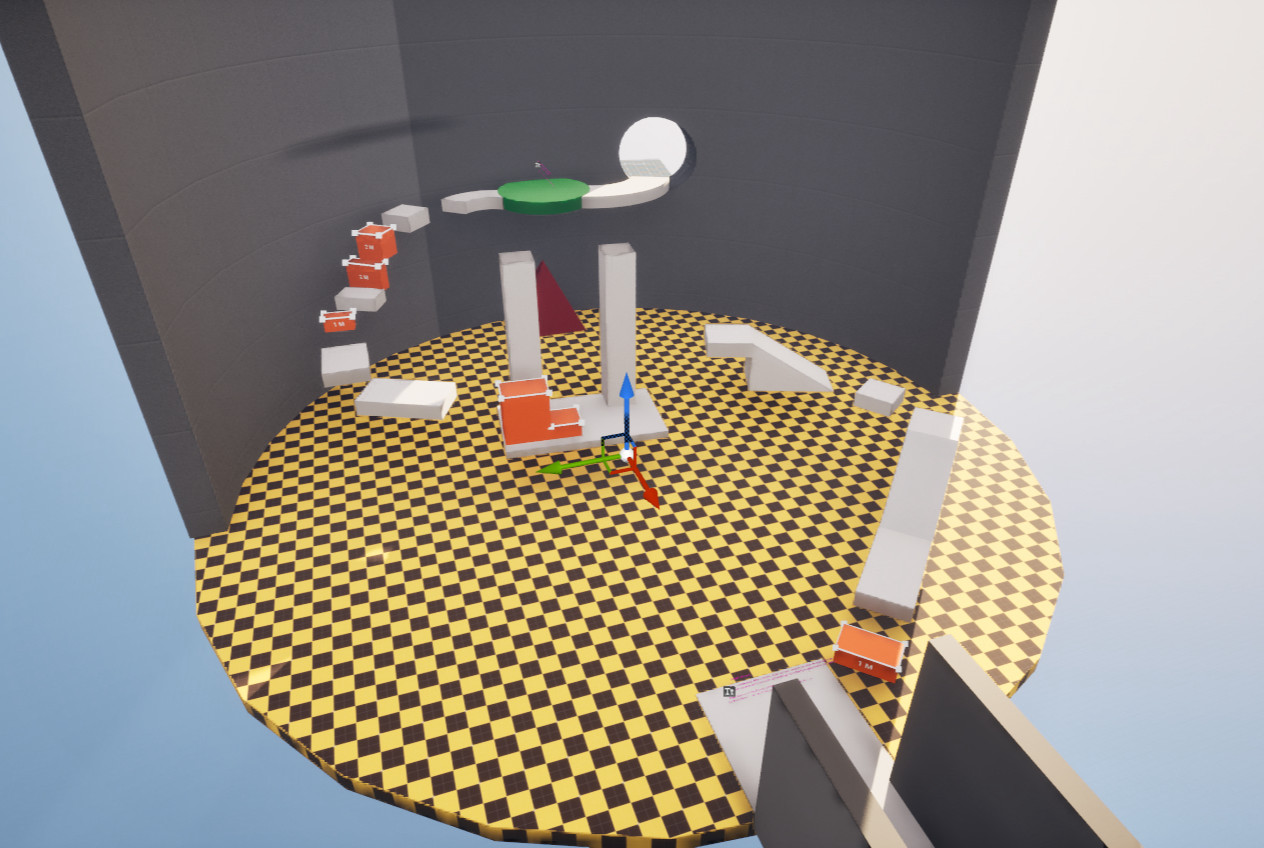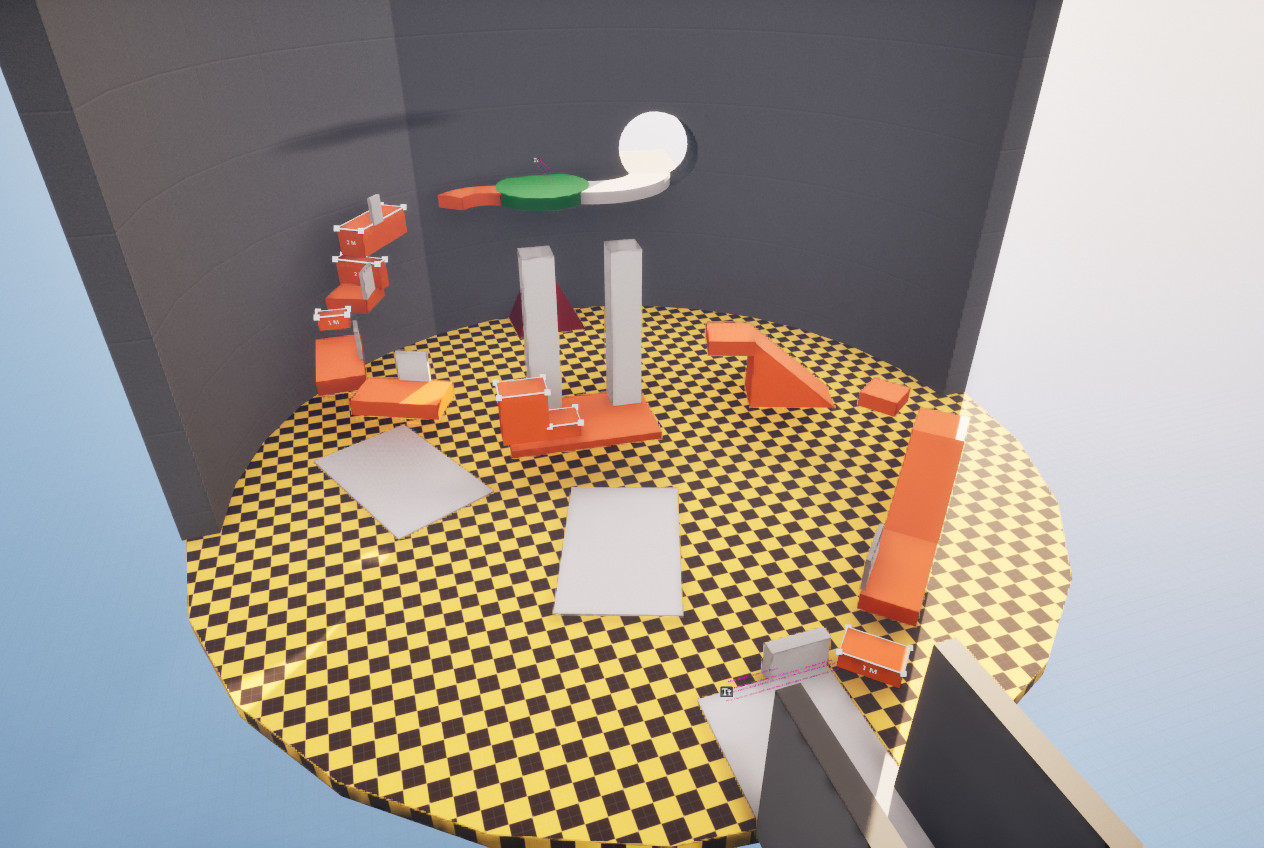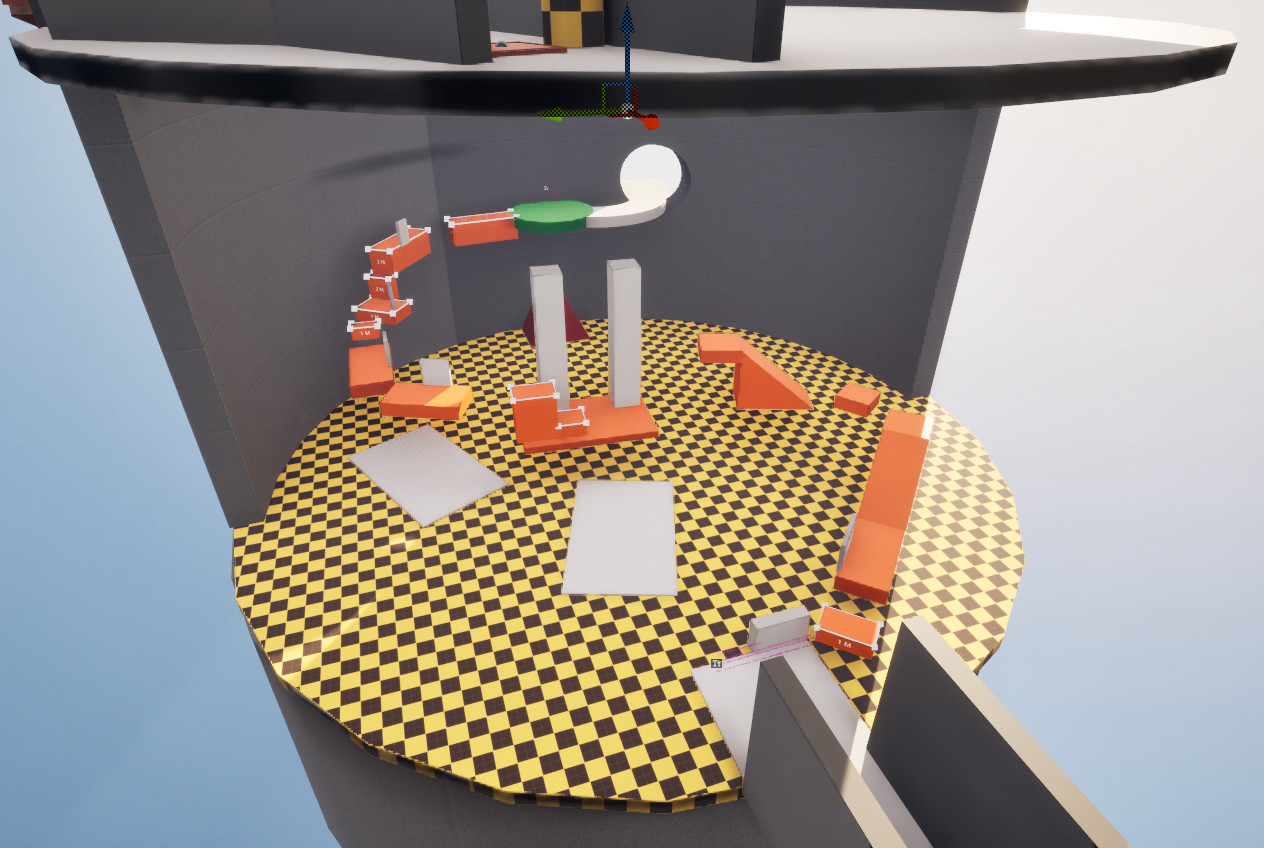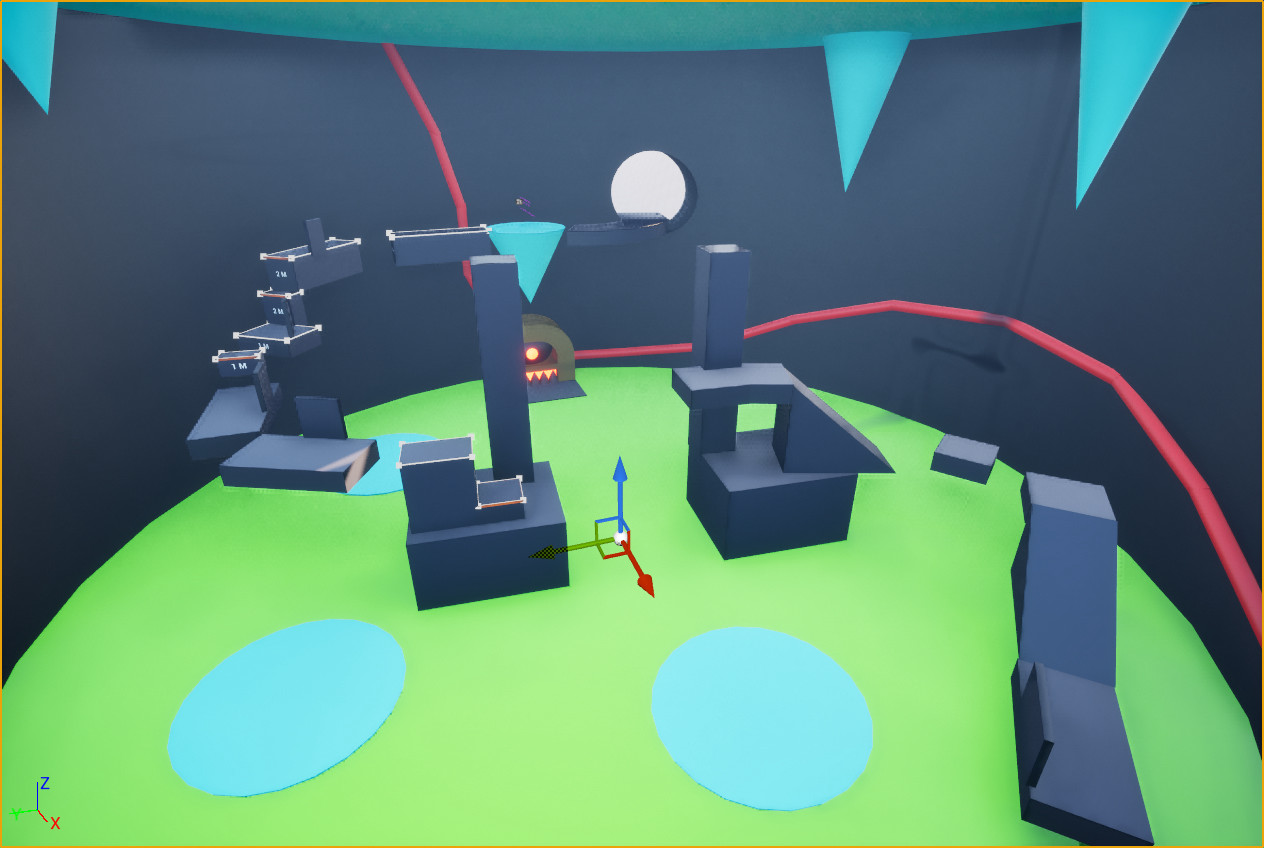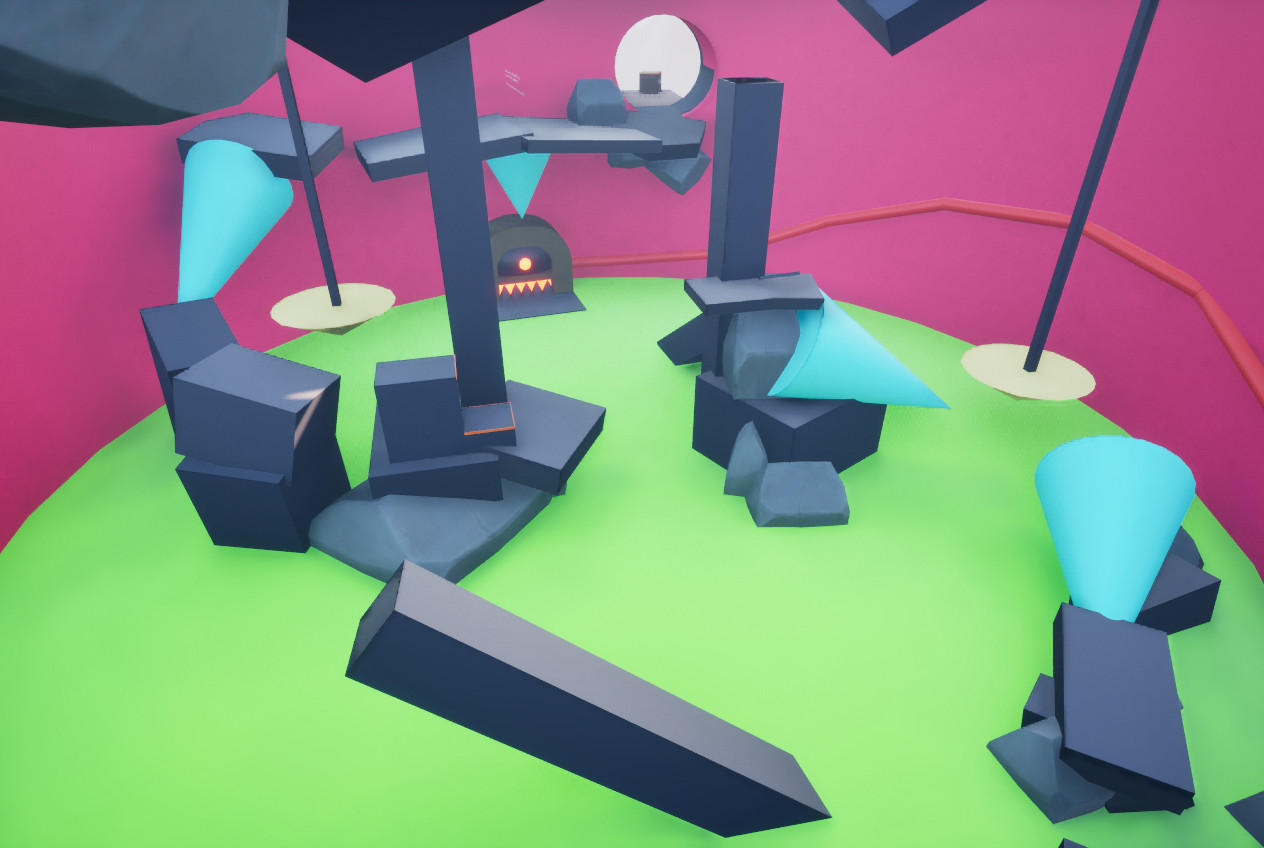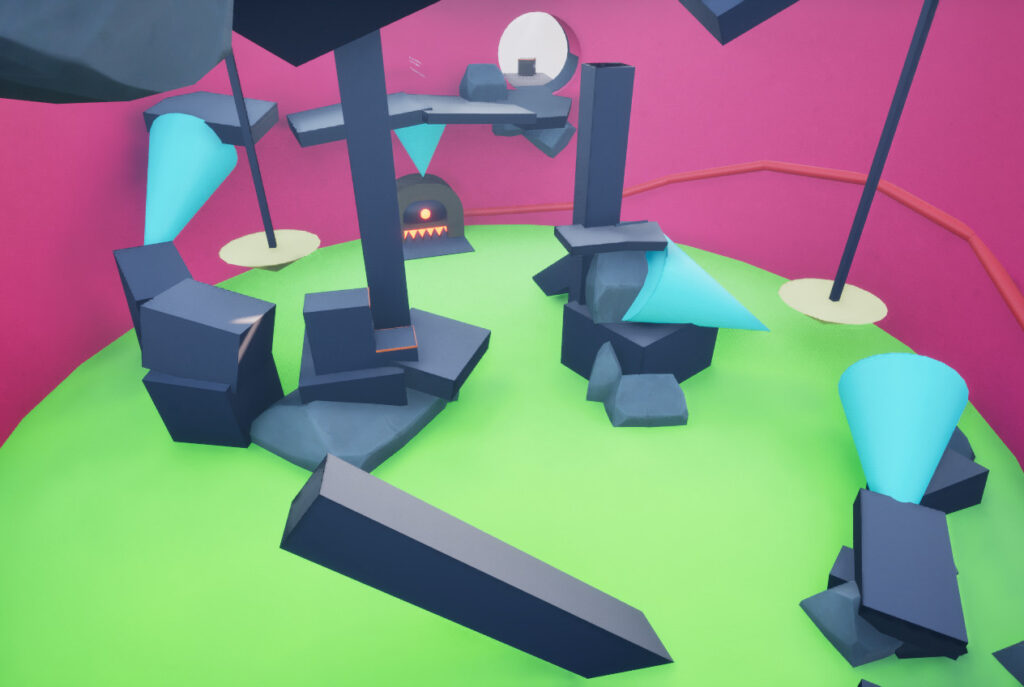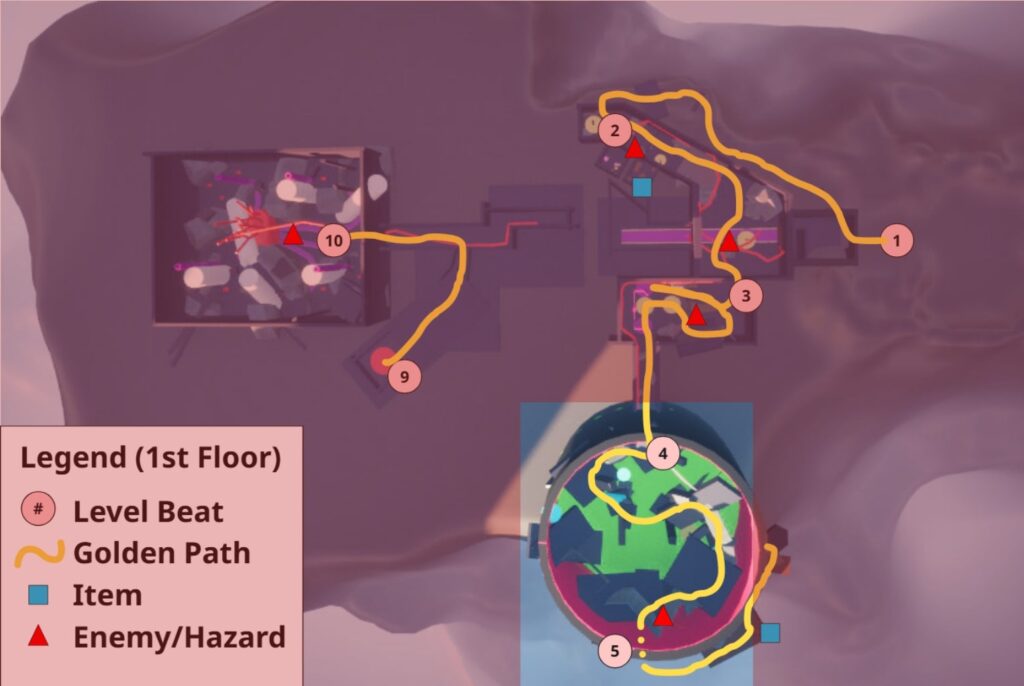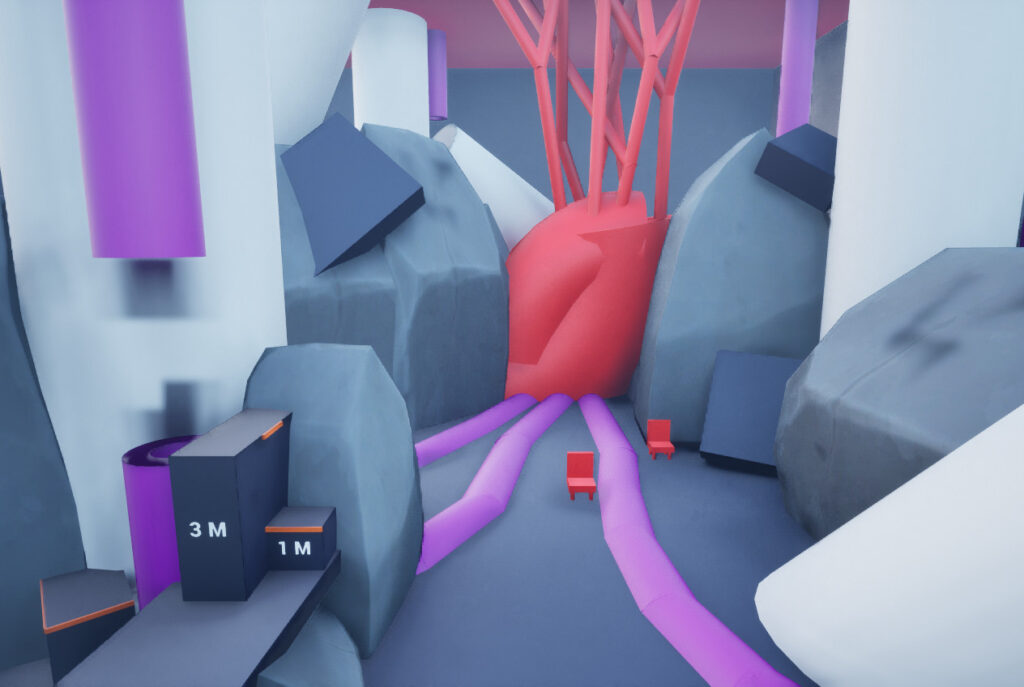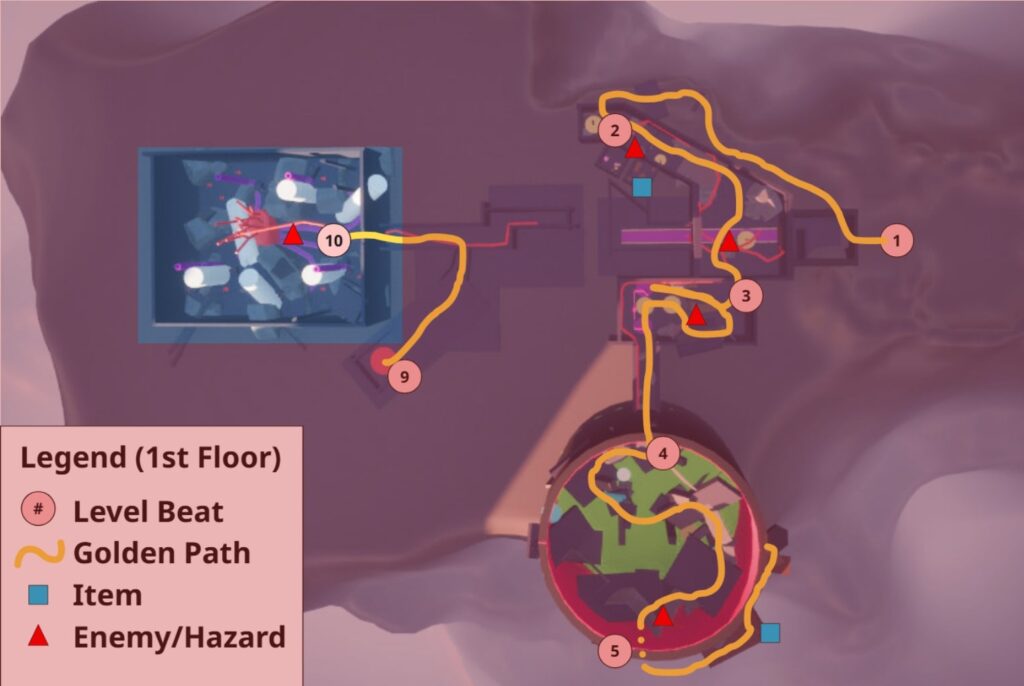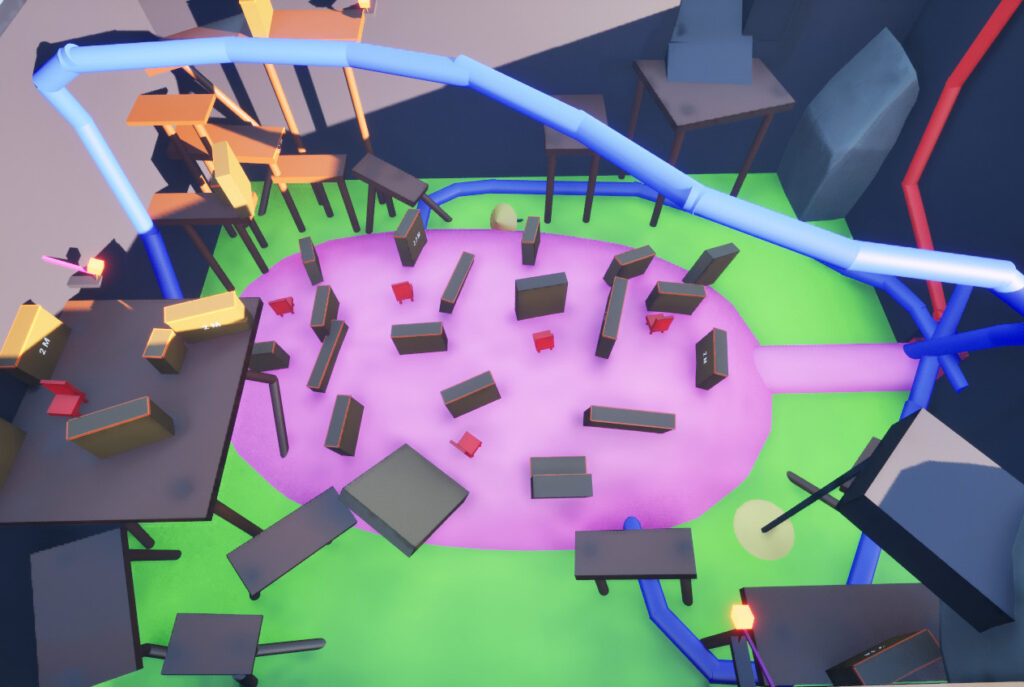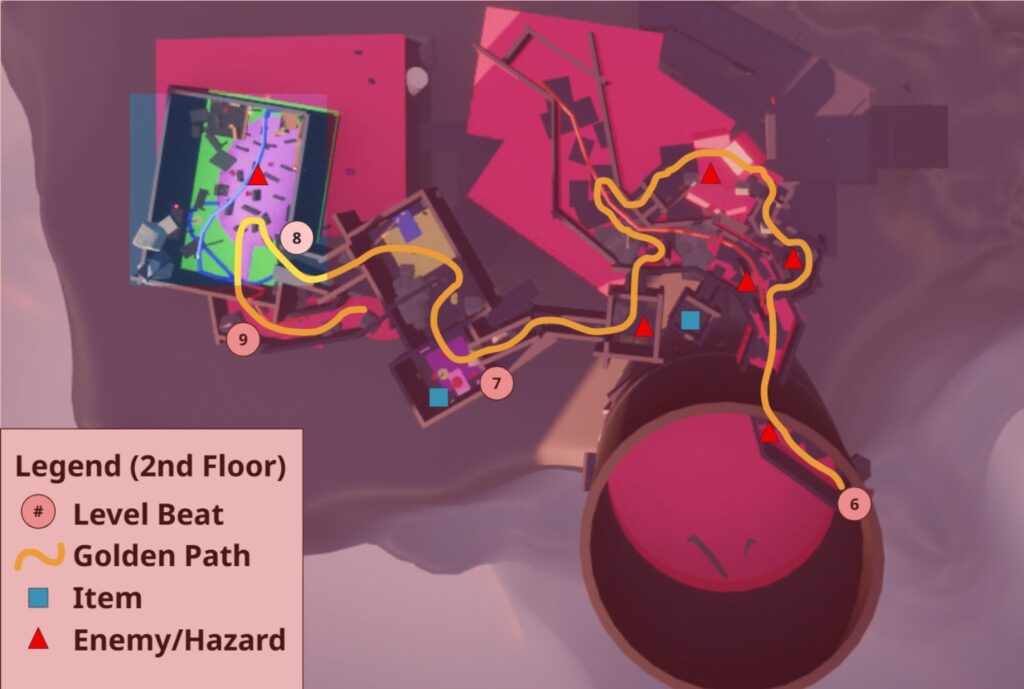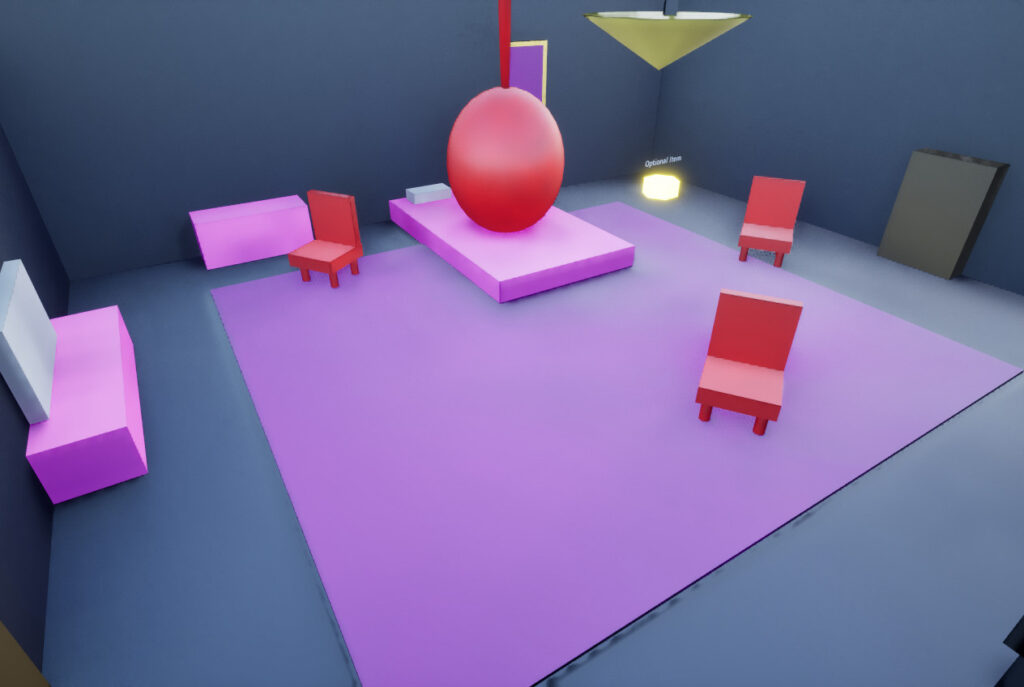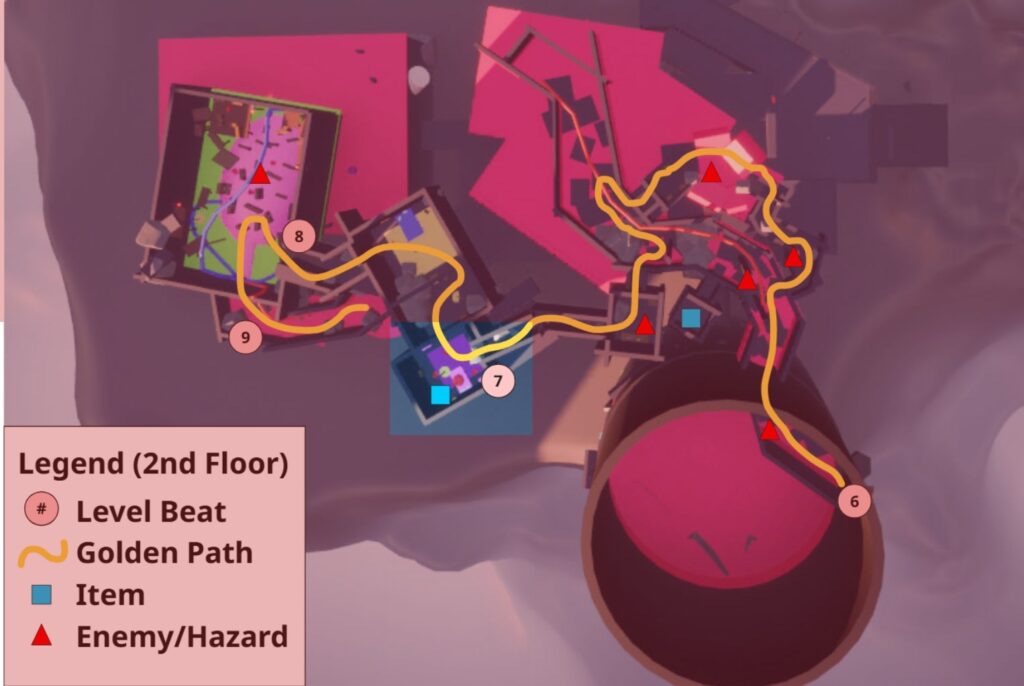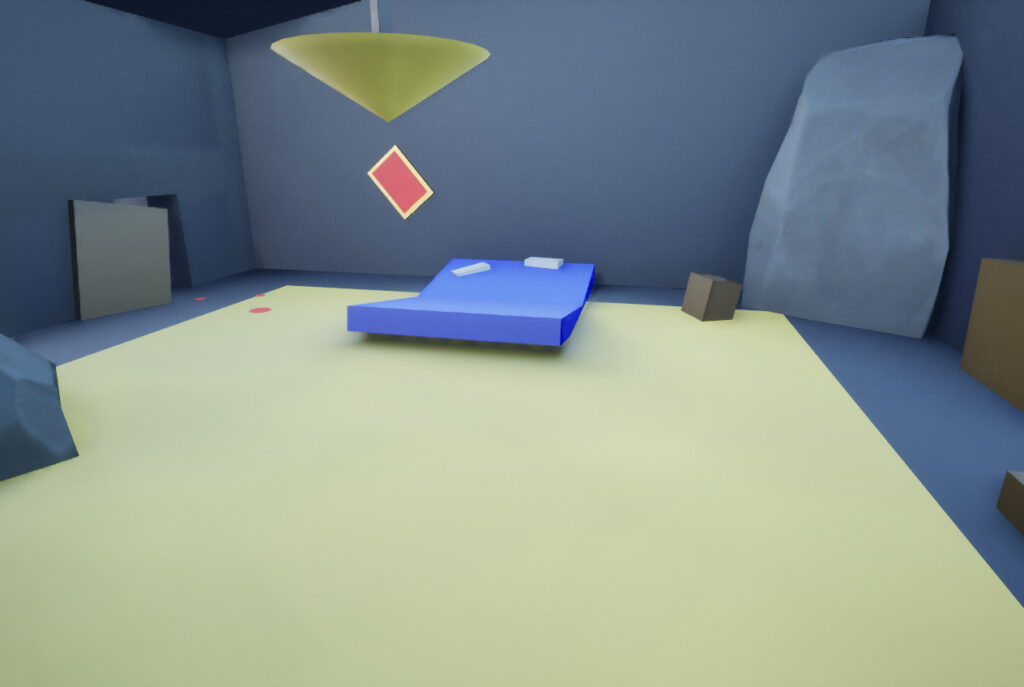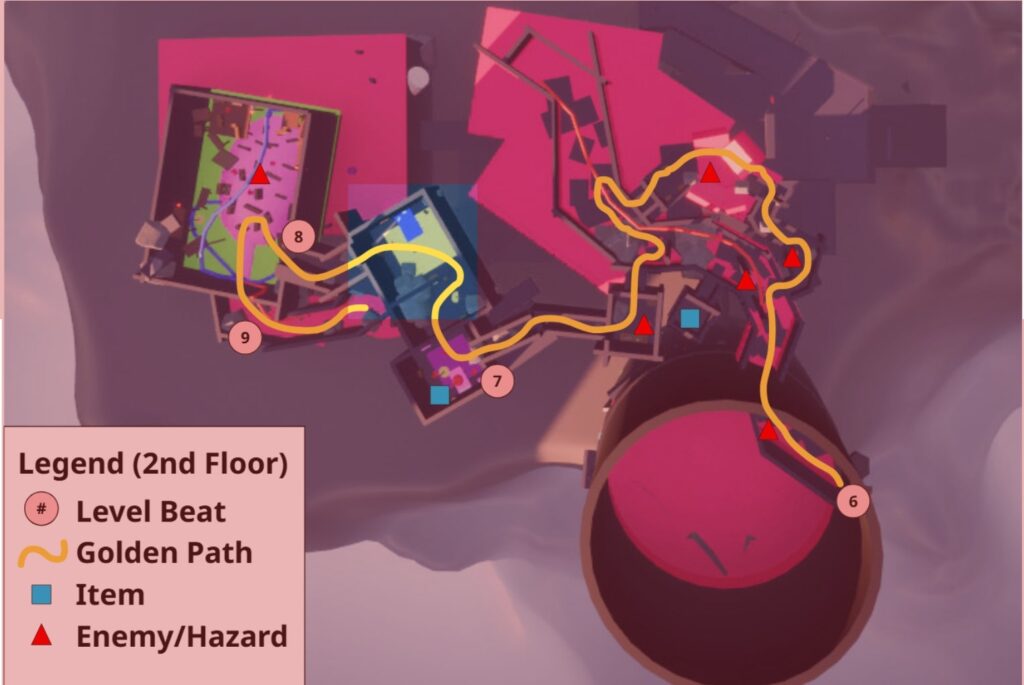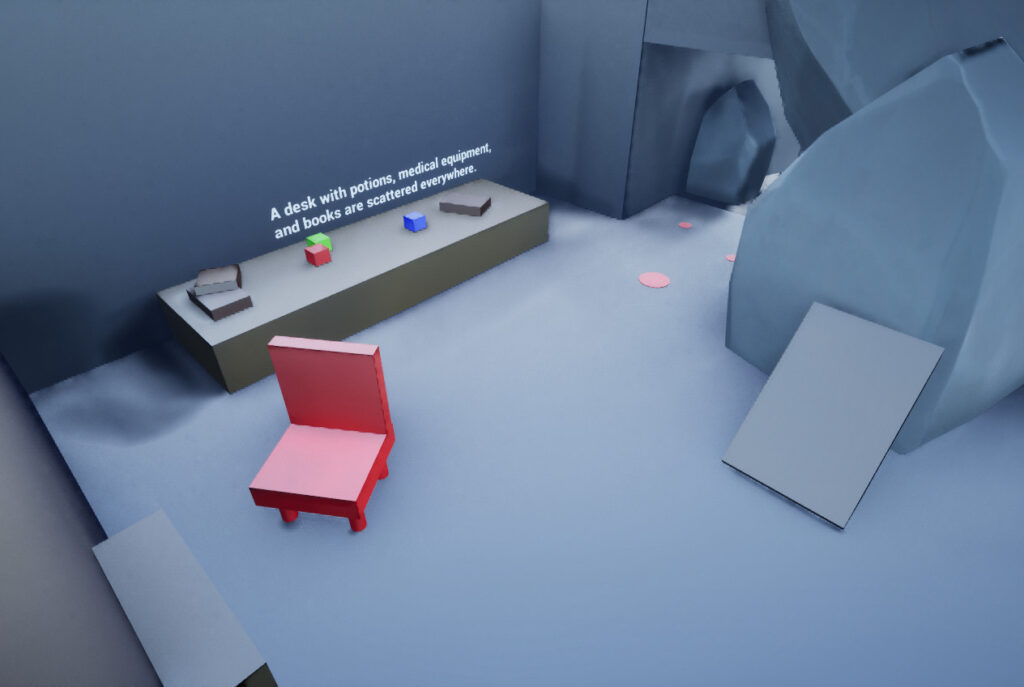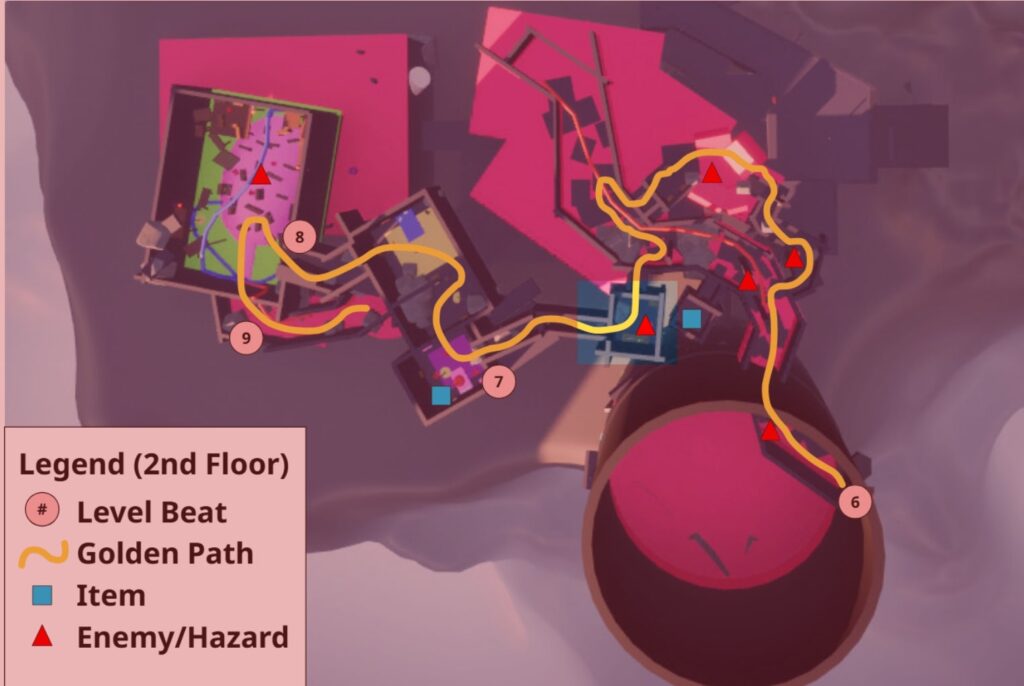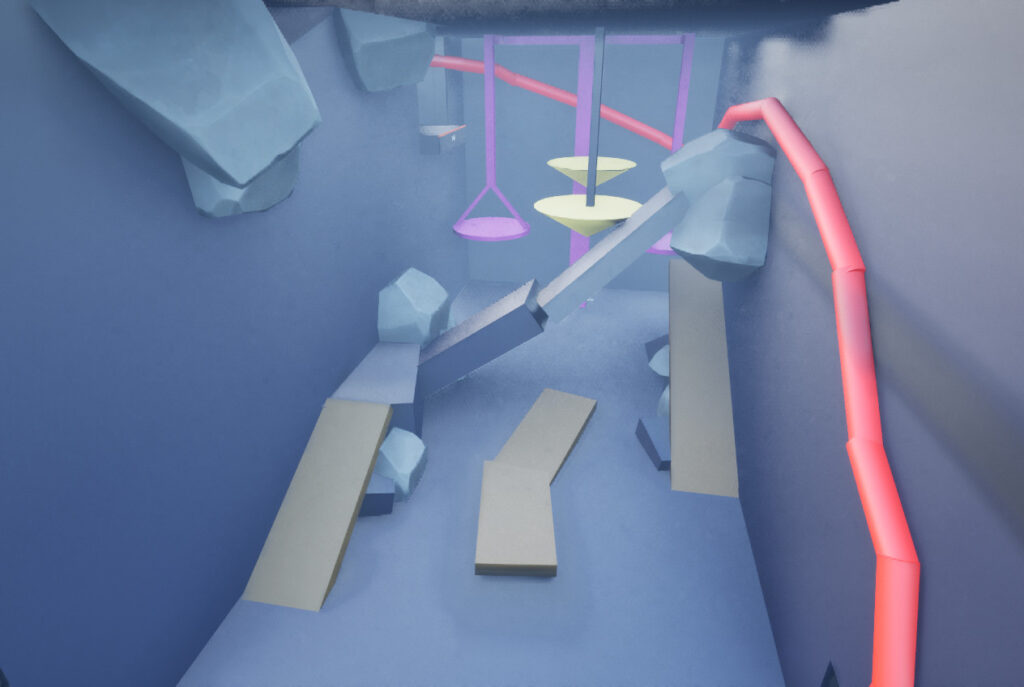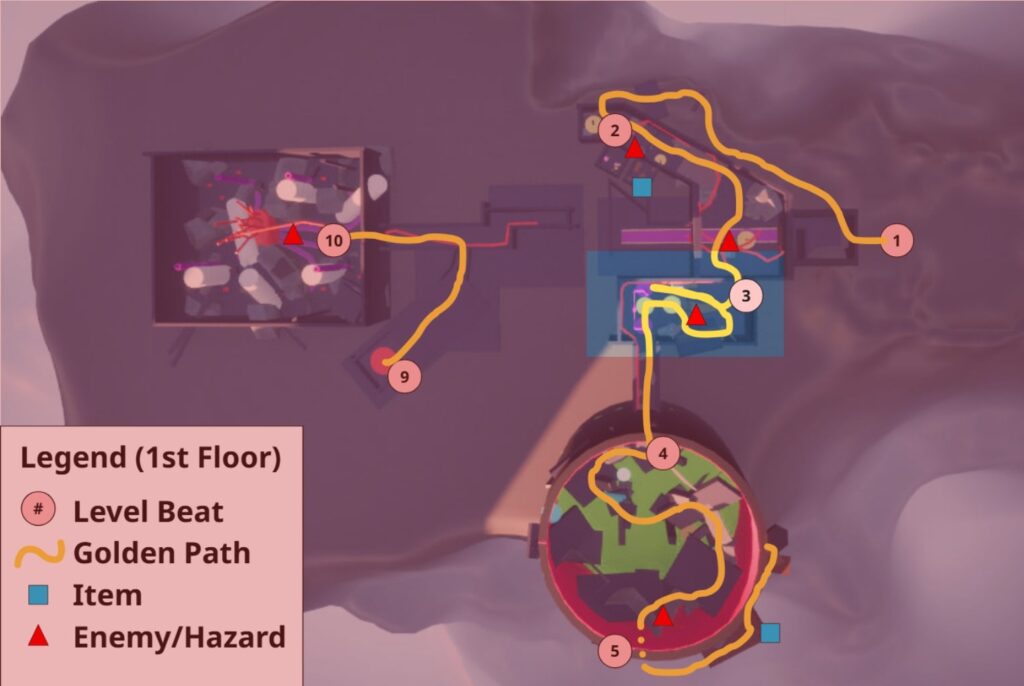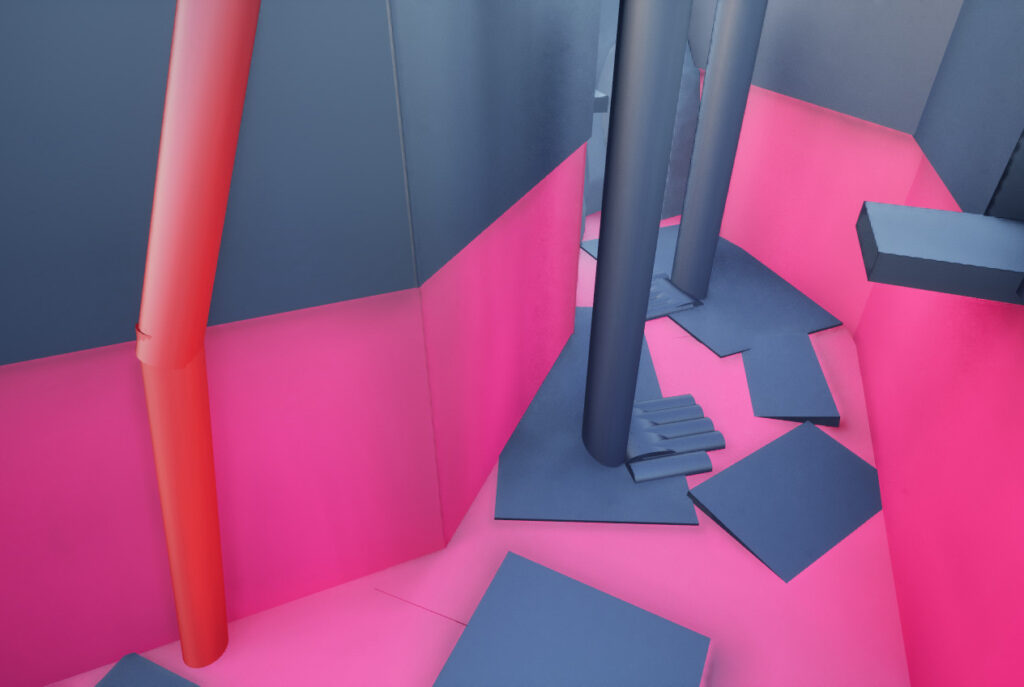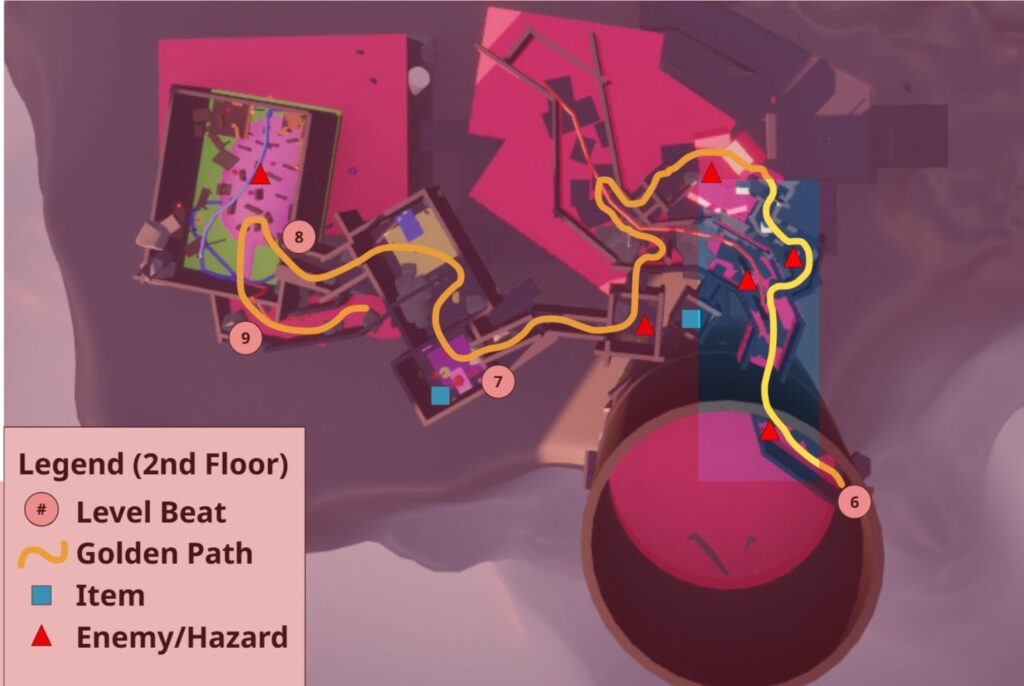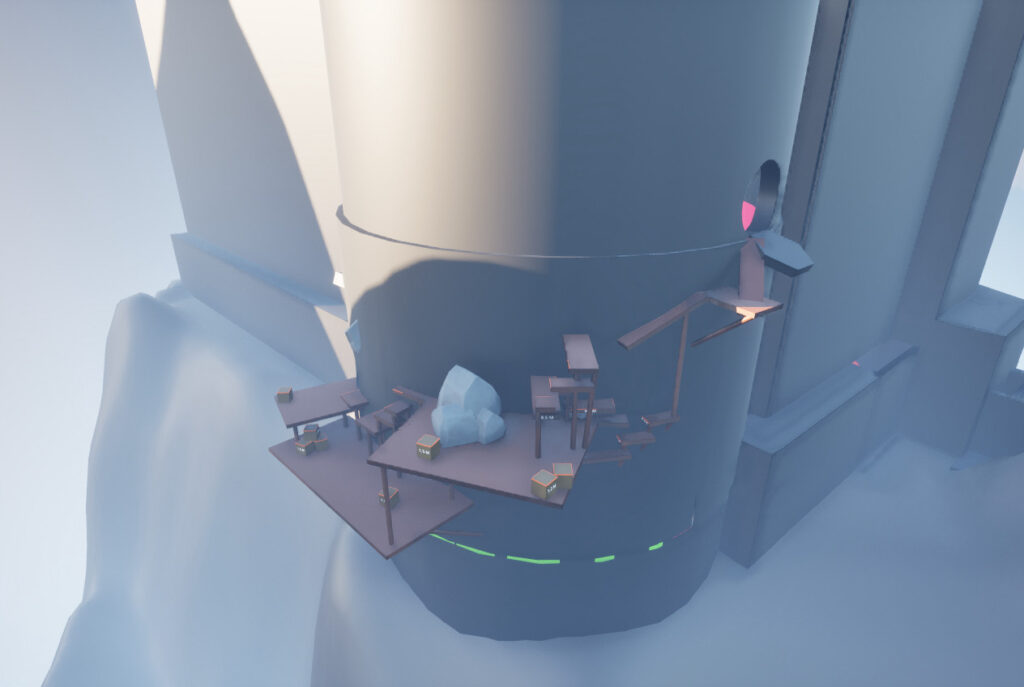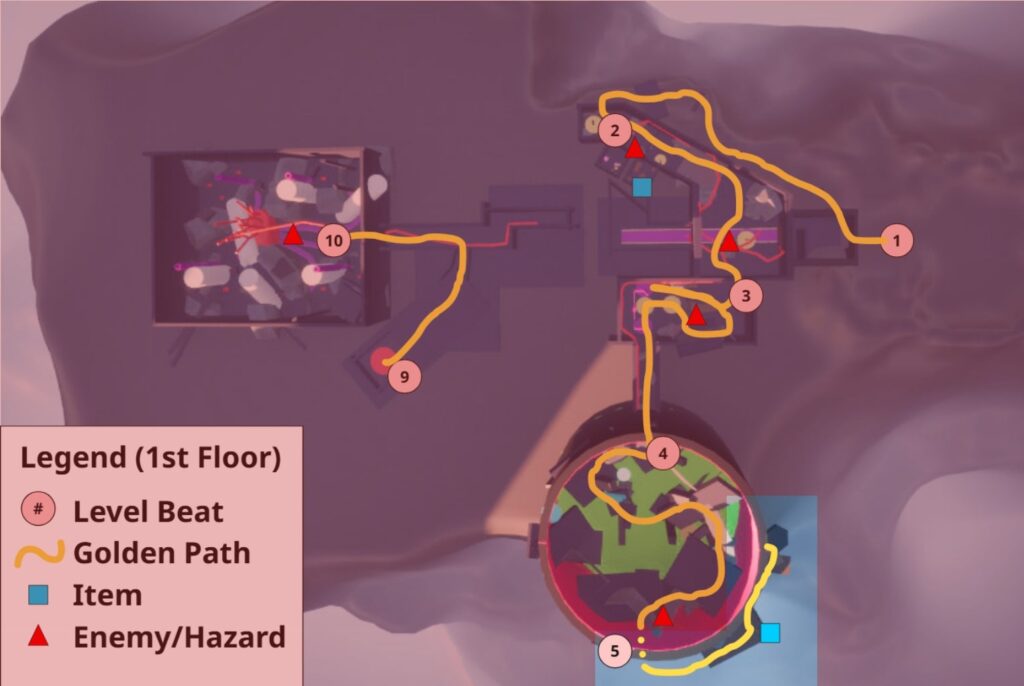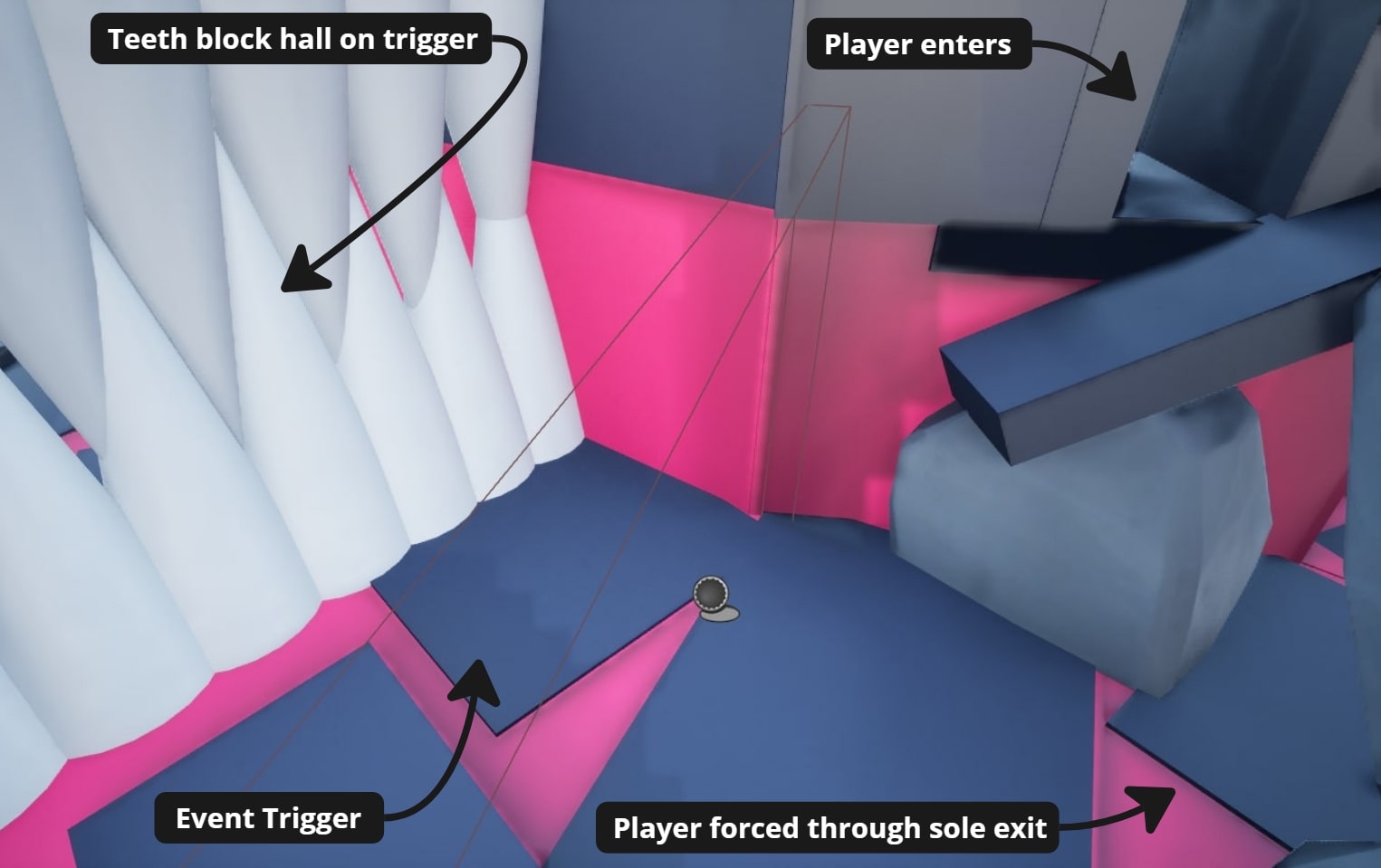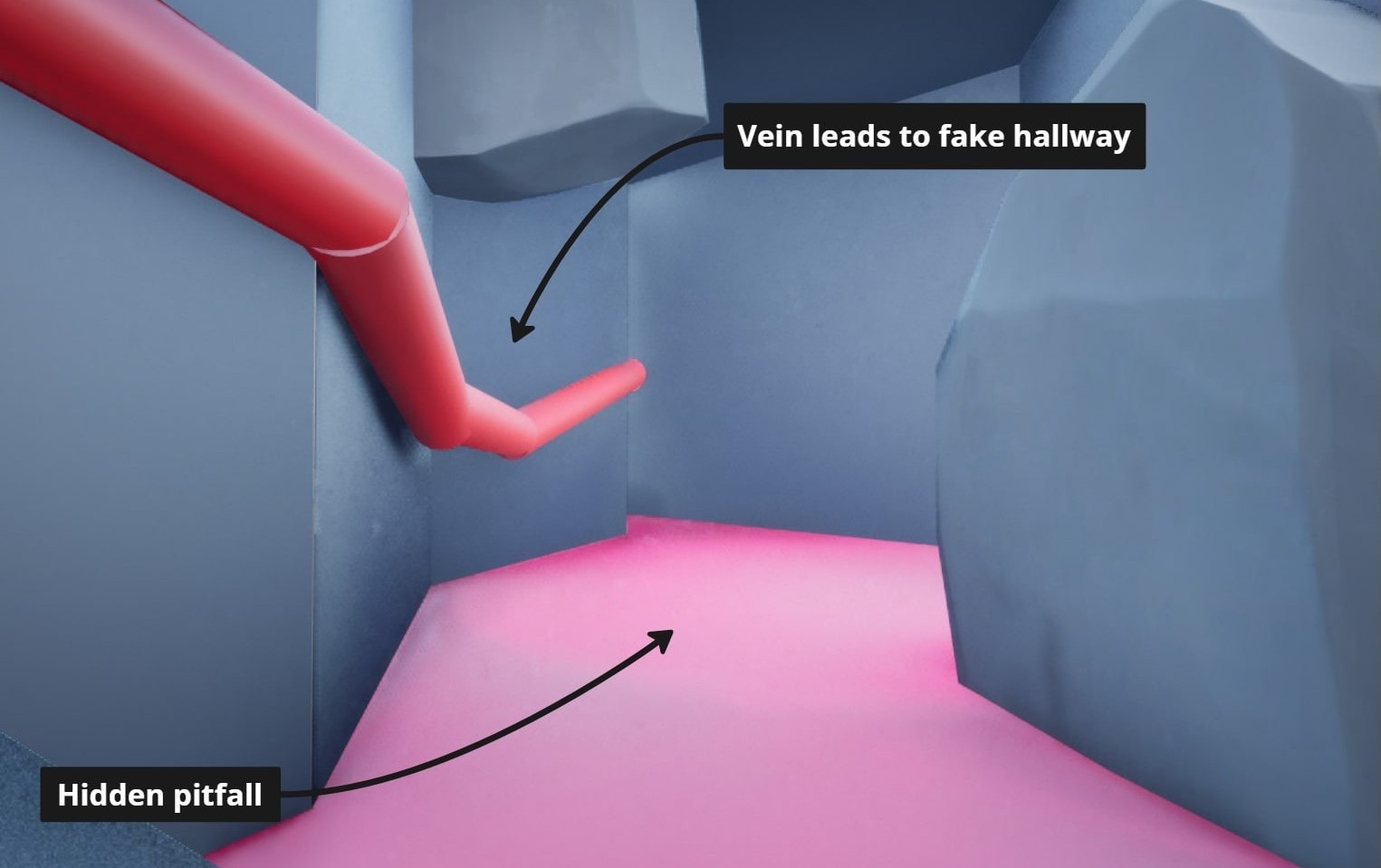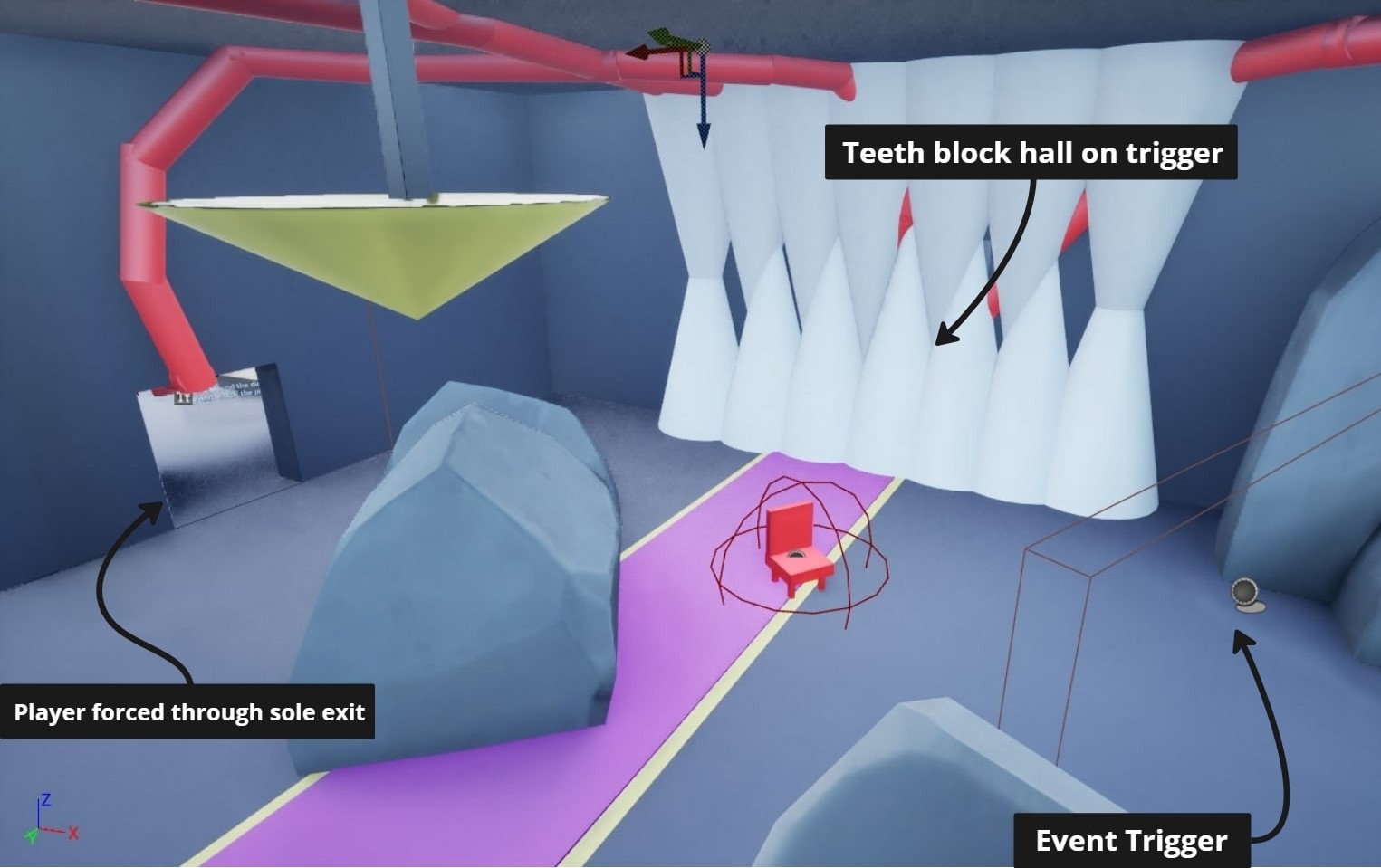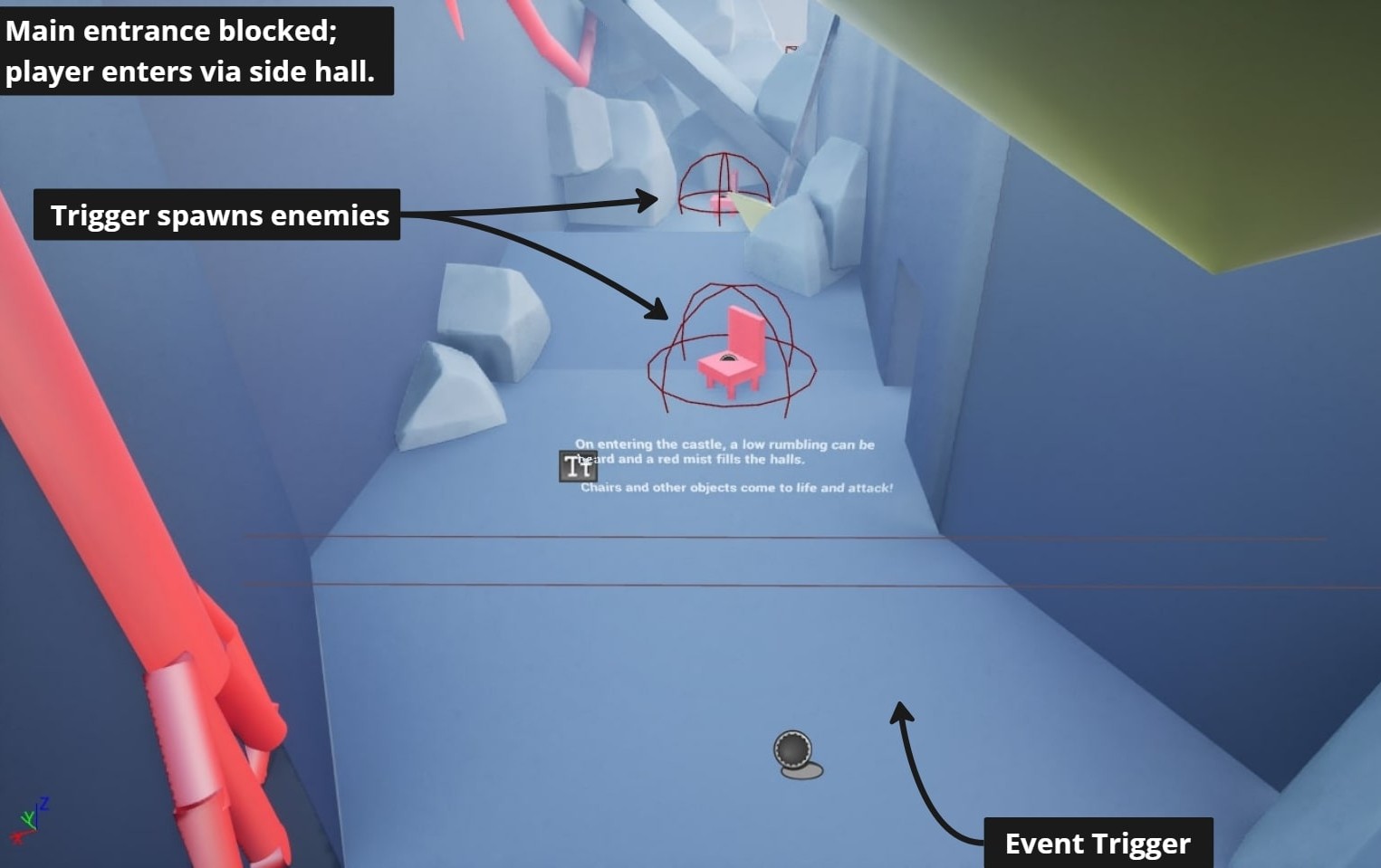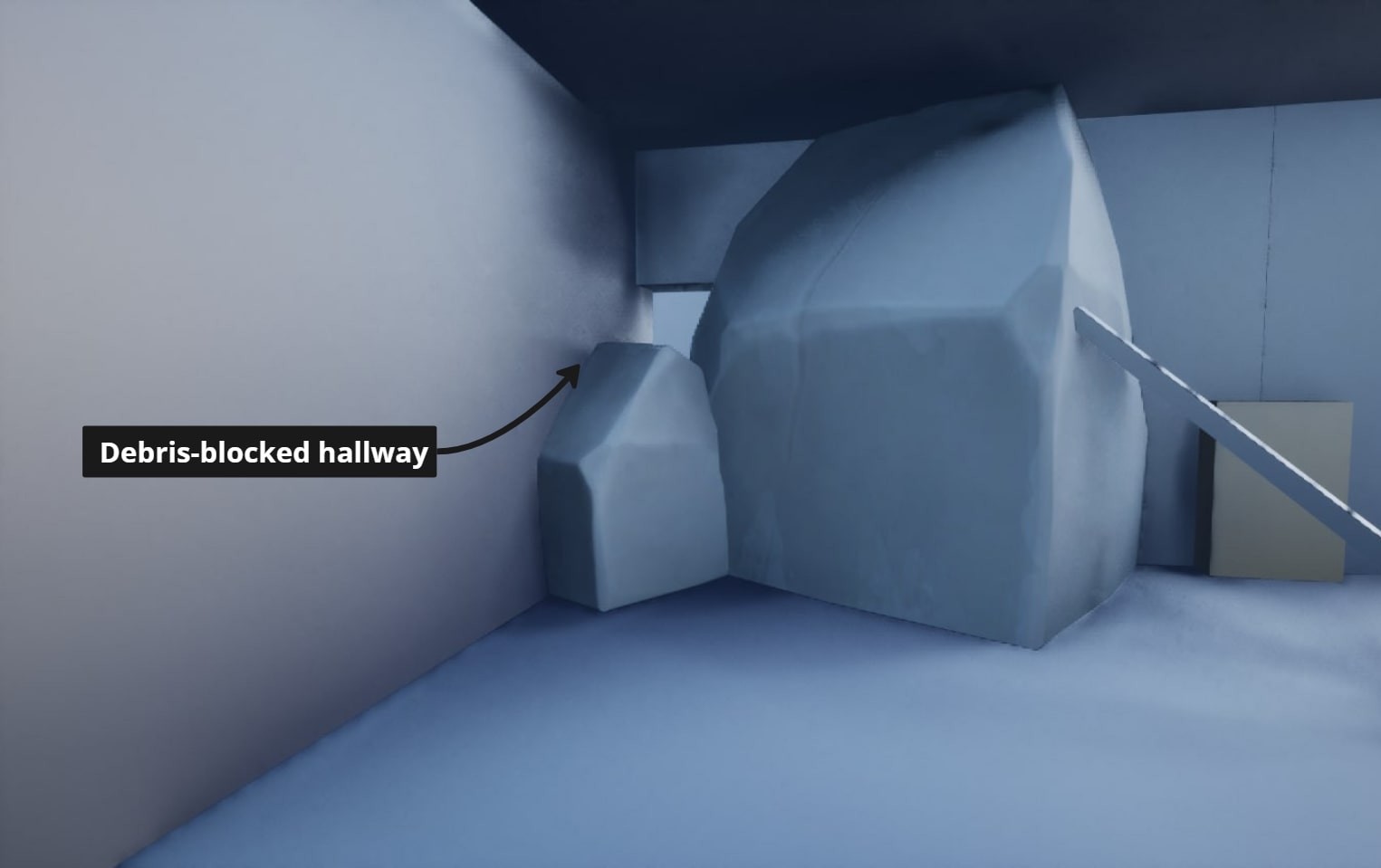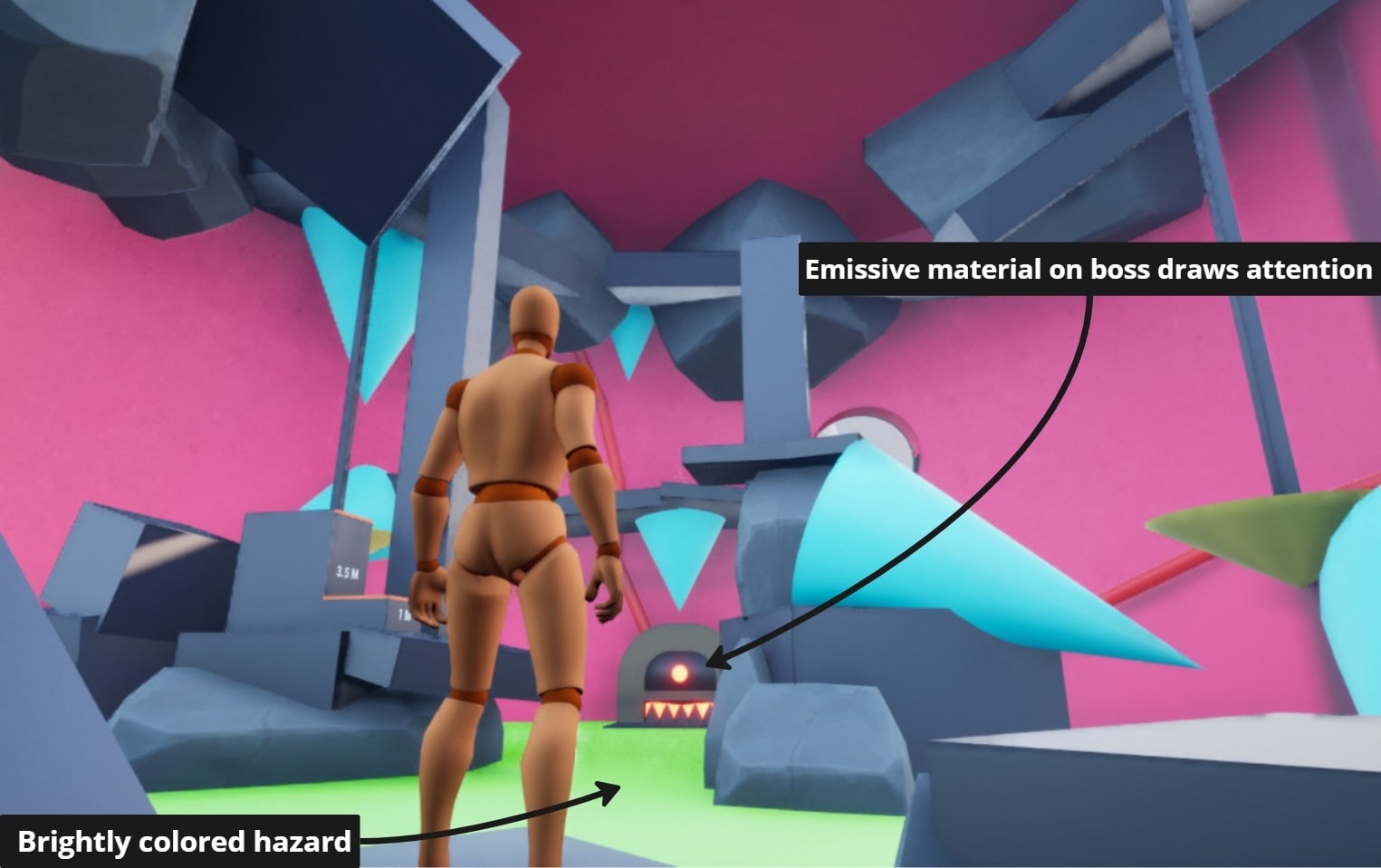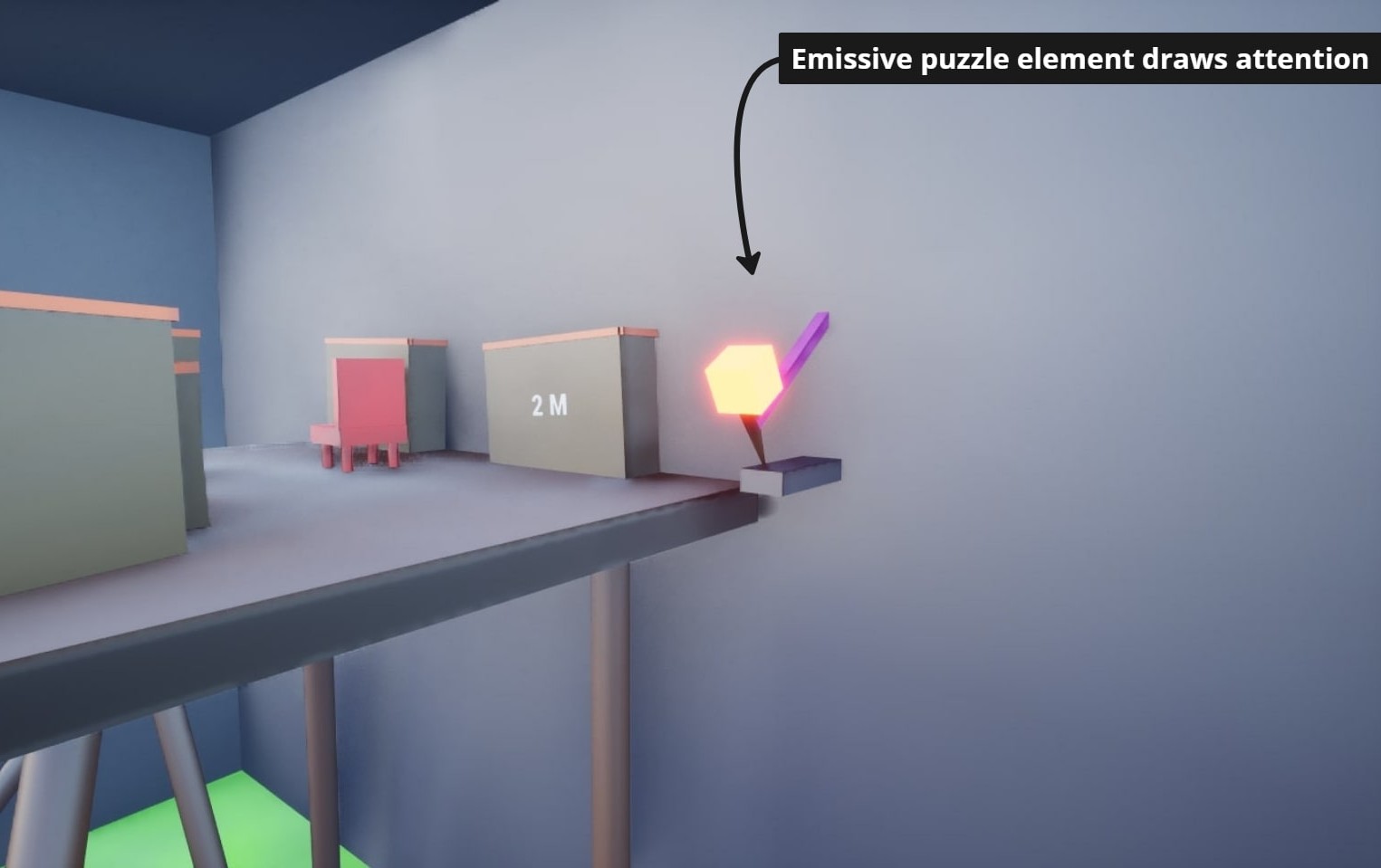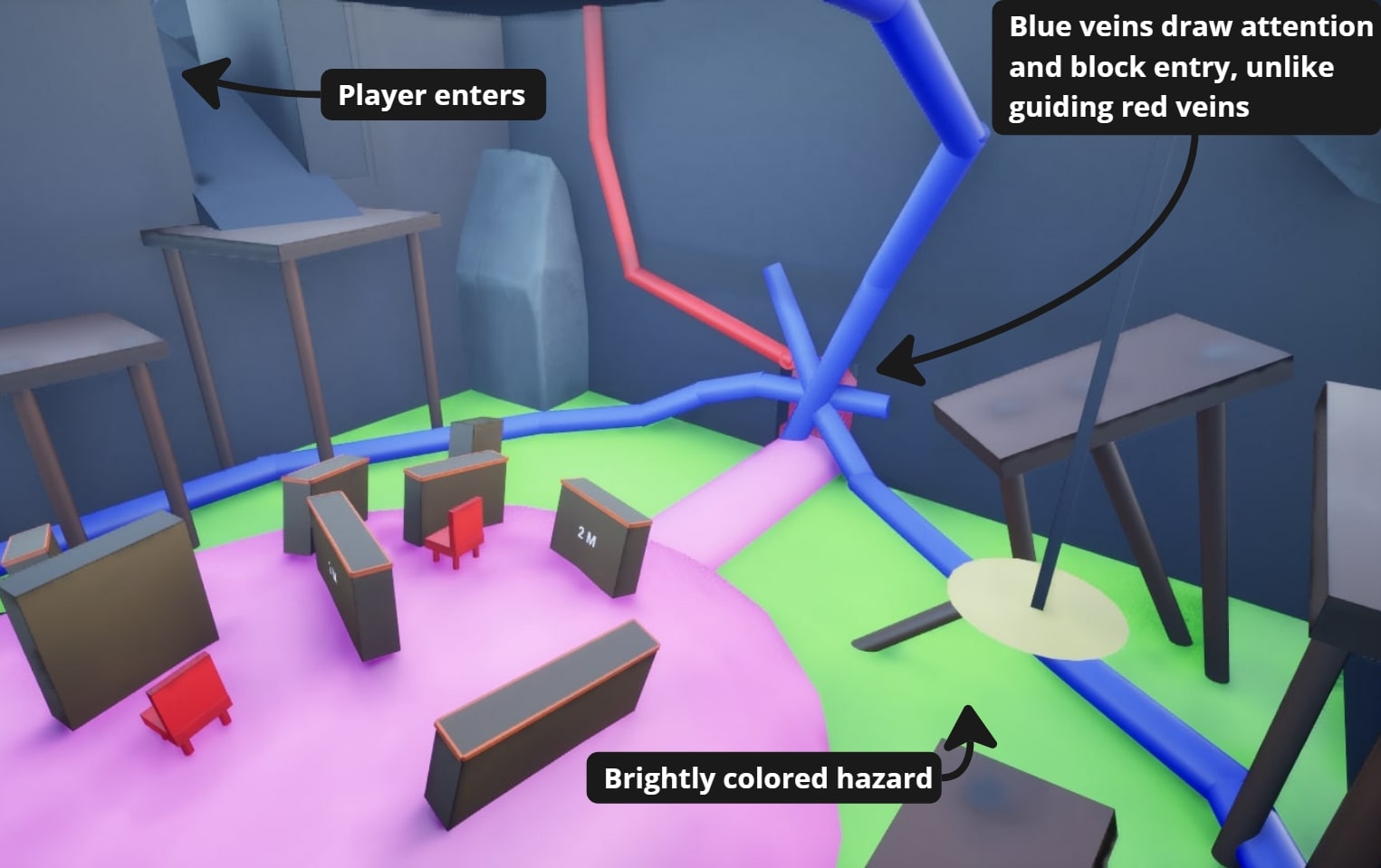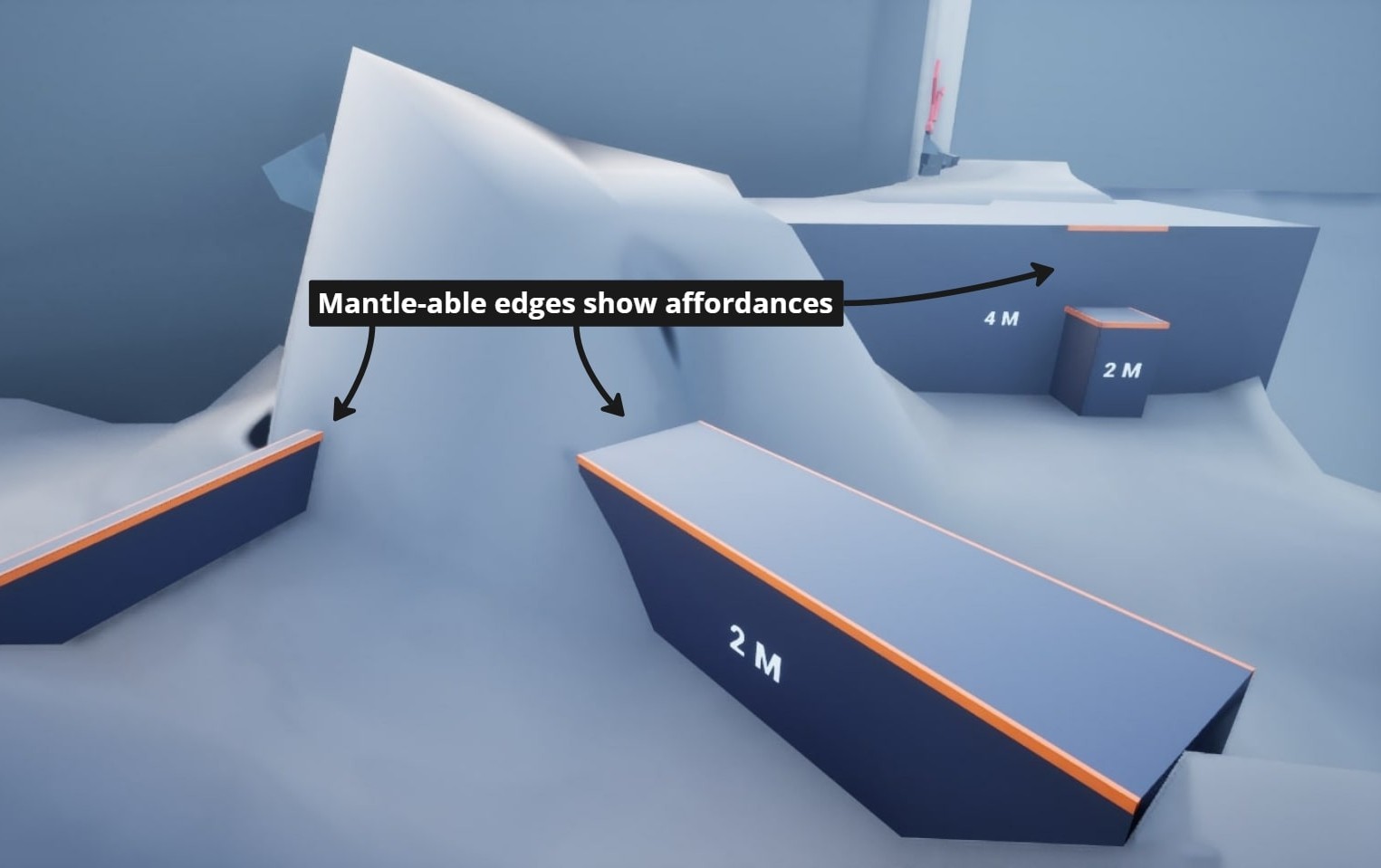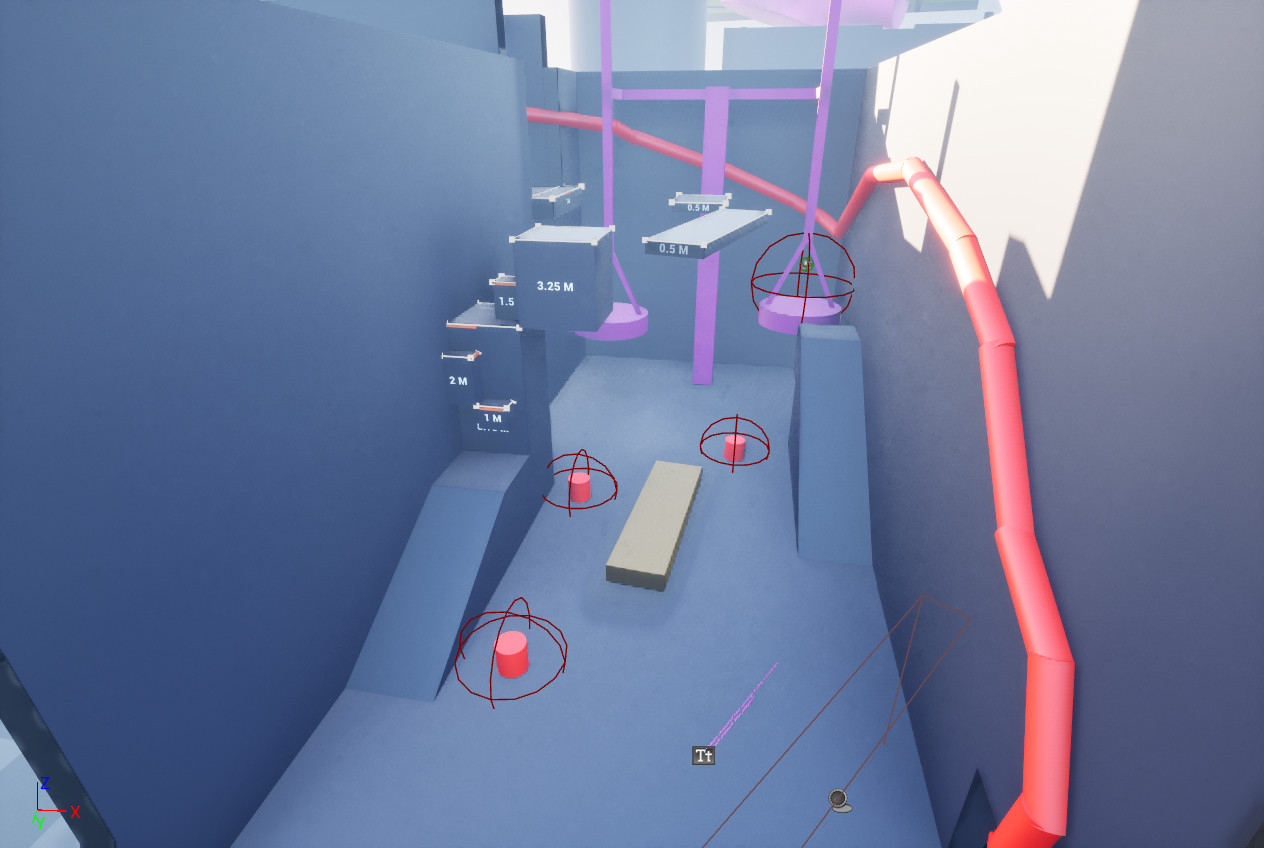Castle Lamia (Blockout)
- Genre: 3D Action Adventure / PvE
- Type: Blockout / Narrative
- Engine: Unreal Engine 5
- Tools: Unreal Engine 5, UE Blueprints, Sample Animation asset pack, SuperGrid Starter pack
- Iterations # 7
- Playtests # 6
- Role: Level Designer
Skip To...
Goal
By fusing the level design in Elden Ring and Baldur’s Gate 3 with the horror concept in Monster House, I was able to create a dark fantasy level centered on fighting a living castle.
Goals for this blockout:
- Improve my pre-production process
- Practice iterating my level with feedback through multiple iterations
- Learning and utilizing techniques such as affordances, scripting, and illusion of space
I felt stuck for a while. I couldn’t create levels that I felt confident enough in. I wanted to improve my preproduction process too. This is why I joined the Level Design Action Adventure bootcamp.
Progress
Top View
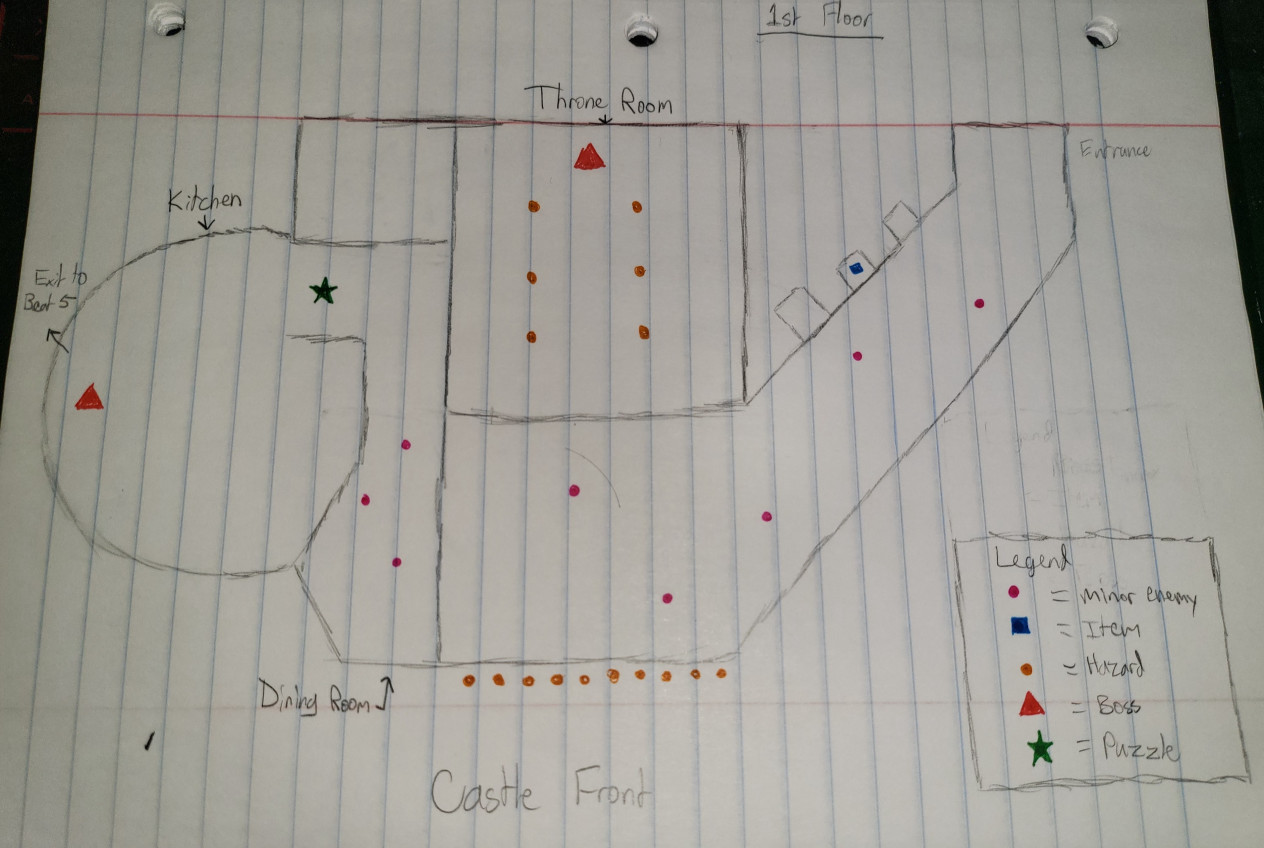
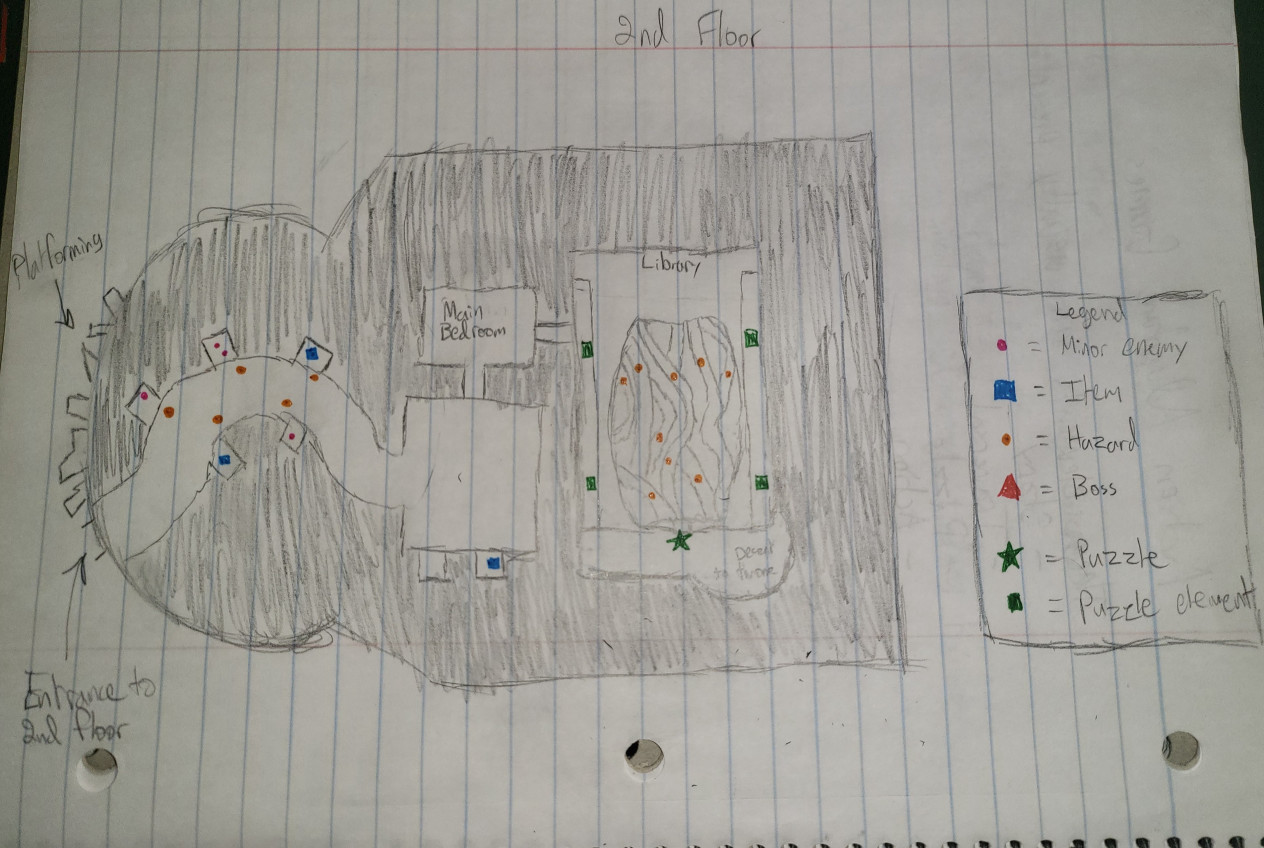
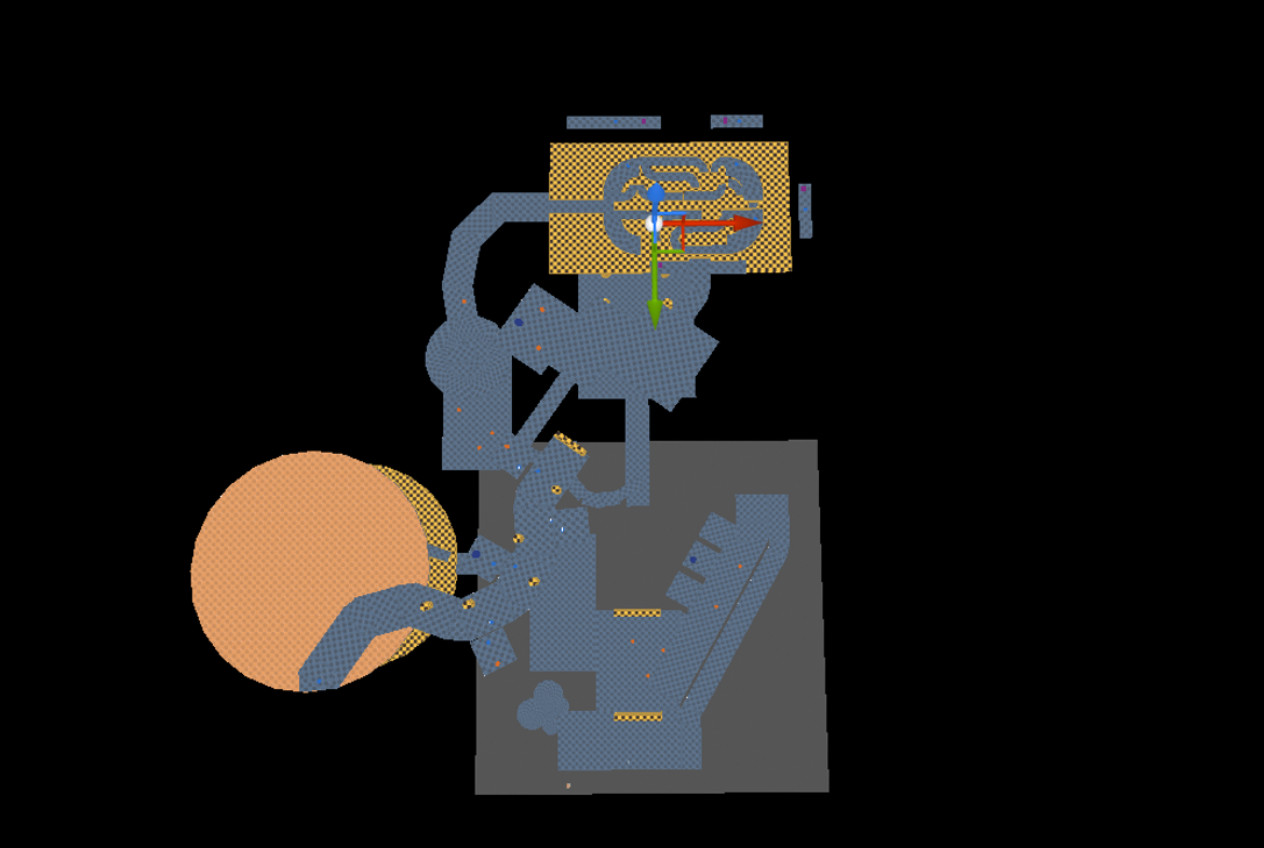
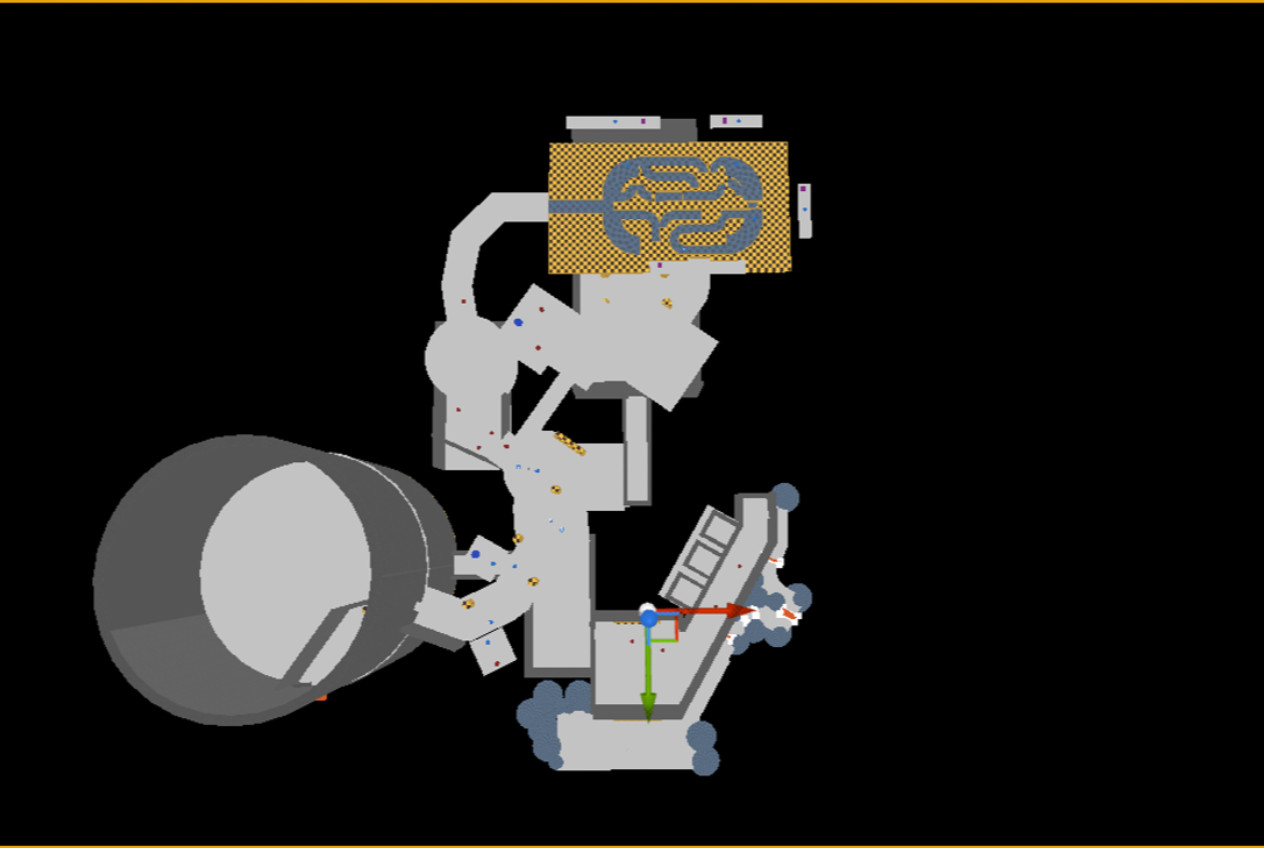
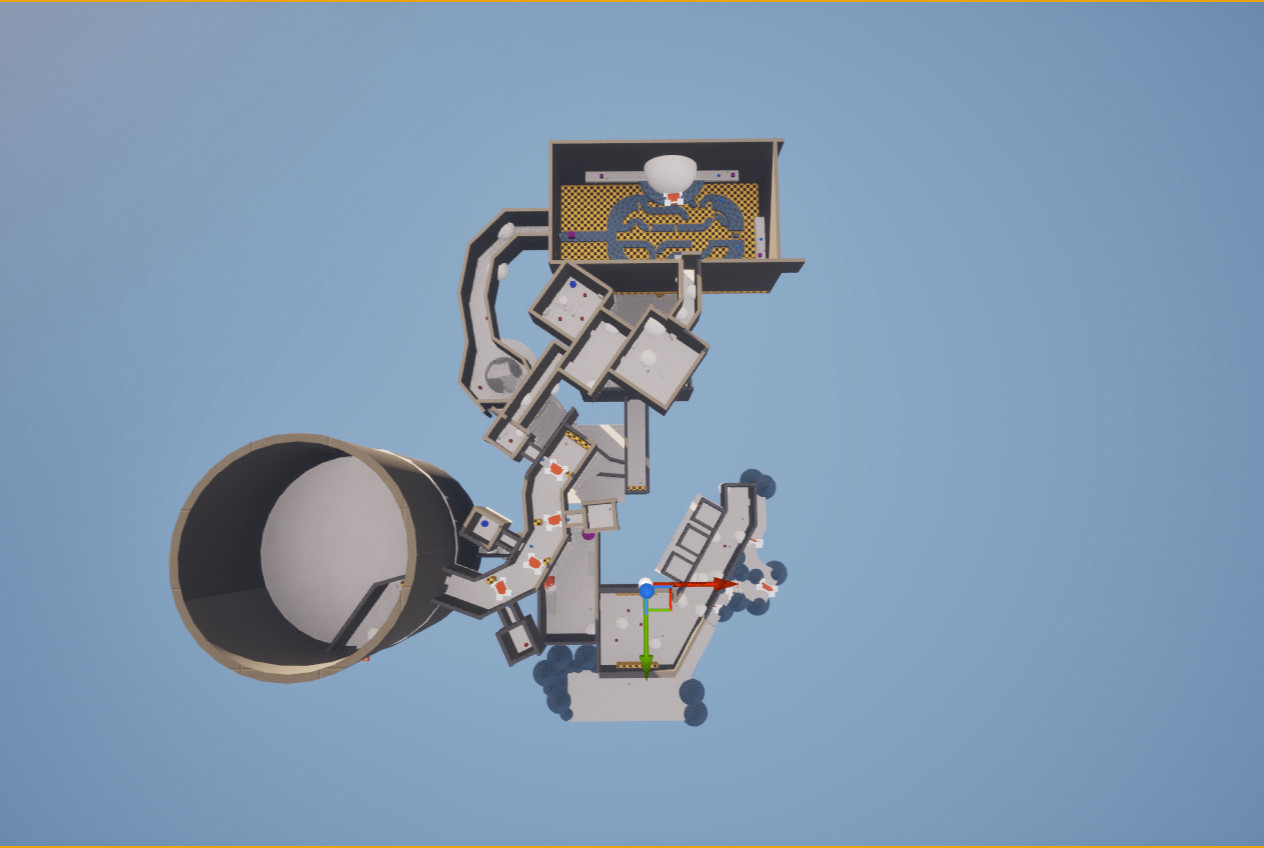
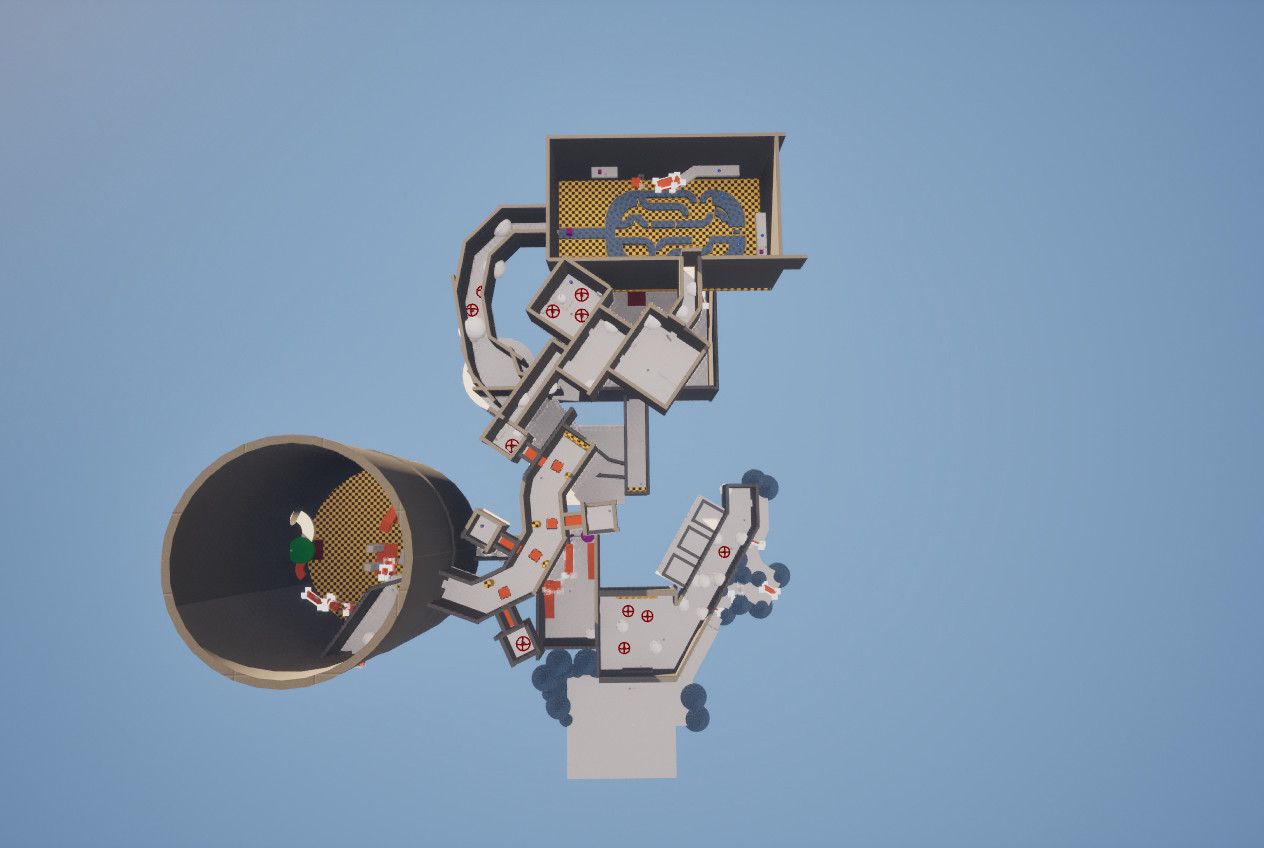
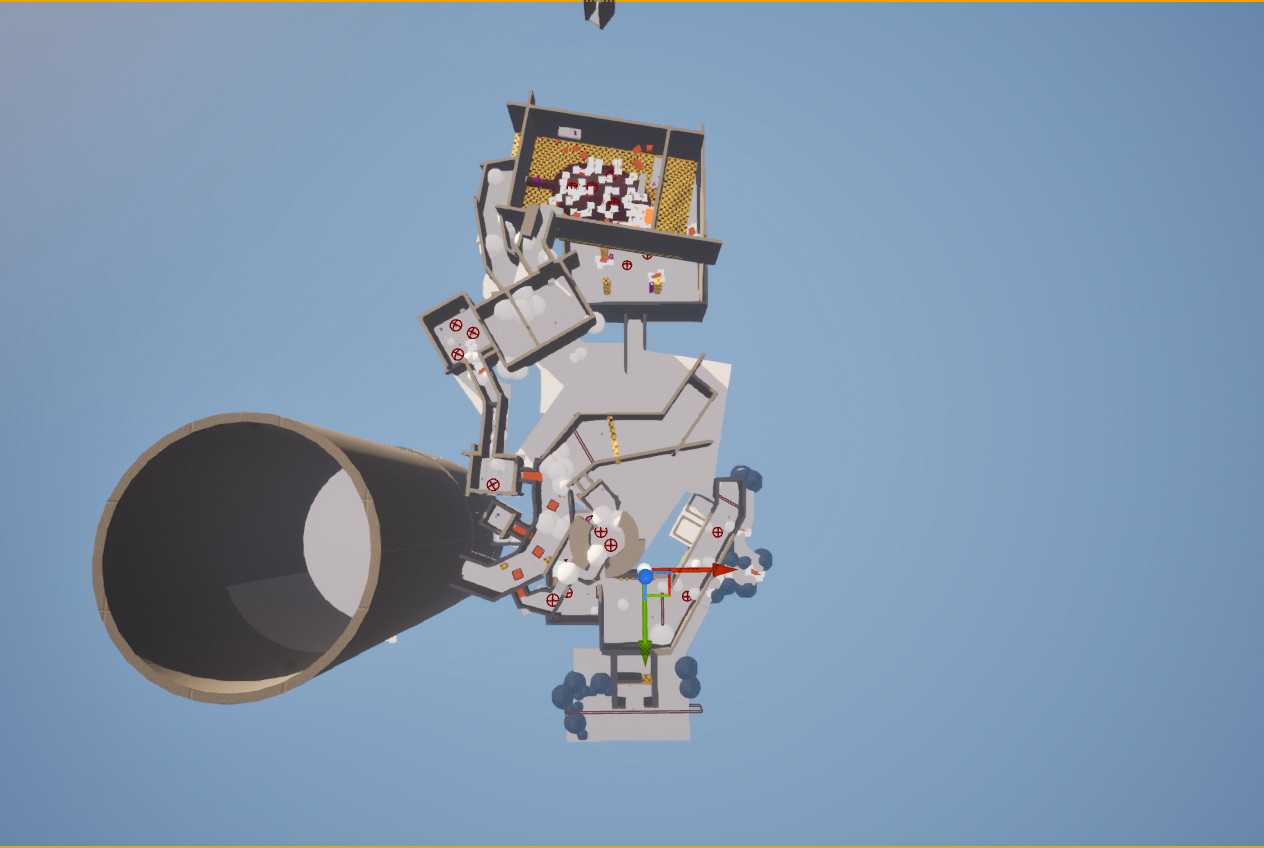
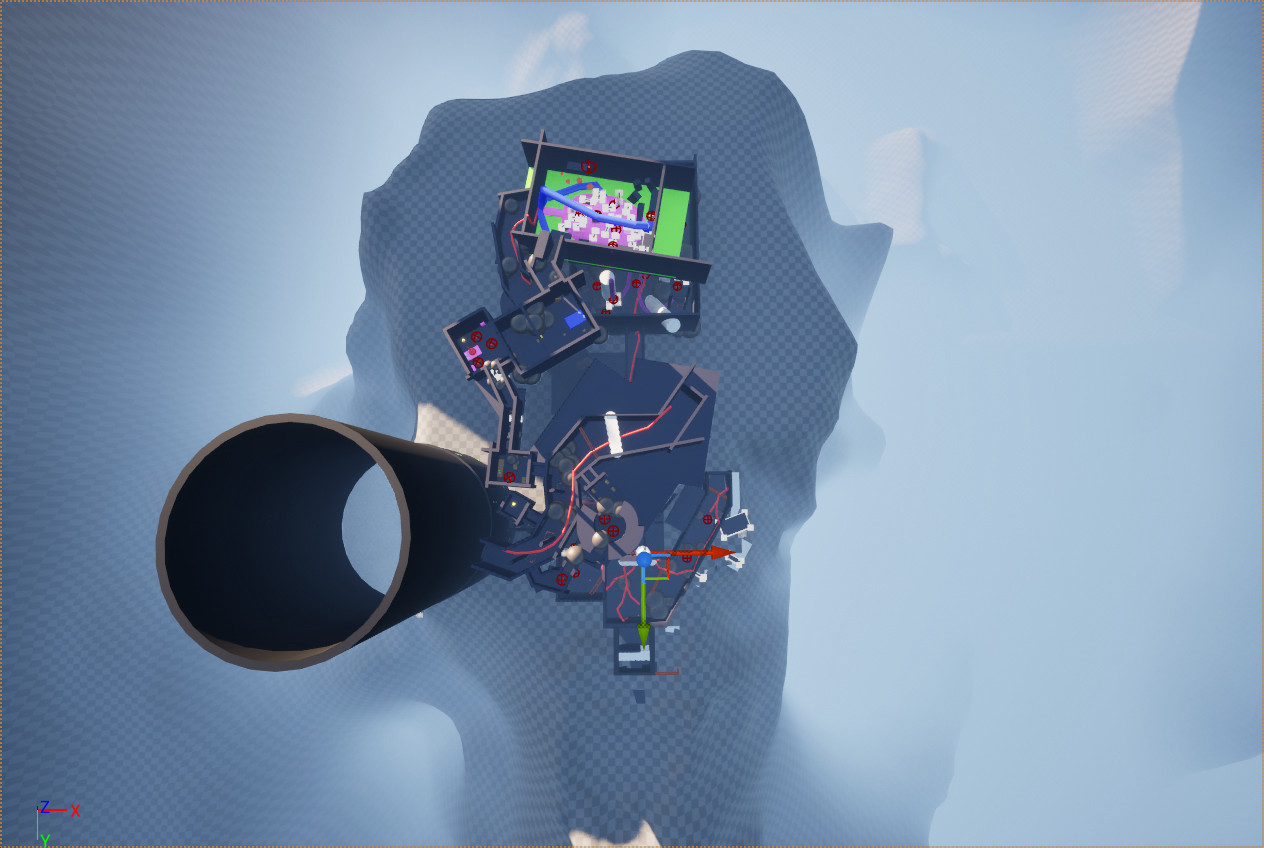
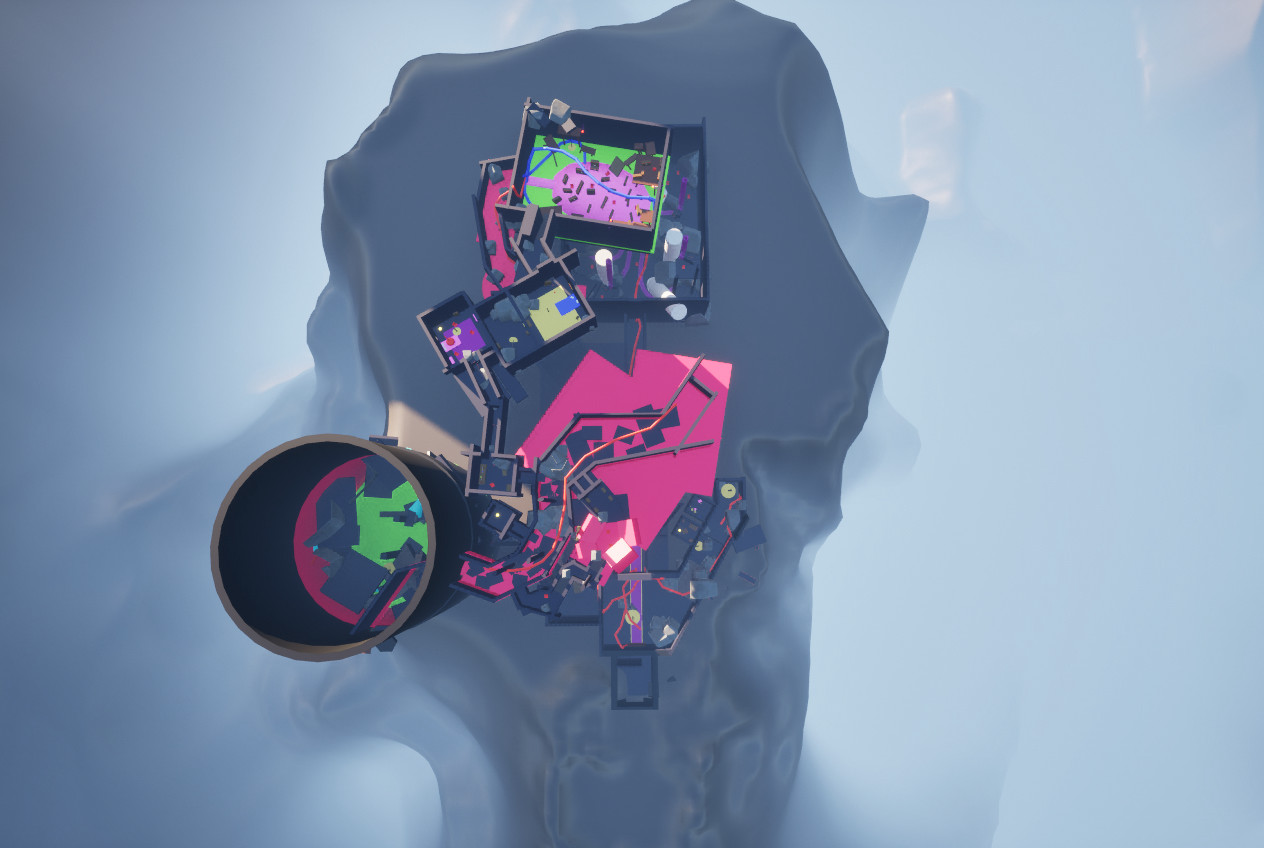
Overview
Overview: In this Souls-inspired level, the player must conquer furniture enemies, solve puzzles, and defeat bosses to destroy the castle’s living heart.
Setting: A life-draining living castle powers a barrier blocking the Thunderlands. This level takes place atop a cliff under cloudy, gloomy skies.
Constraints:
- Engine: Unreal Engine 5
- Perspective: Third-person
- Platform: PC
- Assets: Limited Art and Starter Assets
Unusual Encounters and Environments
To reach the heart of the living castle, players must battle through its bizarre, animated interiors, including:
- Furniture enemies that come to life to attack the player
- Stone hands that slam down to crush the player
- Giant teeth that force the player to take detours
- Fire shot from a living oven inside a tower-turned-stomach
- A giant brain in a ruined library
Narrative and Lore
Narrative unfolds through meshes, color, and text, becoming more focused deeper into the level and revealing hidden lore.
- Contrasting bedrooms hint at former inhabitants and their fates.
- A cluttered desk with medical supplies suggests a desperate attempt to solve a health crisis.
- Ruined gifts and portraits imply a wealthy family brought to ruin.
- A fleshy mass hanging from the ceiling onto the daughter’s bed adds mystery and unease.
Challenges and Puzzles
Progression involves escalating challenges, combat, puzzles, and platforming.
- Mini-boss fight: dodge fire projectiles, platform, and avoid hazards.
- Solve a scale puzzle using defeated enemies as weight.
- Platform across moving stone hands to reach new areas.
- Cut down torches to escape the brain/library section.
- Dodge projectiles, fight enemies, and plug giant blood veins.
Walkthrough
The level has the player explore the living castle while solving puzzles, fighting enemies, platforming, and facing off against bosses.
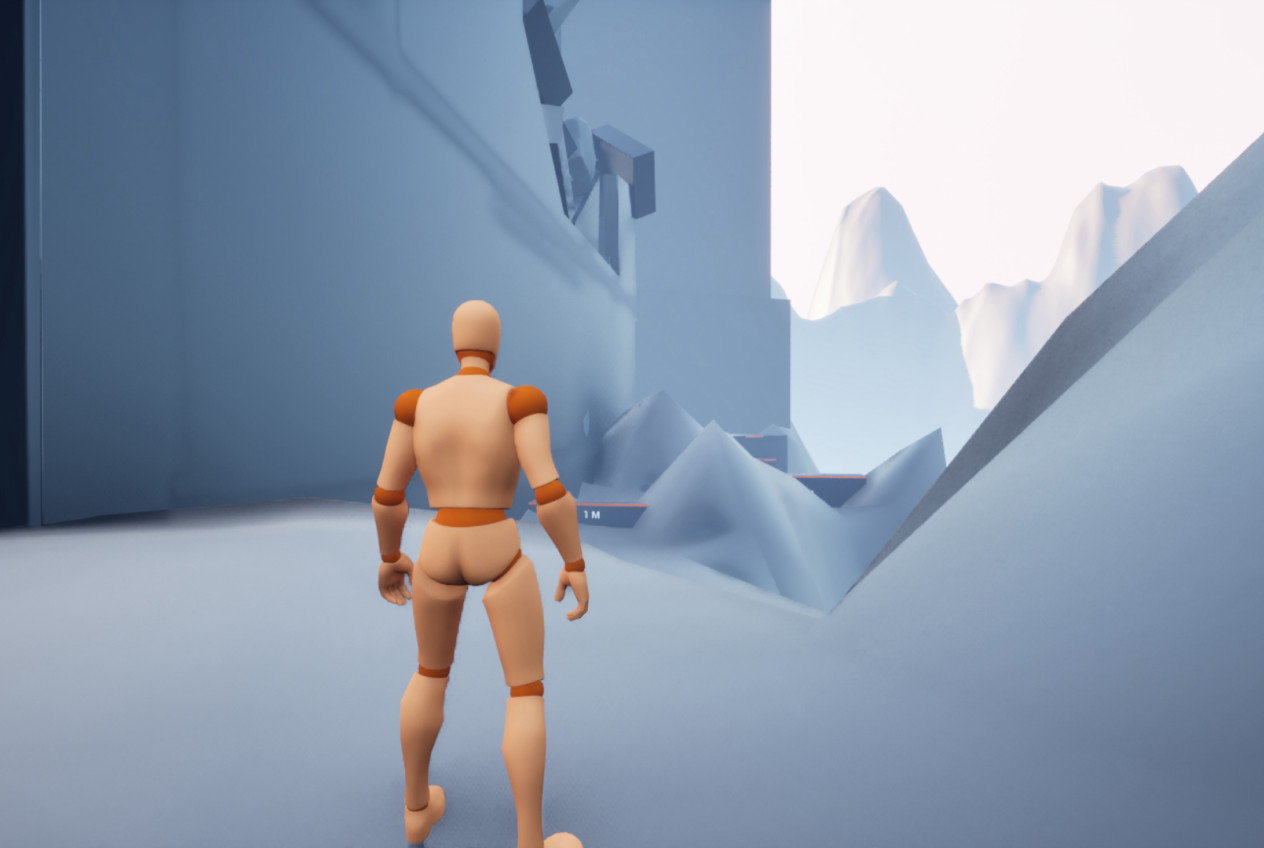
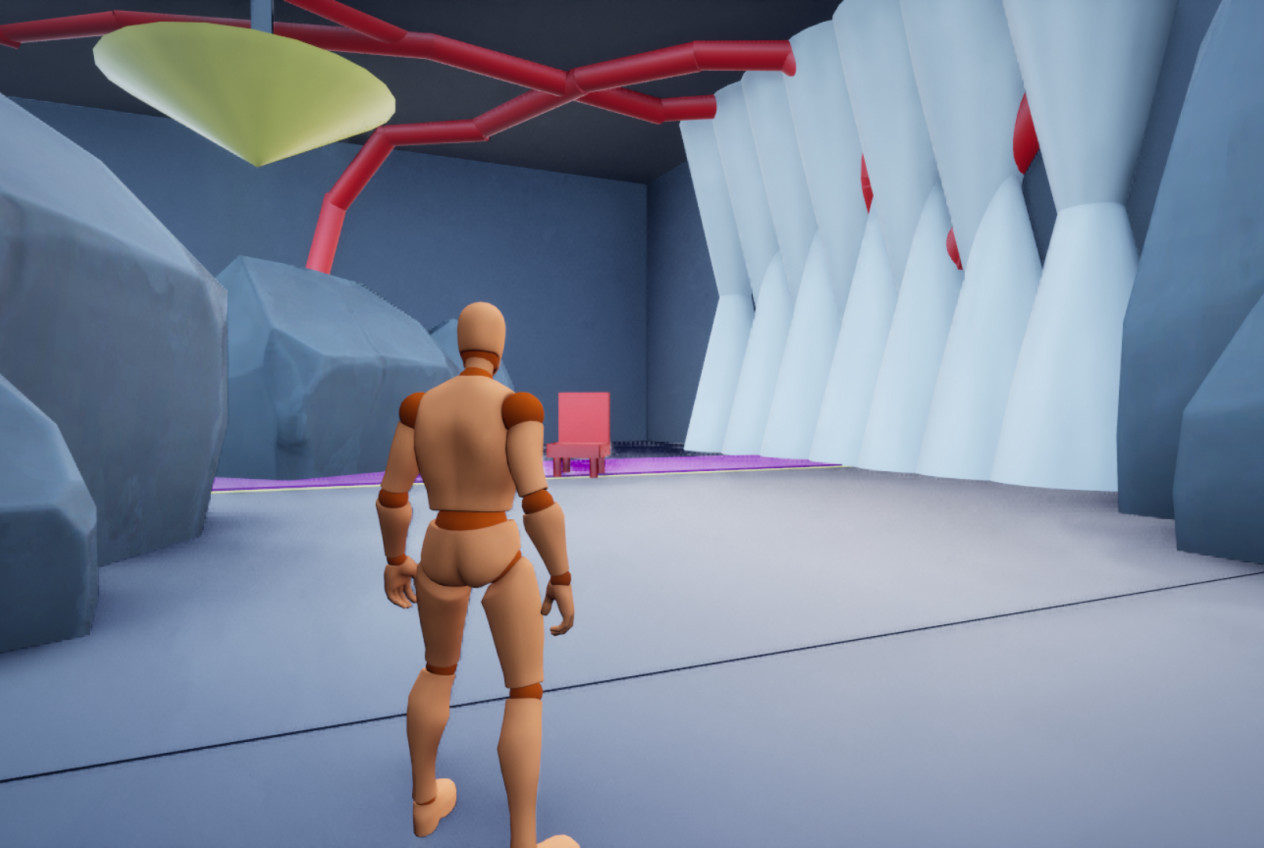
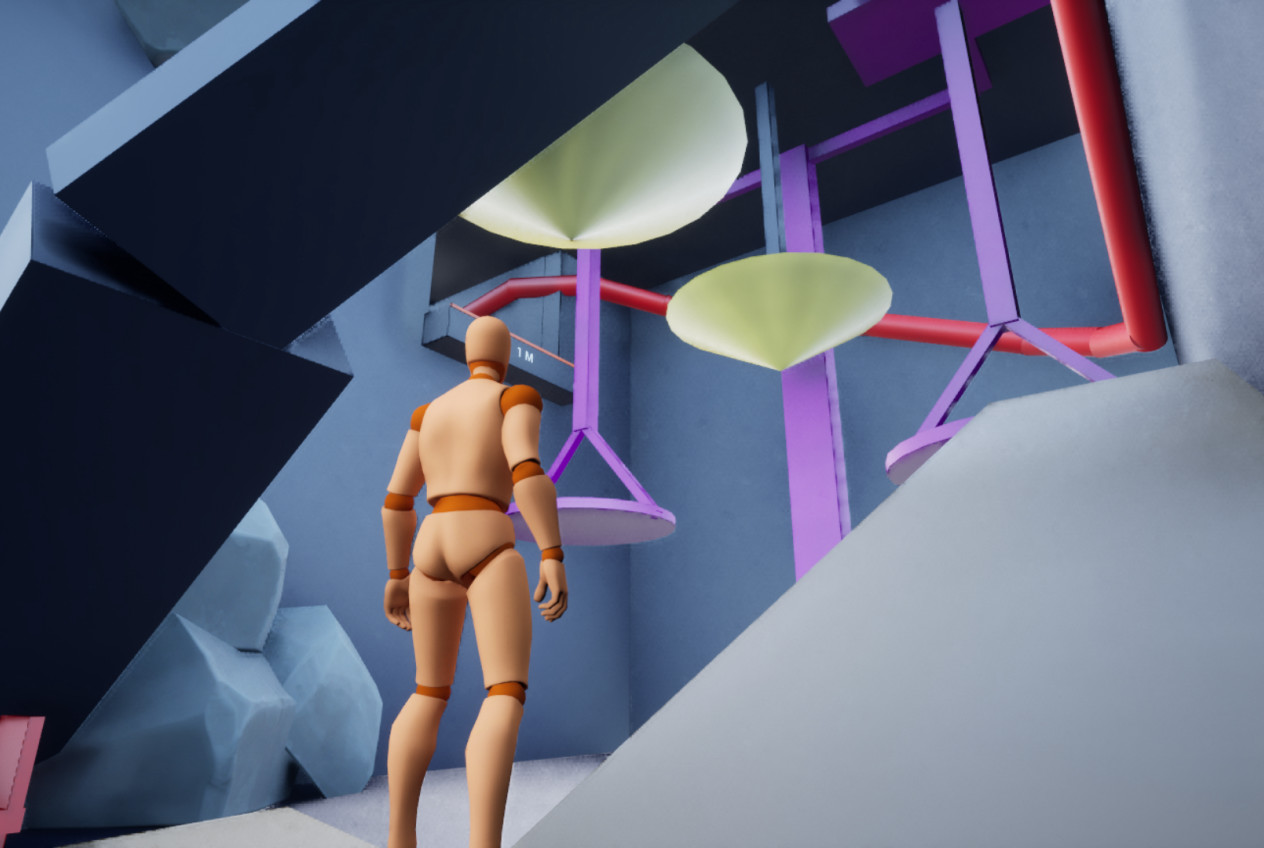
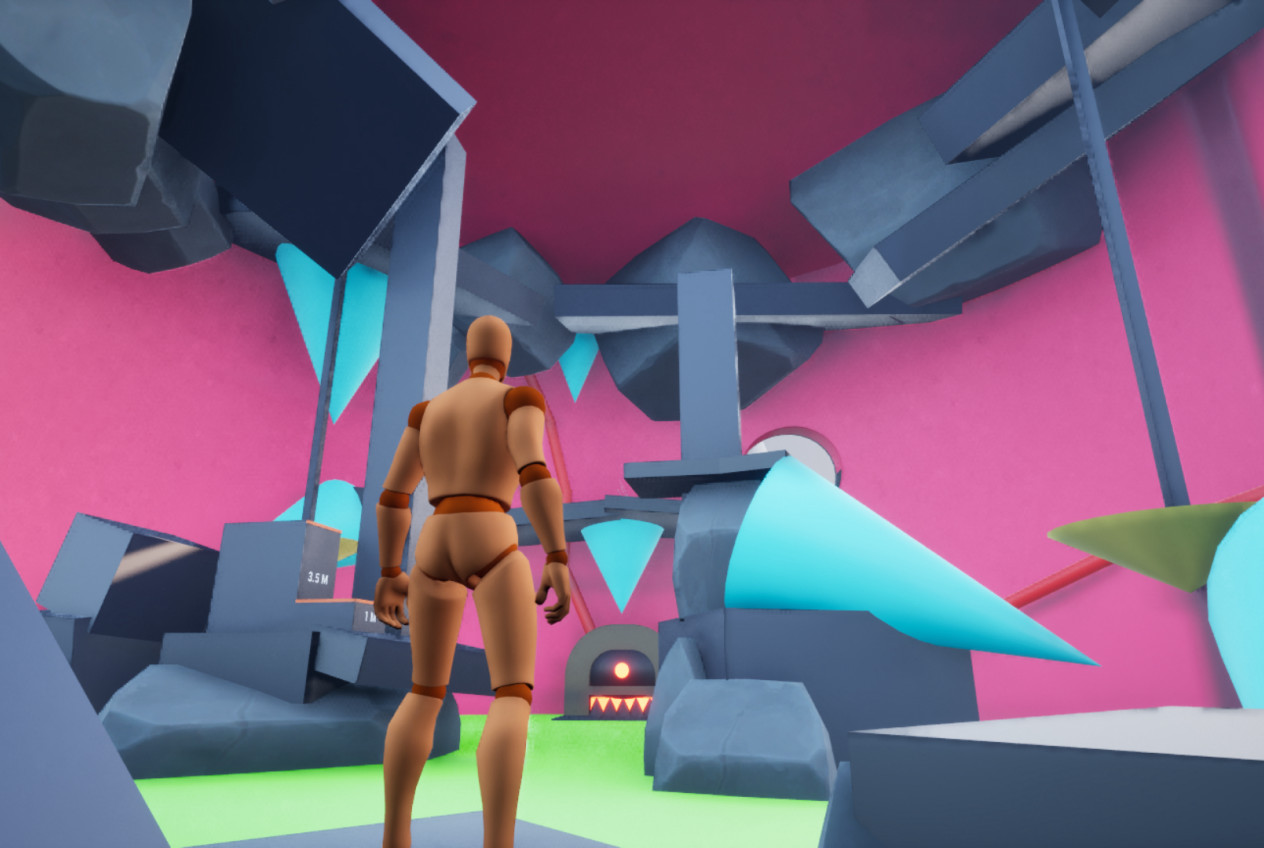
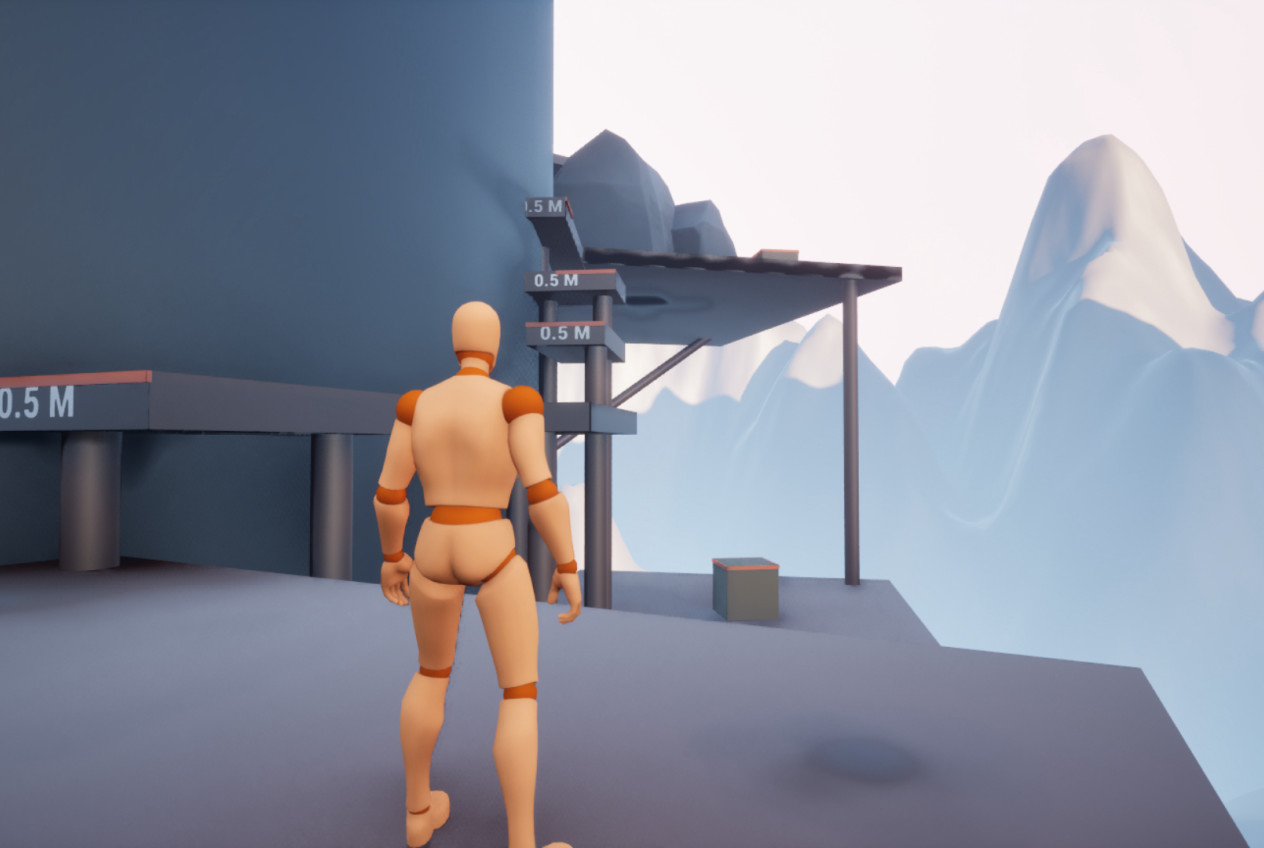
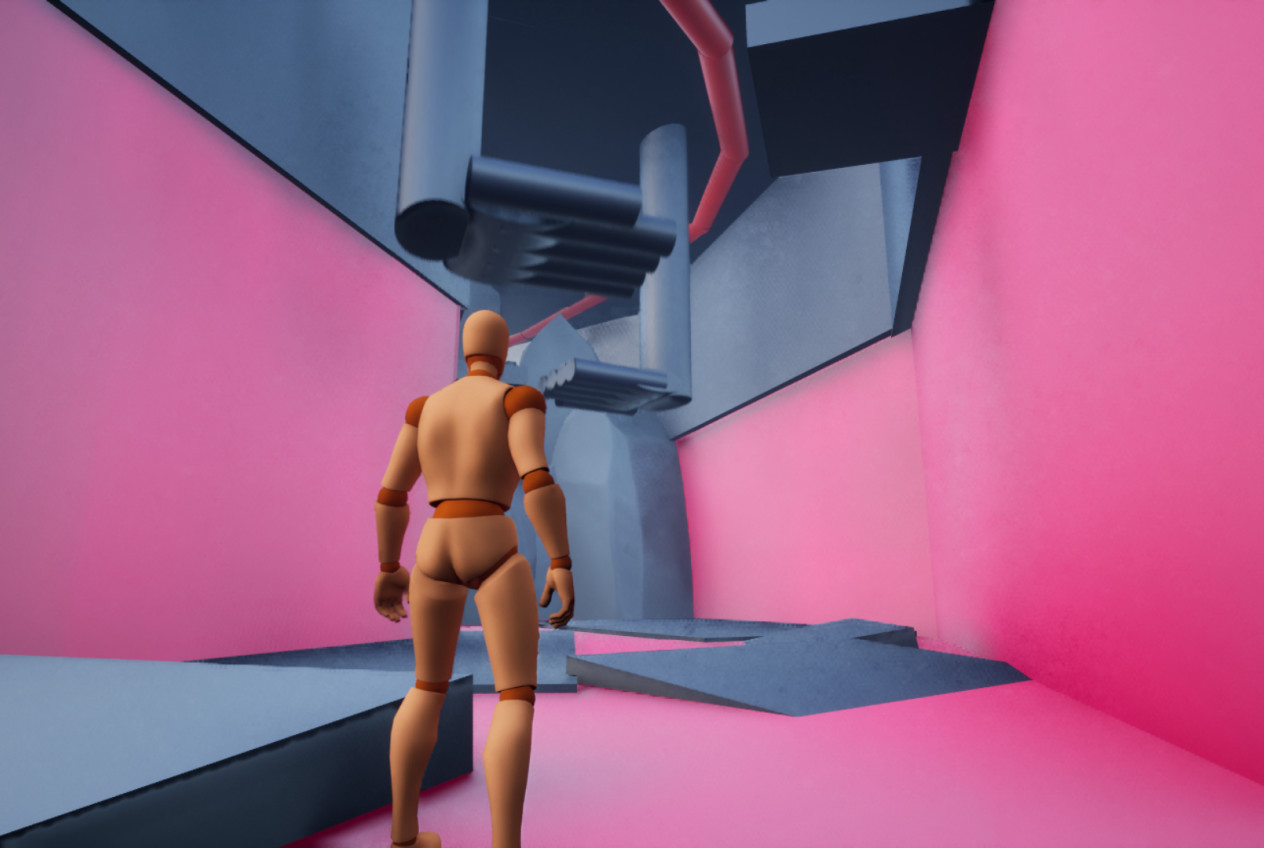
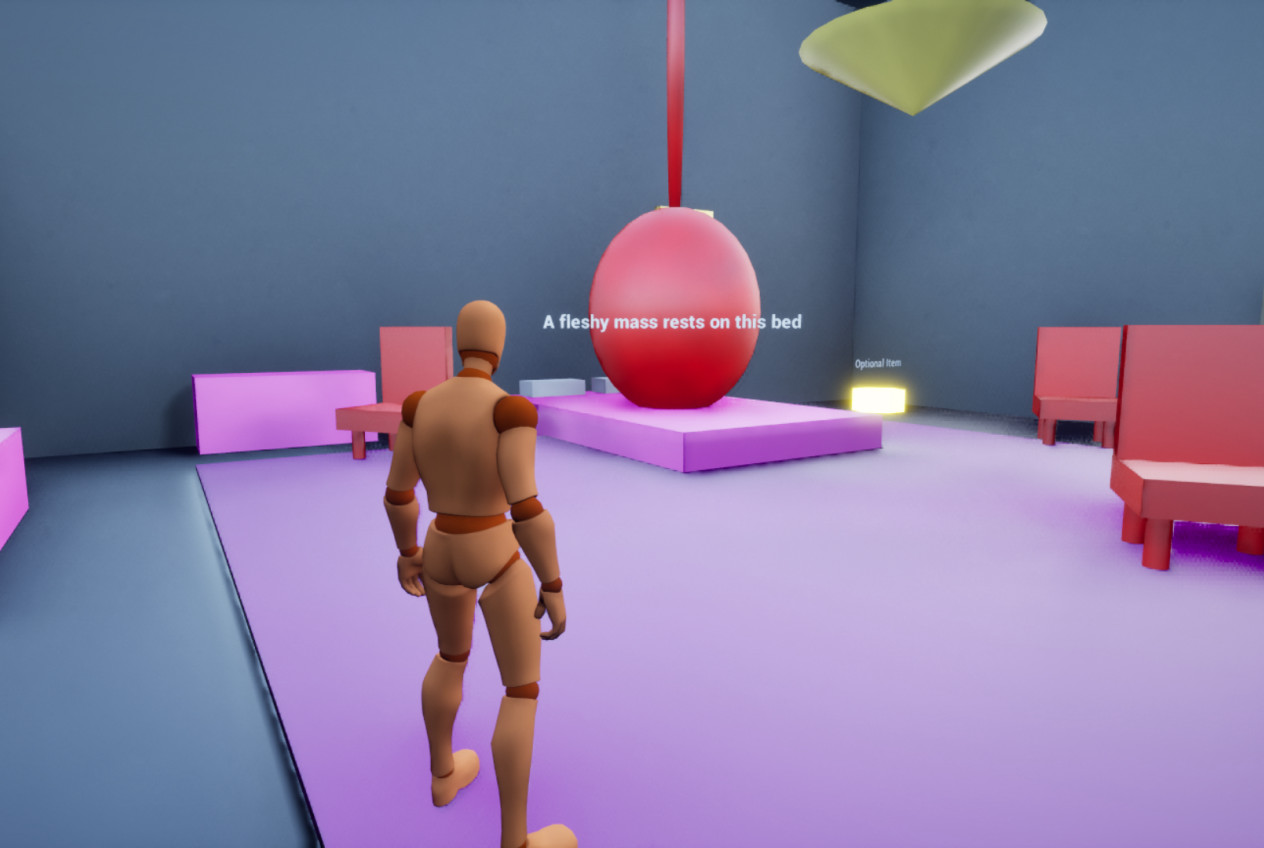
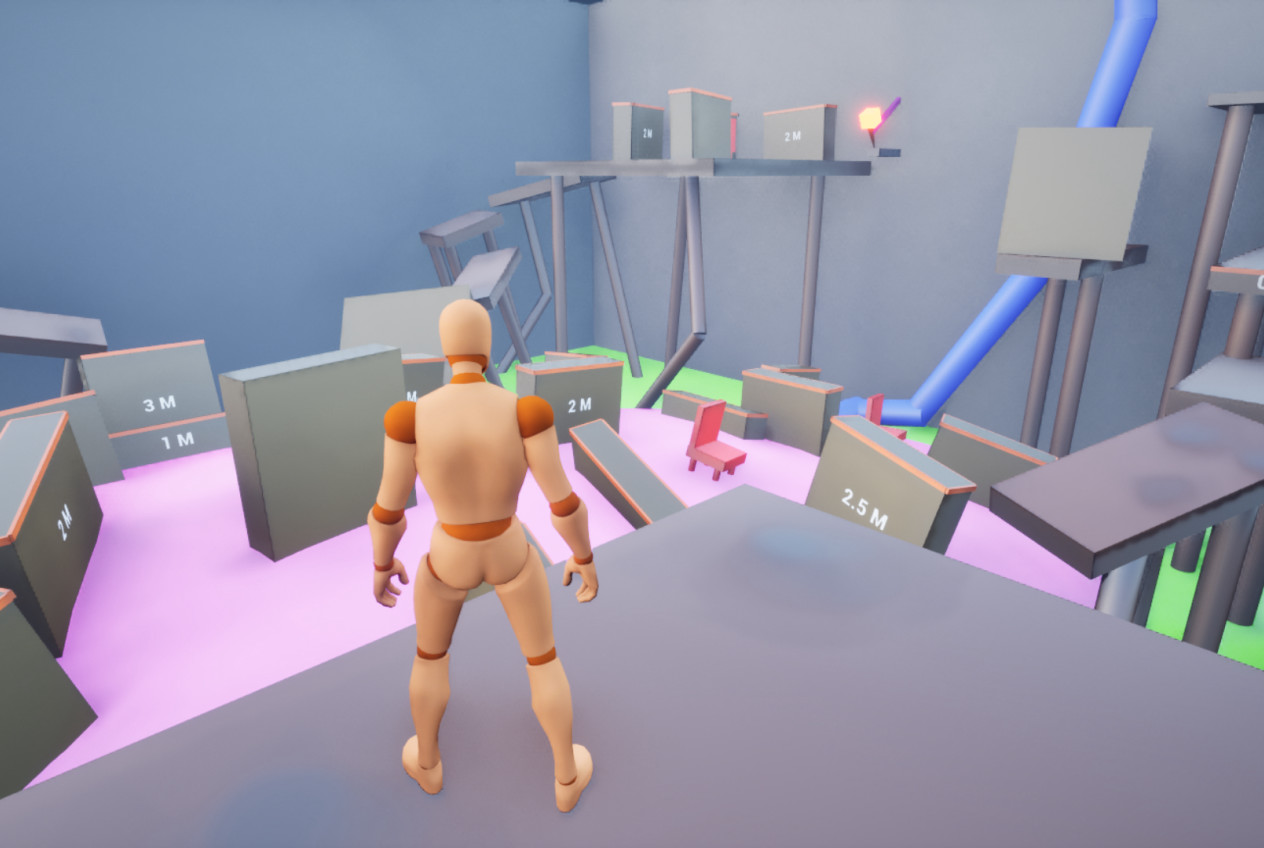
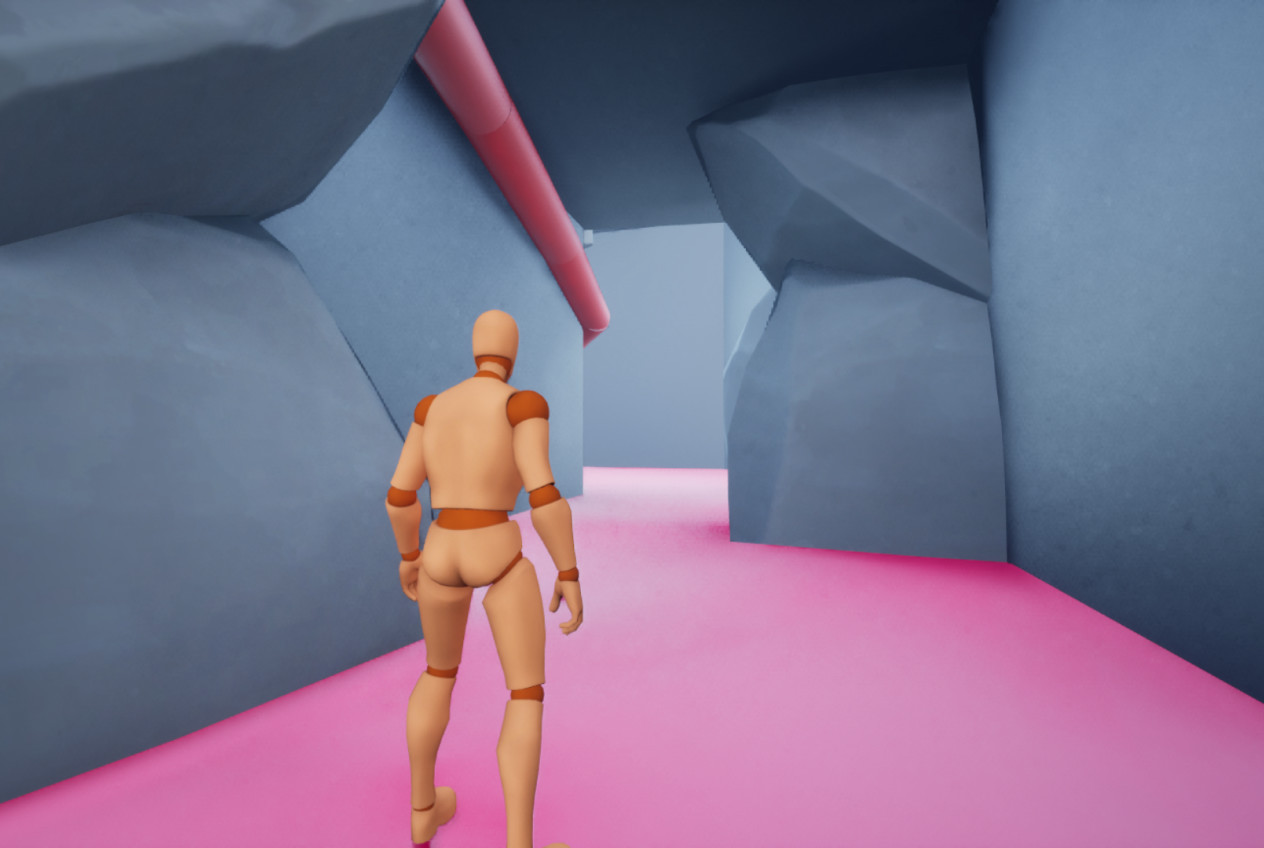

- The player begins outside the castle.
- Hazard blocks the main entrance.
- A broken wall on the right cliff offers a way in.
- The player explores the castle’s first-floor.
- The living castle animates furniture to attack.
- Throne room blocked, but a dining hall is accessible nearby.
- The path to the kitchen is blocked by a raised floor.
- The player must solve a weight puzzle using defeated enemies to proceed.
- Entering the kitchen starts an oven mini-boss fight.
- The player dodges fire while platforming on broken castle parts.
- Reaching the icicle platform.
- Exiting the kitchen leads to a broken castle wall.
- The player must climb the outer wall to progress.
- The player re-enters through a high wall into a hallway.
- Stone hands slam down and serve as platforms.
- The player must find the study to reach the bedrooms.
- Furniture enemies guard the daughter’s room; the parents’ room is in ruins.
- A hidden path behind a broken bookshelf leads to the Brain/Library.
- A giant brain and hostile furniture fill the library.
- Brain veins block the path.
- Cutting 3 torches burns the veins, clearing the way.
- The player follows a blood vein to a fleshy floor.
- A trap drops the player into a pit leading to the heart of the castle.
- The player battles the heart in the throne room, dodging blood blobs and fighting furniture enemies.
- To defeat the boss, they must clog 4 veins with enemies.
Top Down View
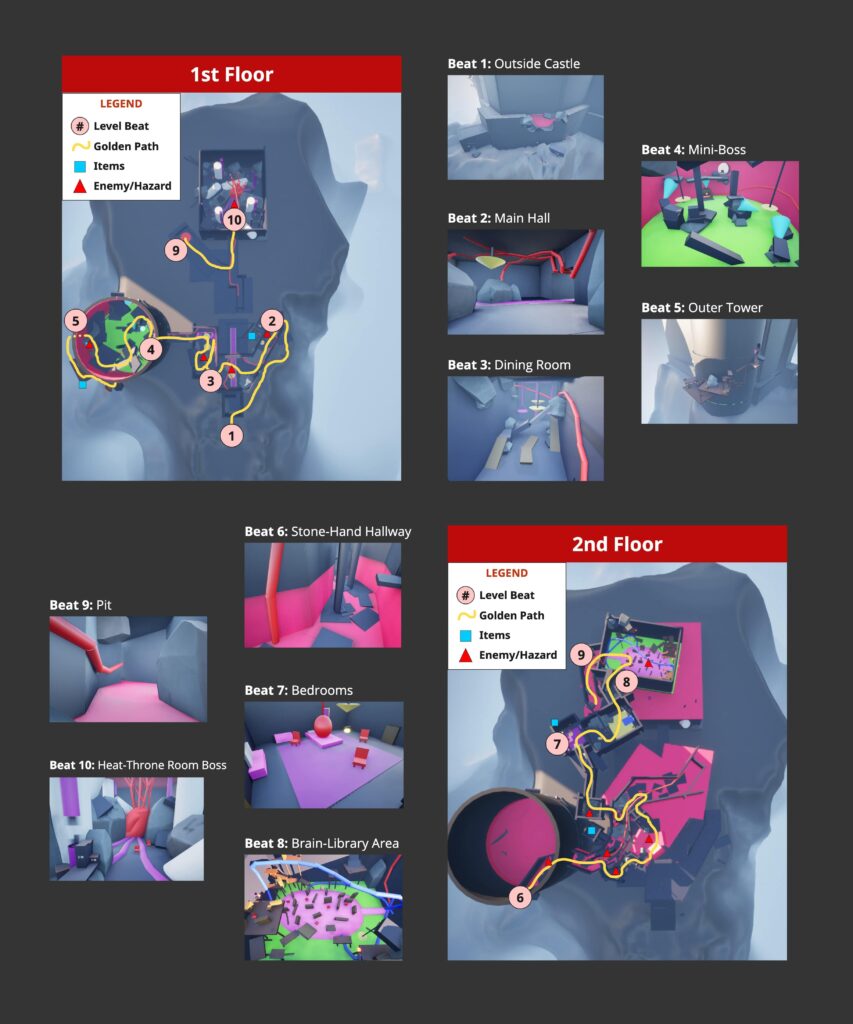
Design Techniques
Used Illusion of Space to Create Grand Spaces
When beginning this project, I wanted to create the illusion of a large castle location, but not create a tedious experience for the player. I created a unique experience by:
- Breaking parts of the castle to make them inaccessible
- Forcing the Player to take unexpected detours using blueprints
- Creating unique passages and areas to progress through the level
Scripted Blueprints to Communicate Events and Hazards
Instead of detailing every event and interaction with text, I used blueprints to illustrate key moments.
- Enemy spawning and combat
In-level events like teeth blocking the path or the fleshy floor opening to drop the player into a pit - Moving hazards the player can use to get a feel of the level
- Functioning puzzles like dining room weight scale puzzle and library brain torch puzzle
Used Color Pattern and Affordances to Teach Players
While the desolate colors of my level set the mood and tone, I wanted to use colors in ways to help the player by creating a pattern.
- Dark colors mainly used on safe level elements
- Bright colors used on dangerous hazards and enemies
- Emissive material on puzzle elements and enemies to attract attention
- Orange edges on mantle-able objects
Process
1: Research, ideation and planning
This was the start of my level’s pre-production. My goal was to define the level, analyze games, research references, and explore other media.
Defining My Level: I focused on the level’s goal, setting, mechanics, and what the player can do. I aimed for a medieval/fantasy theme with the main goal of killing a living castle.
Analyzing Games: I drew inspiration from games like Elden Ring, Baldur’s Gate 3, and The Legend of Zelda: Echoes of Wisdom to guide my level design.
Researching Real-World References: I studied castle interiors, especially damaged rooms, to help visualize my level’s spaces.
Exploring Other Media: I looked at Monster House and Howl’s Moving Castle for ideas on how to depict alive, moving buildings.
2: Document (via LDD), mapped out beats, prototype on map
I created a level design document to keep track of and organize all information about the project. This included:
- Level Objectives
- Narrative & Setting
- Gameplay Mechanics
- Enemy Encounters
I created a beat sheet detailing each player experience—type (combat, narrative, puzzle, etc.), intensity, and sequence—and organized them using a color-coded key.
My first layout was just to have a basic understanding of where the beats and locations are. I simply sketched it on paper and used colored ink pens to add more context.
3: Blockout, Iterate, Blockout Again
When designing for this project, I followed a cycle of blocking out my level, playtesting it, and iterating based on the feedback.
Iteration Highlight: Space Identity
Results: Illustrated the identity of spaces throughout the level
- Contextualized the identity of platforms, floors, and other level elements using simple geometry and color.
Feedback & Problem: When I playtested during this iteration, I noticed that my rough out had an unclear spatial identity that feels arbitrary, making it hard to visualize as a finished environment
- My mentor Nathan’s feedback confirms this as well (see image)
Solutions:
- Using thin brown rectangles for platforms with supports to represent wooden platforms
- Slopes replace with fallen icicles
- Chandeliers and other broken furniture make up smaller platforms
Iteration Highlight: Final Boss Concept
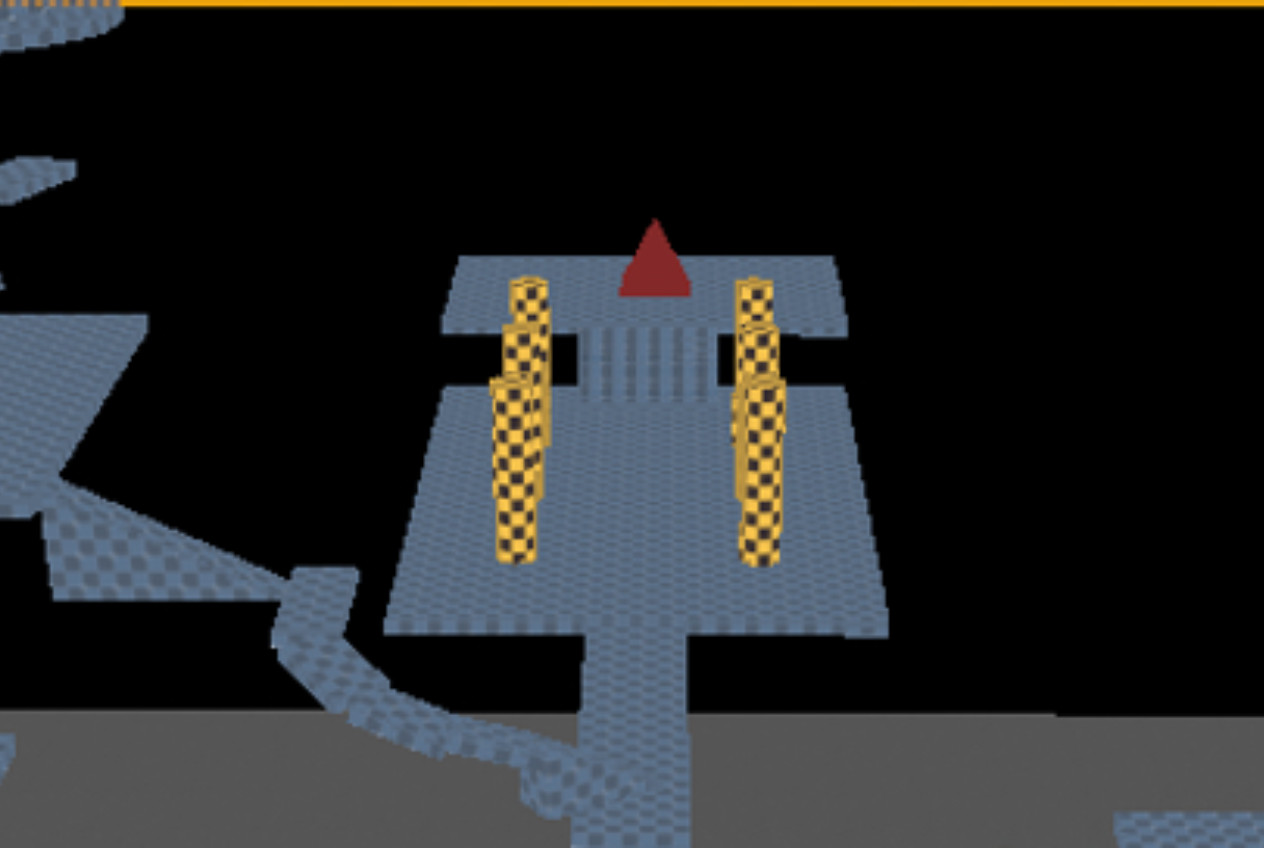
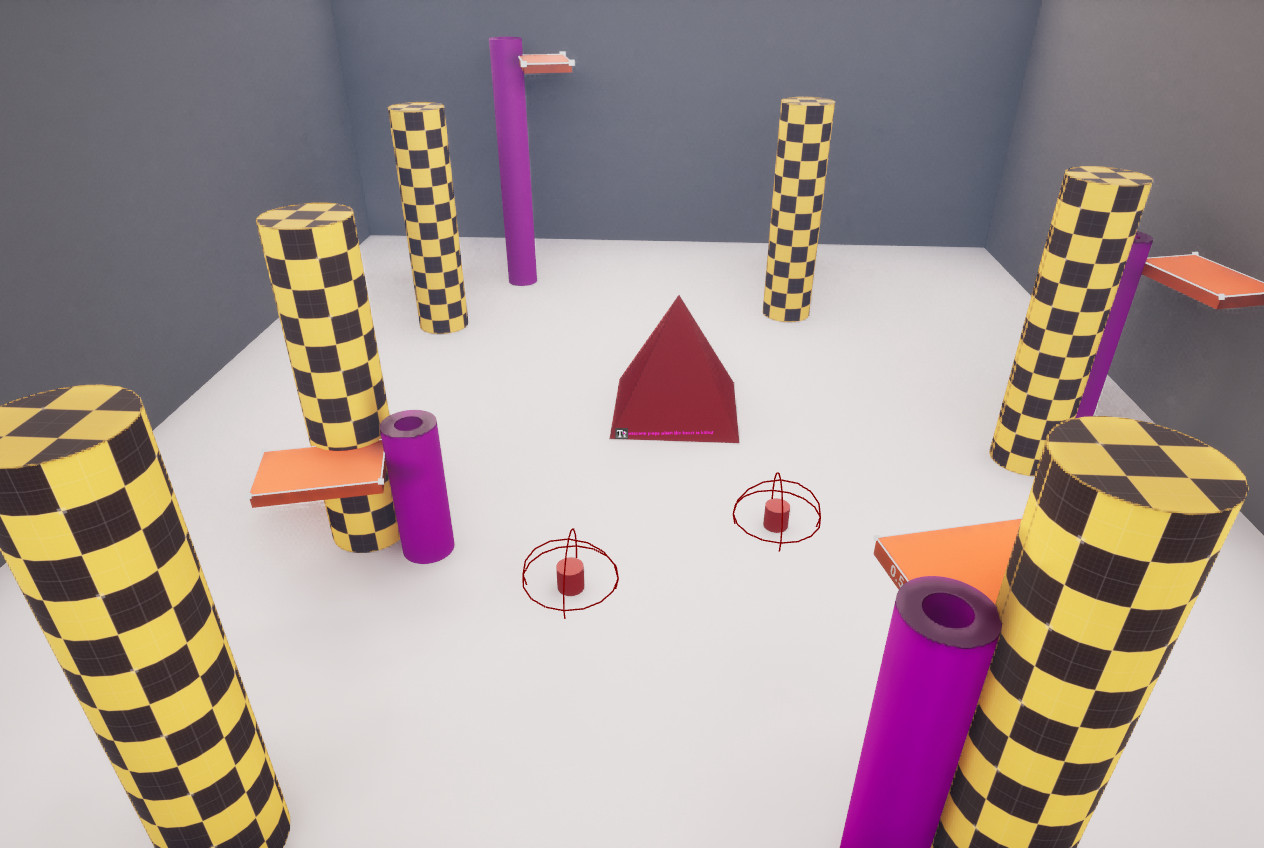
Results: Reconceptualized heart boss battle
- Replaced static and simple behavior patterns with intense and engaging gameplay concepts
- Integrated a new win condition that utilizes previous gameplay mechanics and creates duel-usage in minor enemies.
Feedback & Problem: The current boss concept’s rug hazard pushes the player back to the start of the room, feeling repetitive and tedious. This will cause frustration and boredom for the player.
- From bootcamp colleagues Daniel and Alonso (see playtest footage)
Solutions:
- Brainstorm new boss behaviors based on summoning enemies and shooting projectiles
- Reconceptualize new boss win condition based on clogging veins with defeated enemies, cause a heart attack.
Iteration Highlight: Solidifying Space
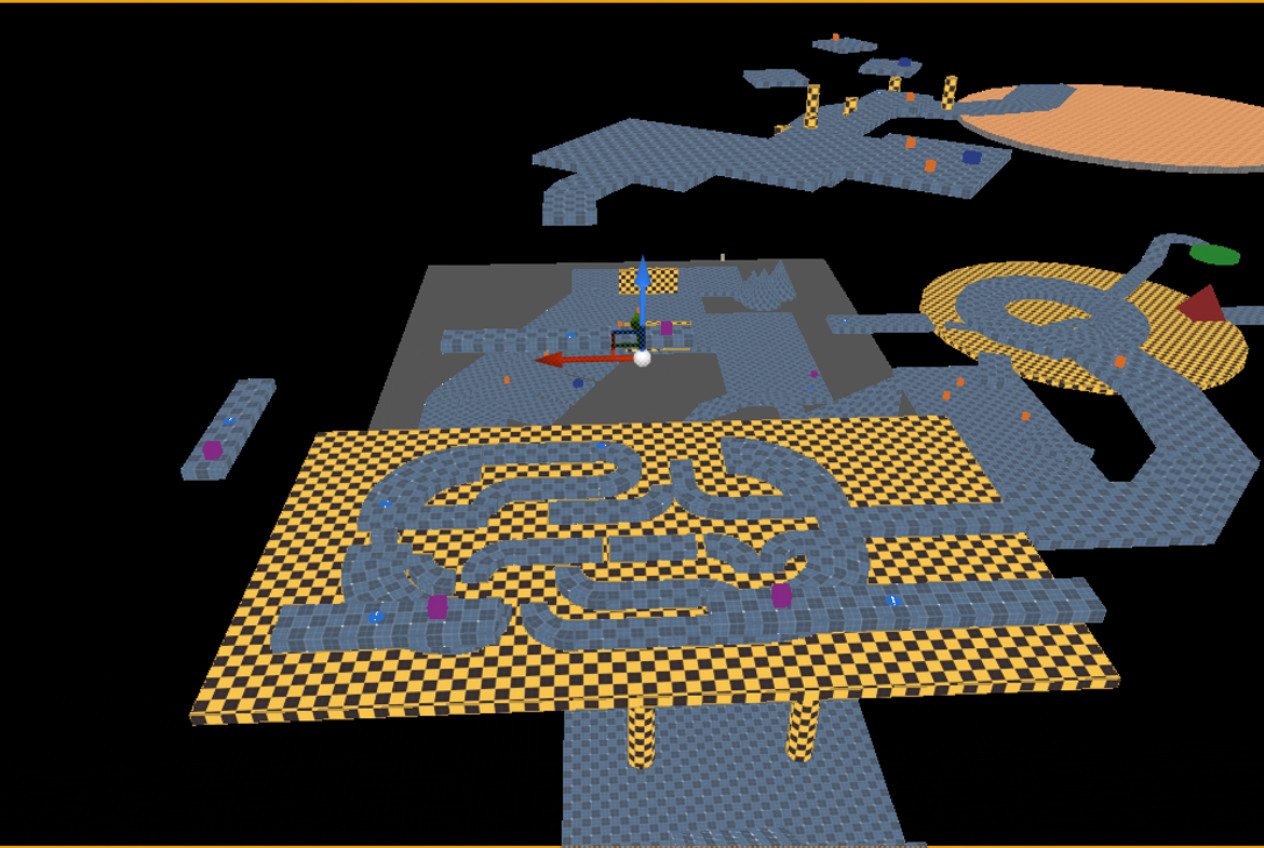
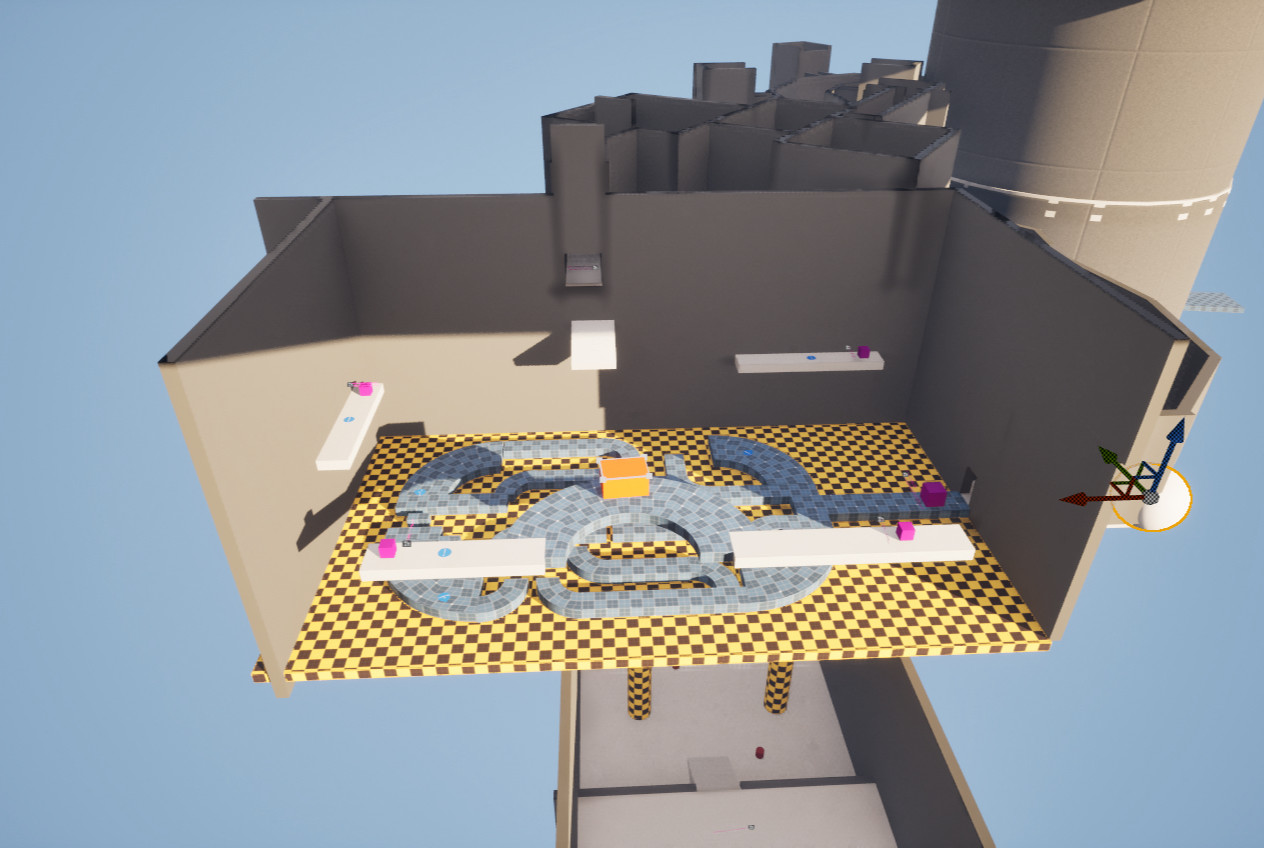
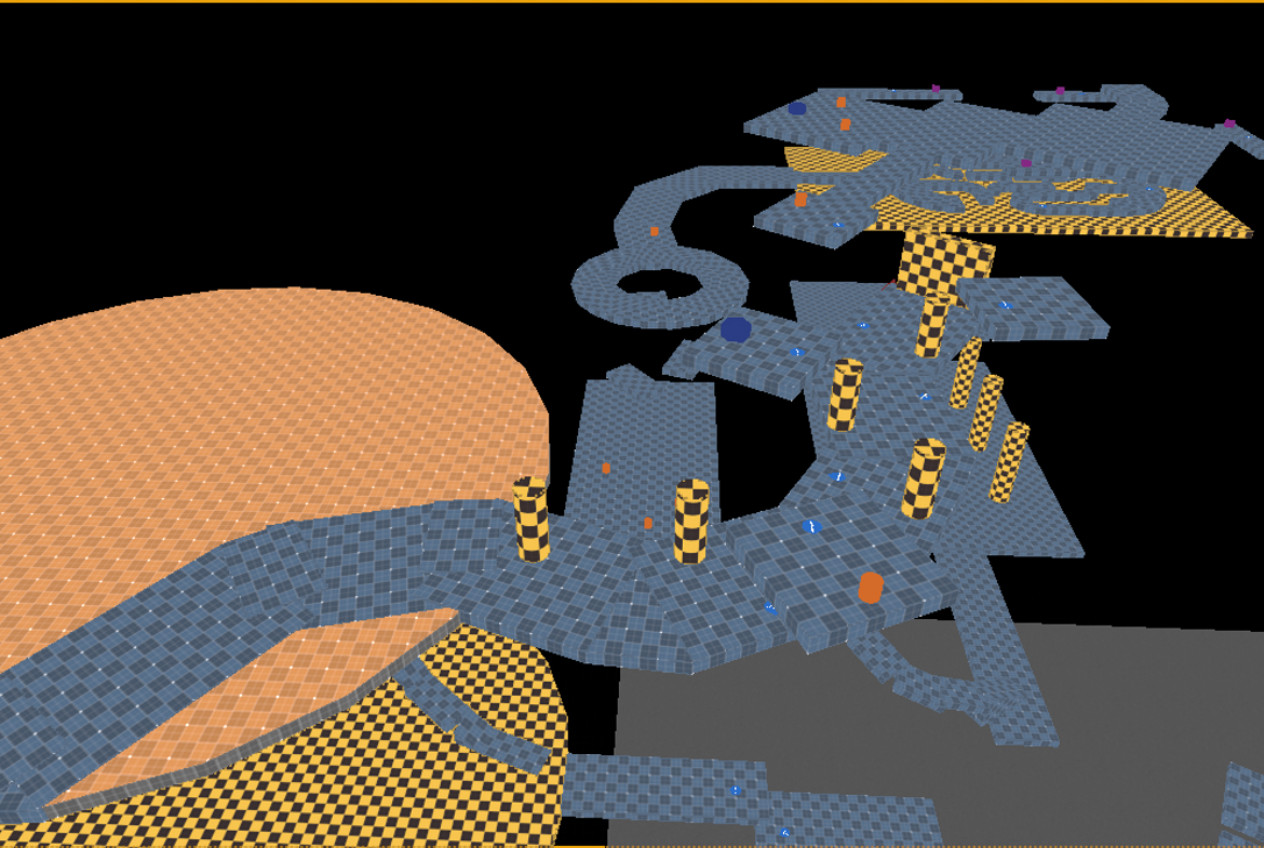
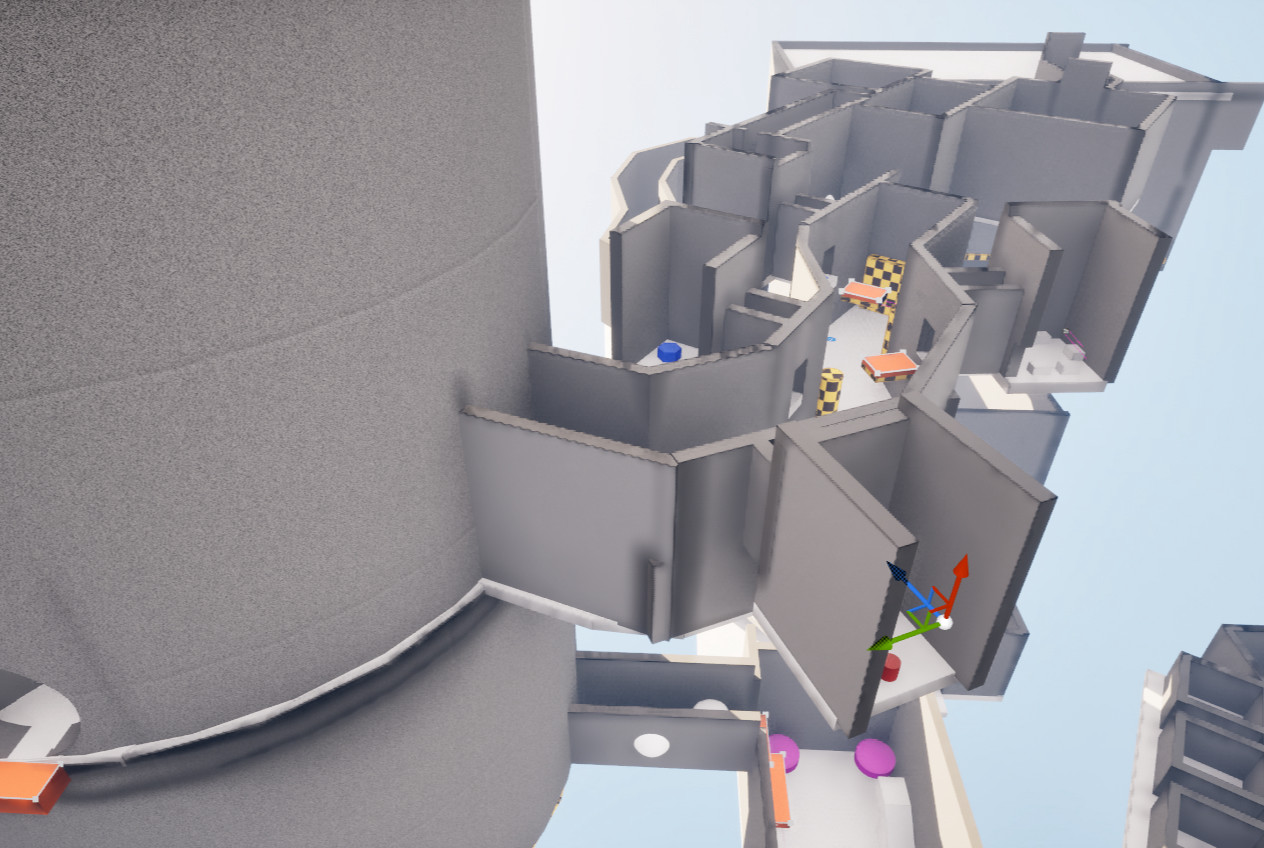
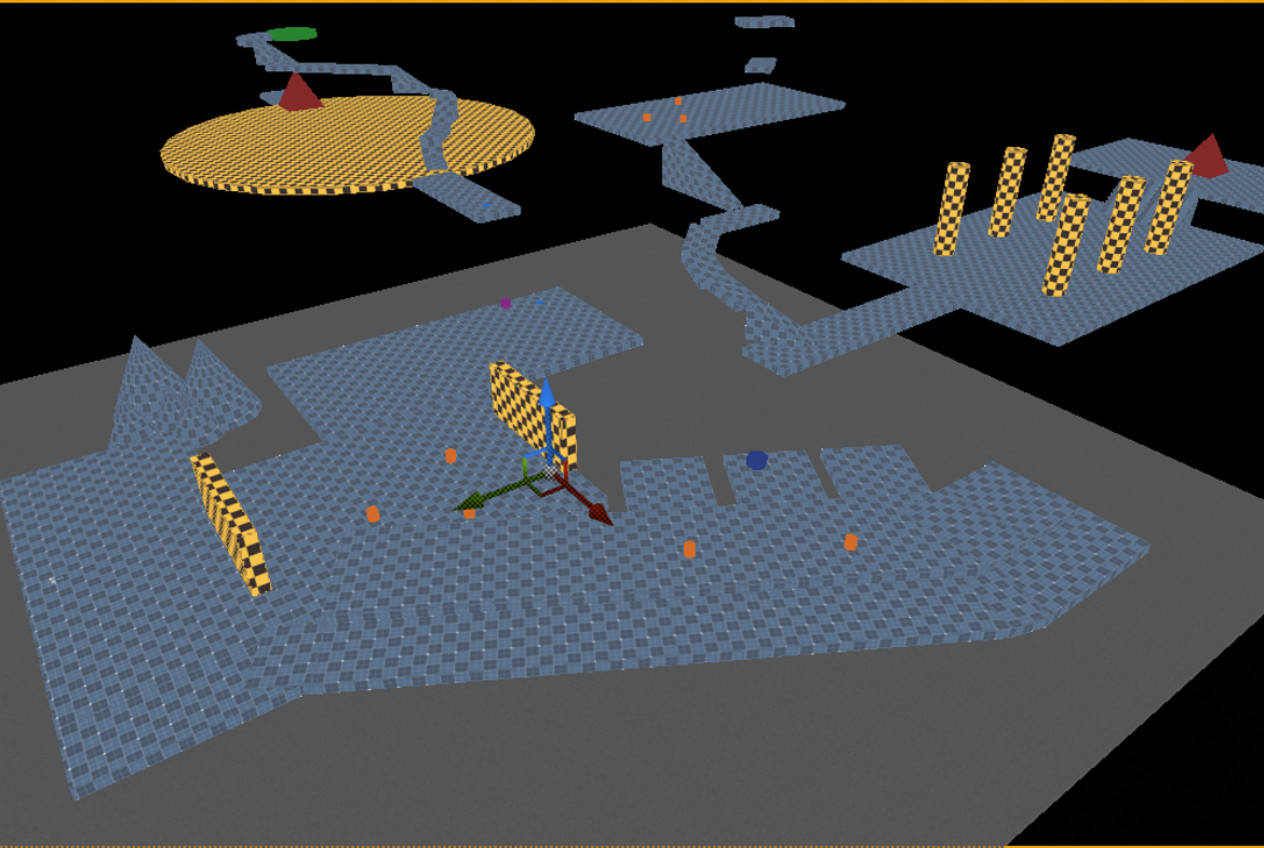
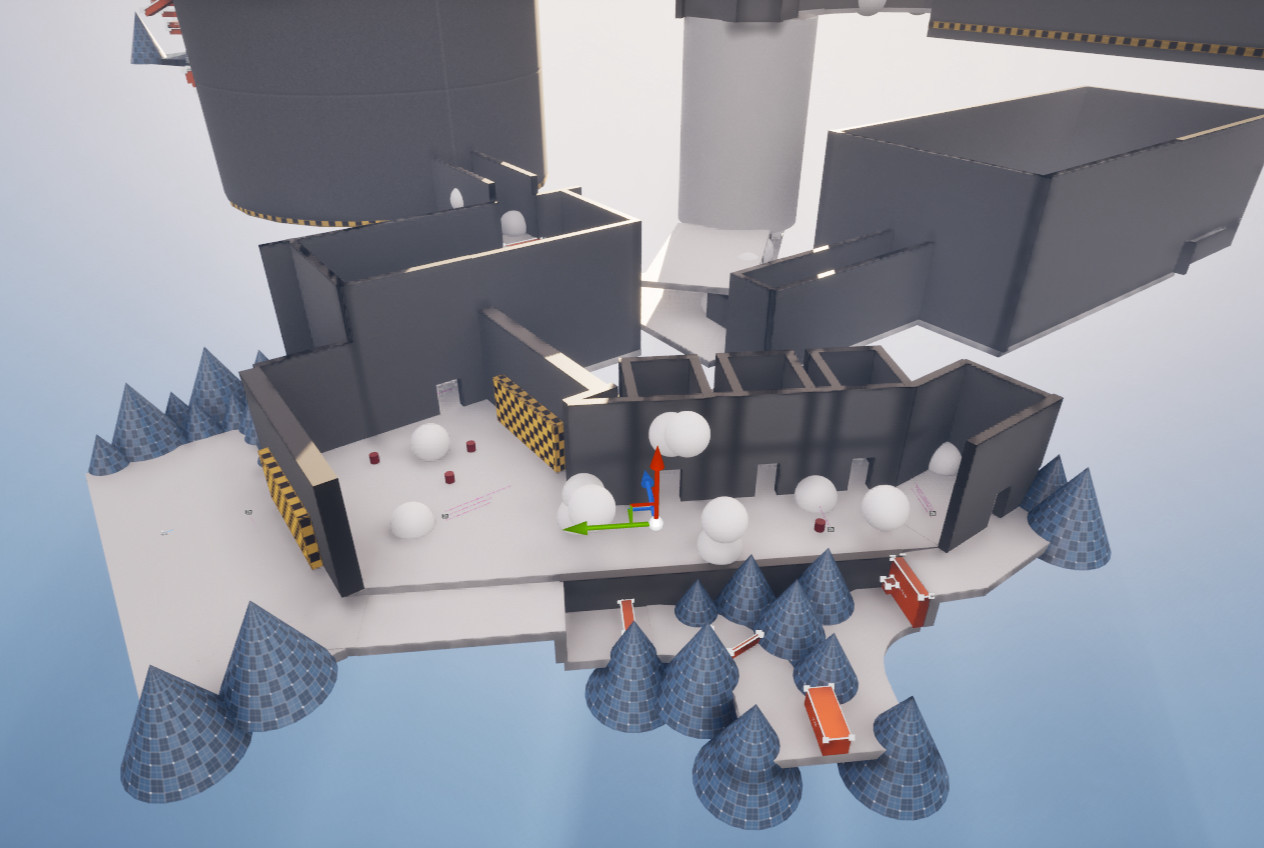
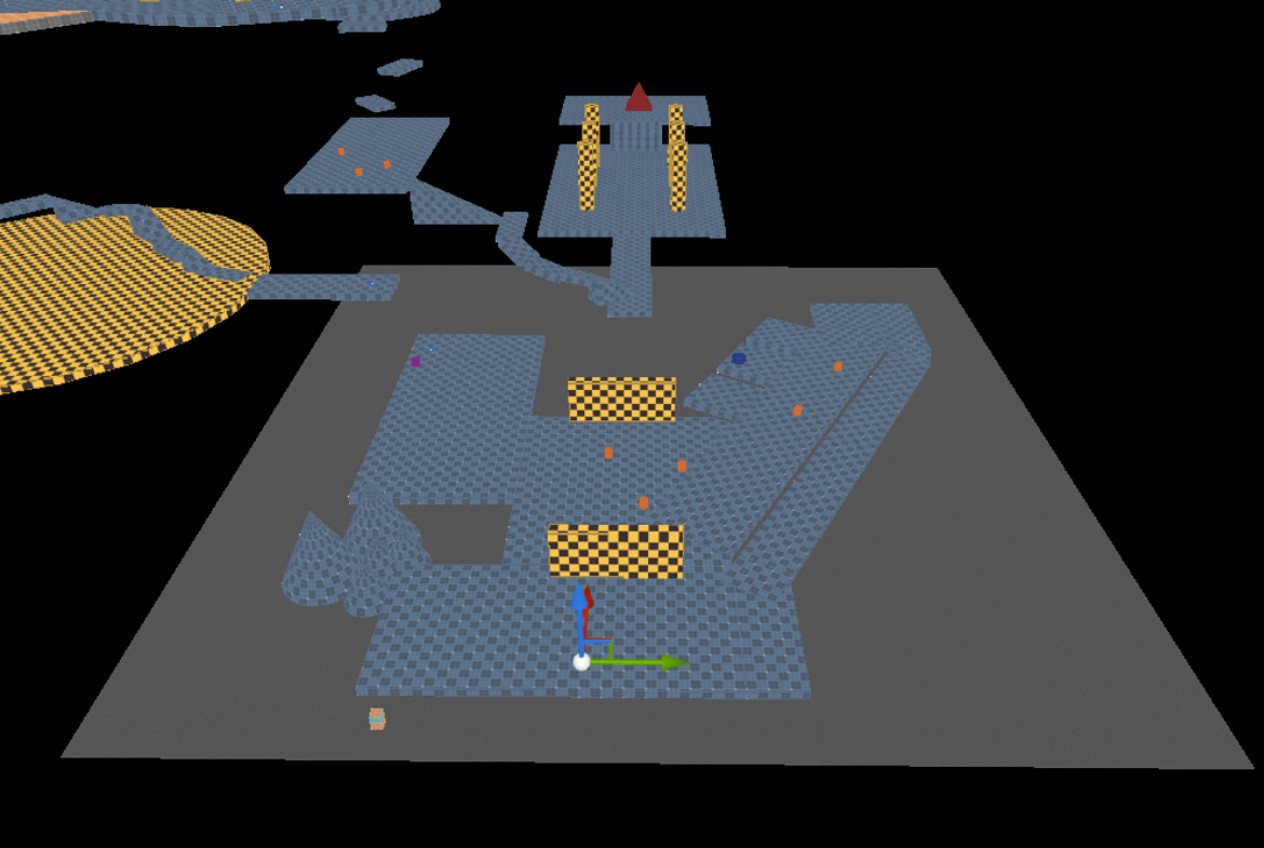
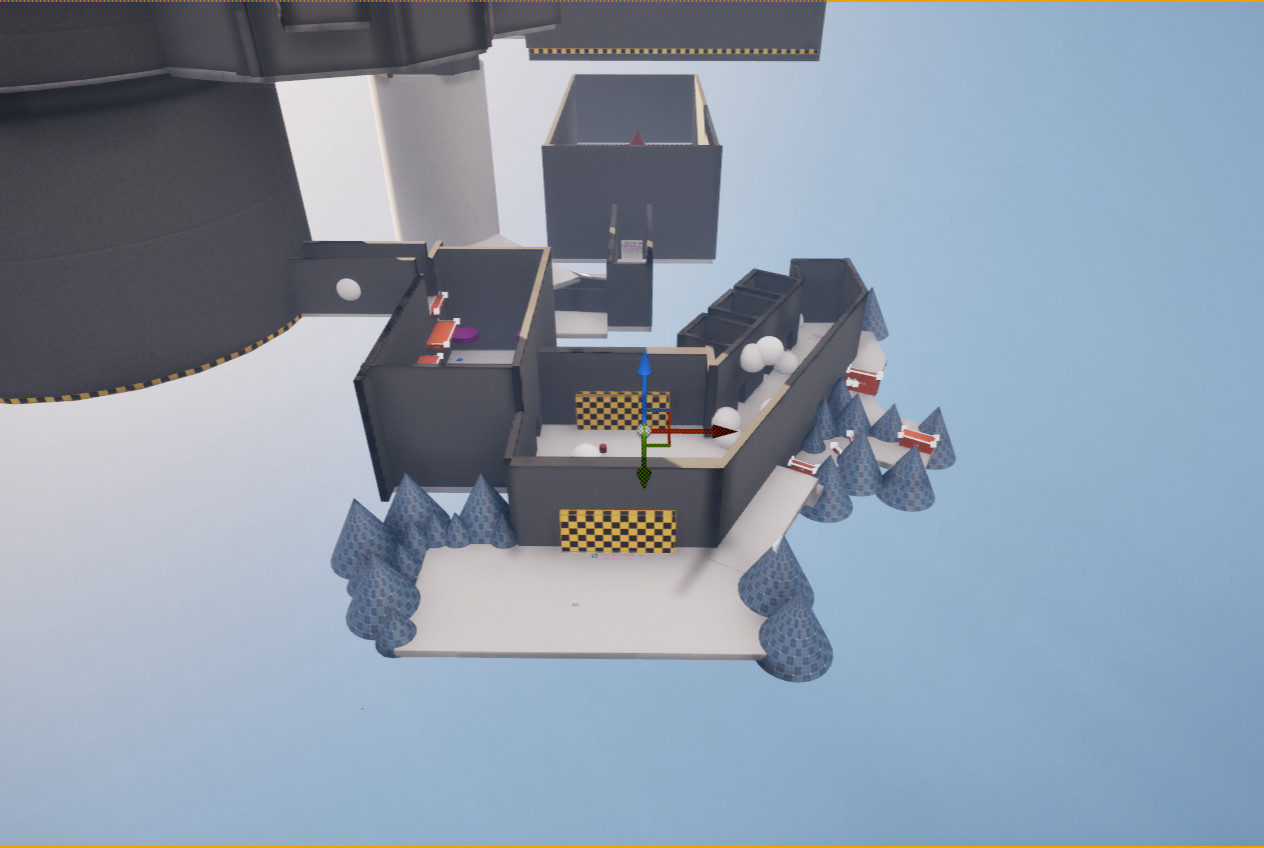
Results: Solidified sizing and physical constraints of the level
- Walls and ceilings constrain and solidify sizing throughout the level
Feedback & Problem: Players are unable to figure out the correct path forward as well as how big some areas are. The lack of walls and ceiling are preventing the spaces from being solidified to the player.
- From bootcamp colleague Steven (see playtest footage)
Solutions:
- Construct walls following the floor path for the first and second floor using cubes.
- Mirror floors with ceiling cube meshes
- Organized outliner to separate ceilings and floors for both the first and second floor of the level.
Other Iteration changes:
Adjusted kitchen and tower platforming because certain areas were unfair for players to jump on.

Added narrative text and props due to some game events and areas being unclear to players.
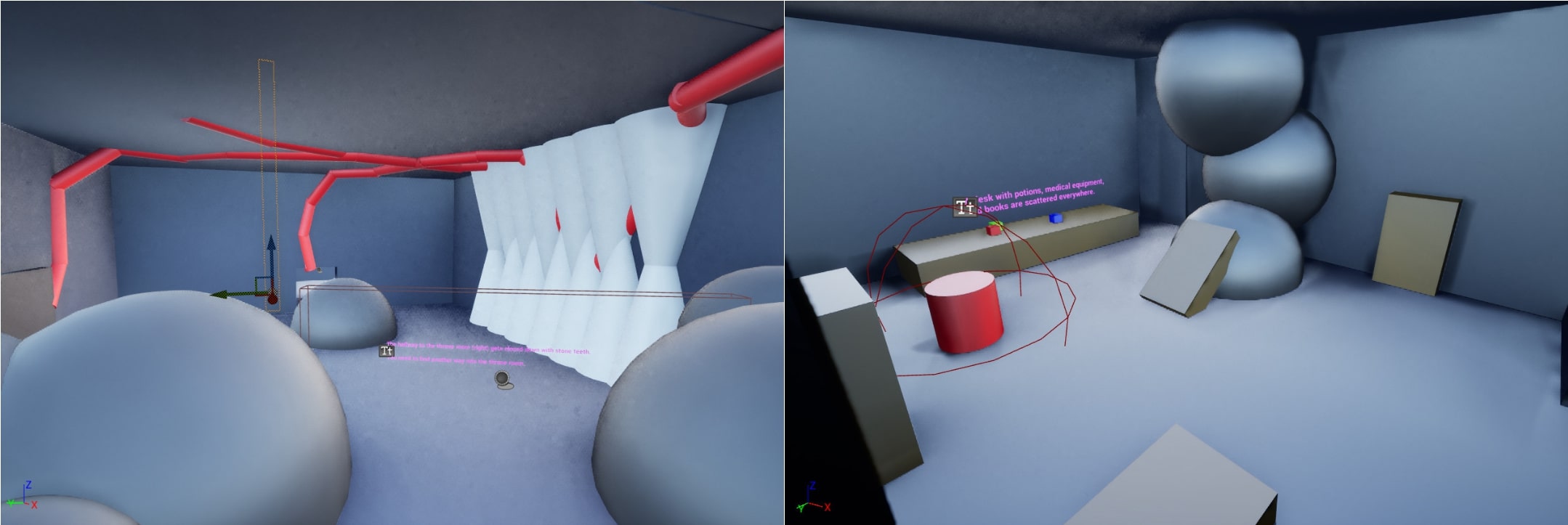
Replaced teleporters with moving platforms for the second-floor stone hands to clarify the hazard’s behavior and reduce player confusion.
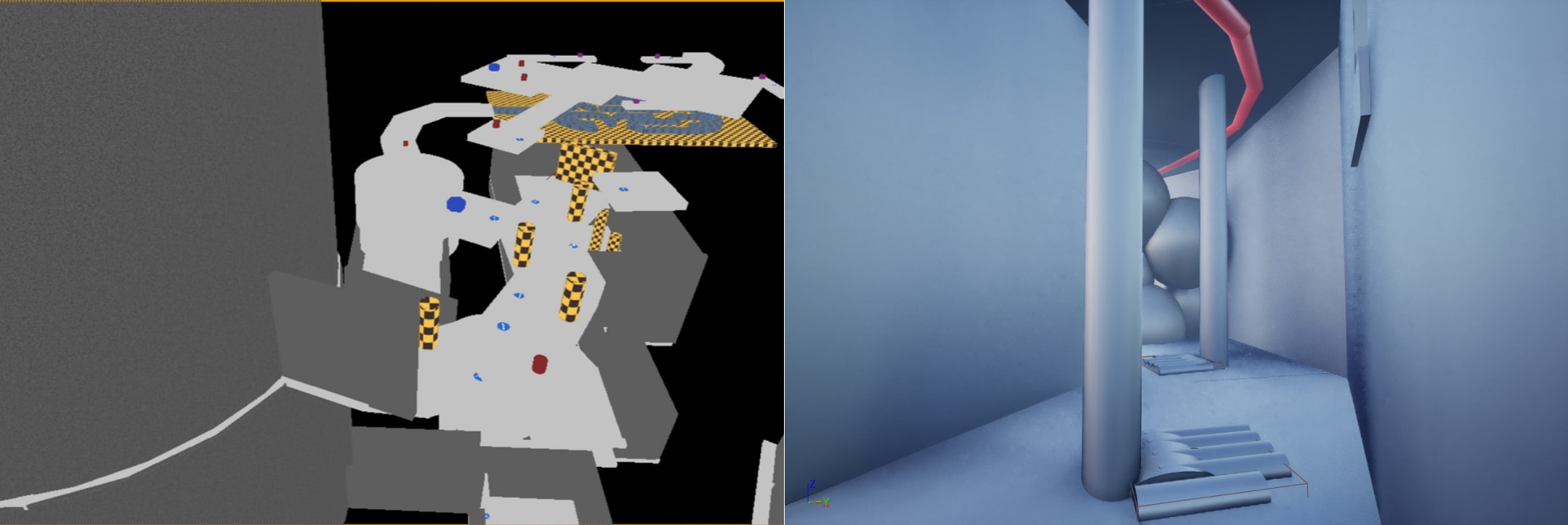
Edited the parent bedroom to frame where the hidden exit is instead of directly telling the player to make them feel smarter for discovering it.

Made mandatory pitfall on the second floor a surprise instead of visible to engage the player further.

Edited directional lighting and skybox to be darker with cooler colors to better communicate to the player the mood and tone of the level.
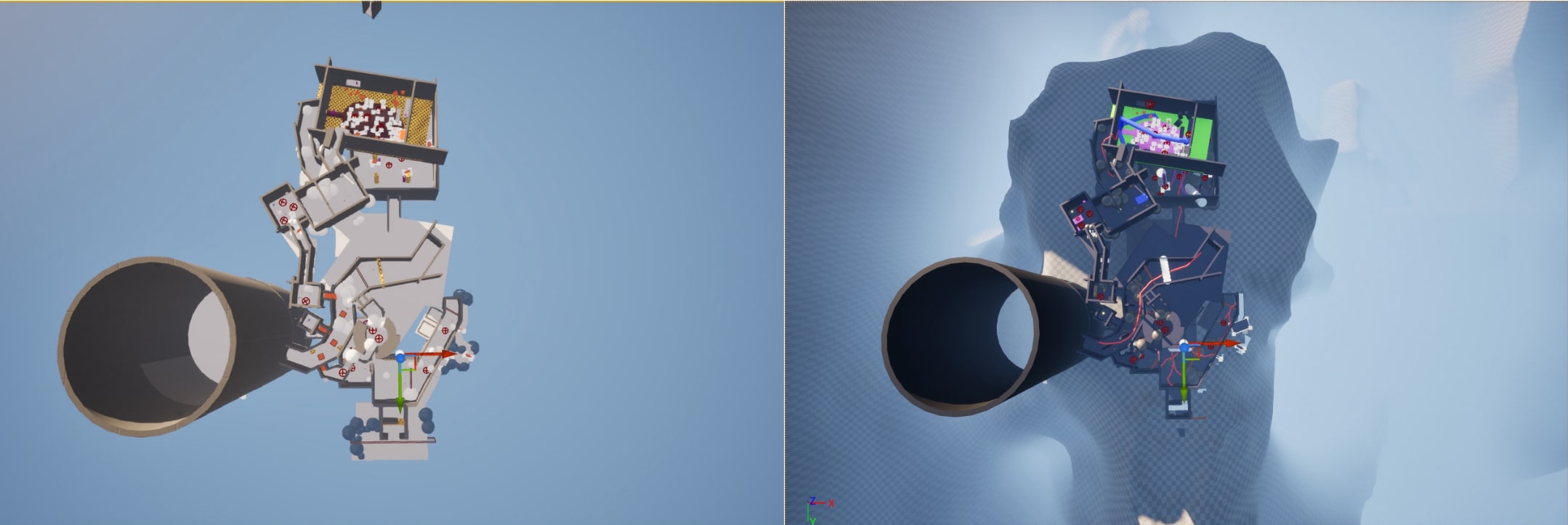
Changed object material colors throughout the level to communicate danger to the player more efficiently.
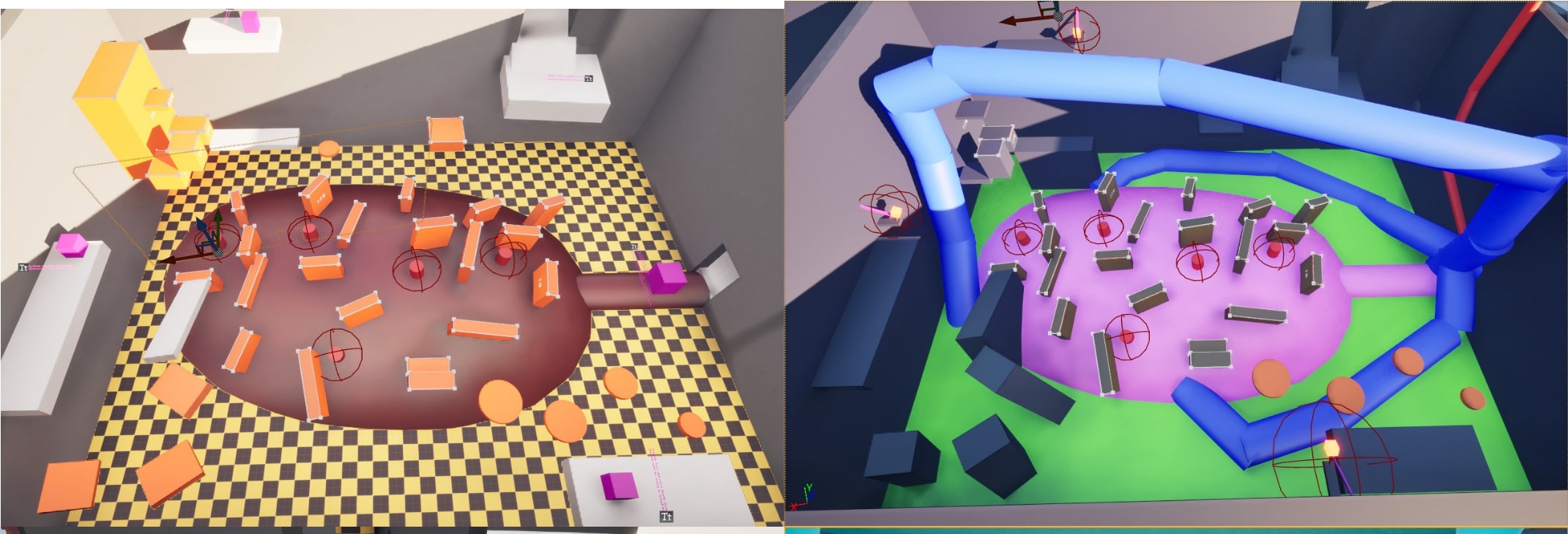
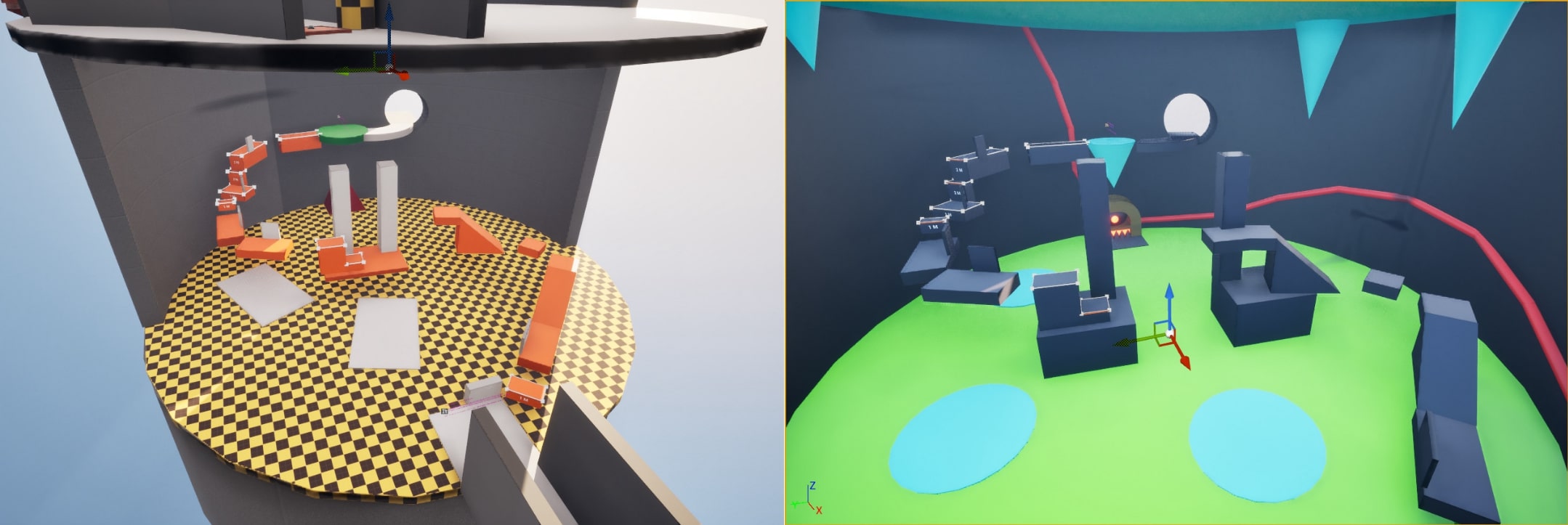
Due to player confusion, all platforms that require jumping or mantling were changed to Orange to clarify their affordance.

Sculpted terrain to better convey the environment after players found previous outer-area objects confusing.



